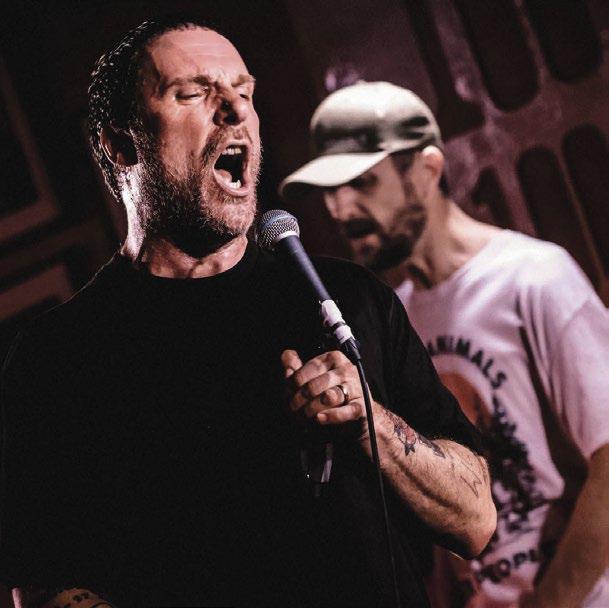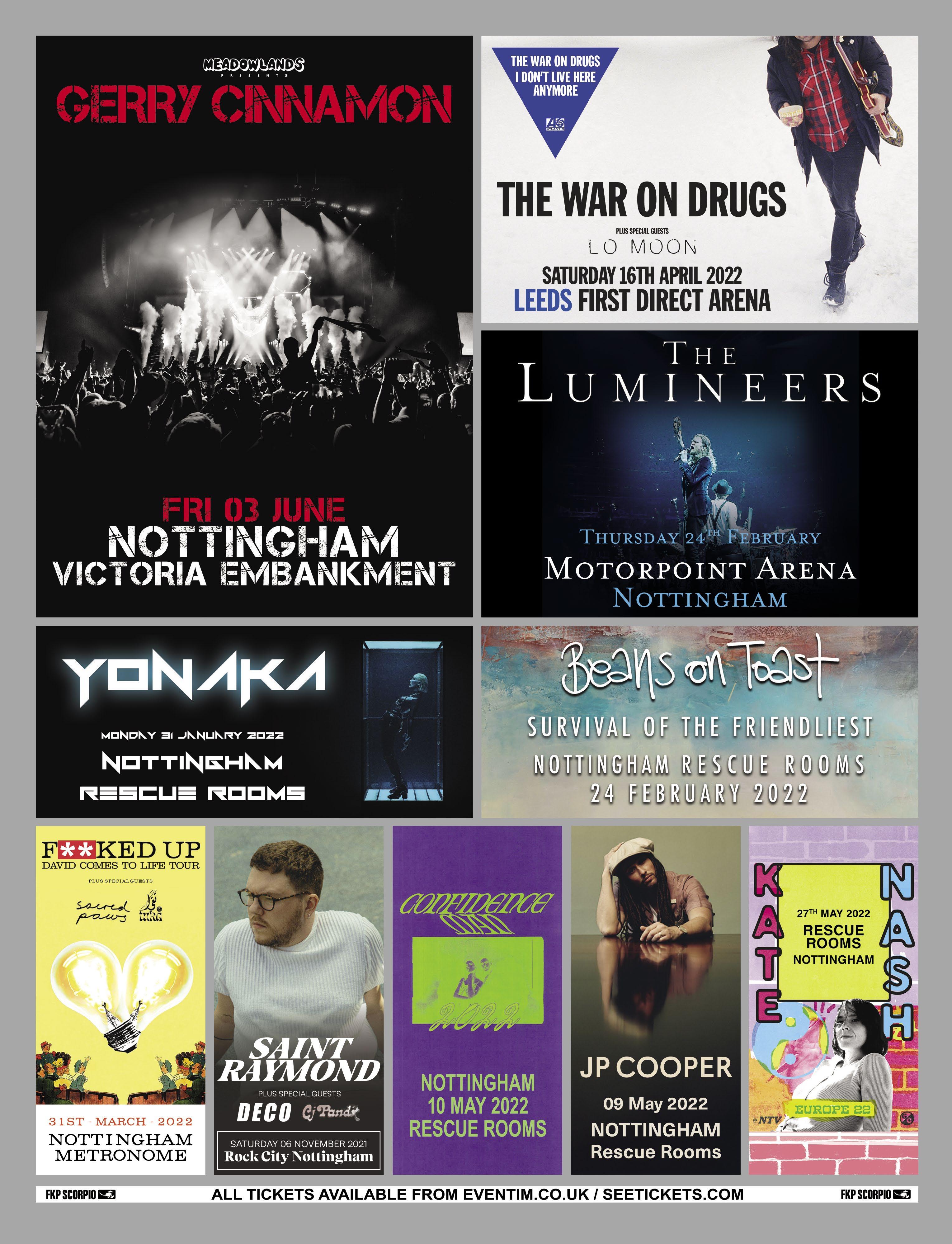














Goose Bumped
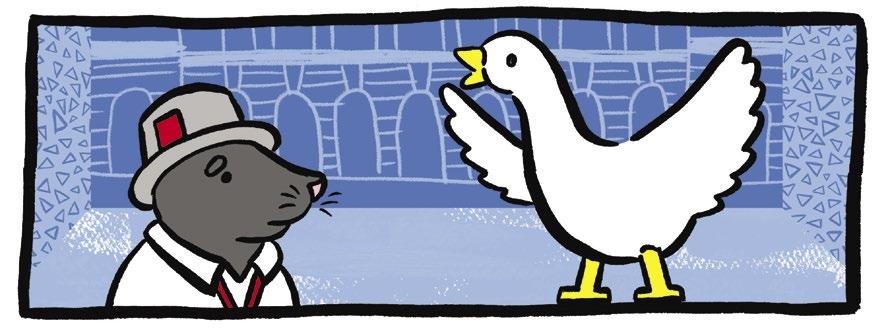
Old Goosey might have been called off again this year for Covidial reasons, but lucky for us, the brains behind the Fair still managed to treat us to the best bit: the opening ceremony. I know what you’re thinking, why have an opening ceremony for something that isn’t opening? The glamour? The prestige? The palpable sexual chemistry? Beats me.
Brain F-Art
The Nottingham Project had an absolute stinker when they held the official unveiling of a mural depicting Britain’s first black magistrate, Eric Irons OBE, despite the fact that it wasn’t finished, and artist Honey Williams wasn’t invited. Nice one lads. A grovelling apology soon followed, but this mole has his first nomination for the 2021 ‘Beansed It’ Award.
Don’t Scoot the Messenger
I hate them yellow scooters. Honestly. I hate them. You know who else hates them? Holly Jackson. She fell off one and busted up her face, leaving her anxious about being seen in public. So anxious, in fact, that she sent a photo of her mangled chops to the local rag, who duly printed it. Shameless. Almost makes me glad they sacked me.
illustrations: Kate Sharp


Bonfire Night

Normally we’d all meet up for a few drinks and go and watch the display at the Forest Rec. But it’s not happening this year again, is it? So we’re having fireworks at home and a small bonfire. A handful of friends are coming around to celebrate with us. We’re going to get hold of some of that toffee that pulls your teeth out and serve up hot soup and chicken legs. We’ve not done it like this for years. It should be marvellous.
Squid Game
We don’t know what that is, but there was a bloke at school who we used to call Squid. Is it a TV show? Hmmm. We prefer watching shows like M*A*S*H and The Likely Lads. We watched Bangers and Cash the other day too and we quite liked that. Our TV is so old that we still rely on a TV aerial. We were watching Who Do You Think You Are? with Judi Dench the other day and it just went blank half way through.
COP26
It’s that climate conference in Glasgow, right? Good on them. We like to do our bit and we’re quite up for getting an electric van. We need to wait for them to come down a bit in price though. Can they not just put catalytic converters into every exhaust known to man? Put them on top of every chimney on every building. Society today just seems so wasteful. Too many people waste too many things - including food. When we go for a meal we always finish it.
“It’s funny int it how uber toffs and uber stupid people voted Brexit”
“We're middle class now, I got us some kitchen roll in”
“Oooffft, I need a sit down after that stand up”
“I

“So I sez, Brian, have you soiled yersen? And he sez no coz he's a dirty bogger and a liar”


Does anyone else think it’s weird that people announce the weight of their baby when they are born?
It’s like someone being proud of ordering an 8lbs steak.
Plus, imagine we announced our weight as we age?
Happy 30th birthday Steve, you 13stone 3lbs legend.
“I'd rather die than carry my PE kit in a separate bag”
Man 1 “They sent William Shatner up to space. Do you think he Shatn’is pants?”
Man
2 “You’ve been practising that haven’t you.”
“I dunno! I'm not Gandalf you twat!”
“I’ve seen my fair share of Prime Ministers and I’m tellin’ ya, this one will sink us to the bottom of the bloody ocean. Right to the bottom!” - Old man talking to no-one in particular on the tram
words: Dani Bacon
illustration: Fiona Carr
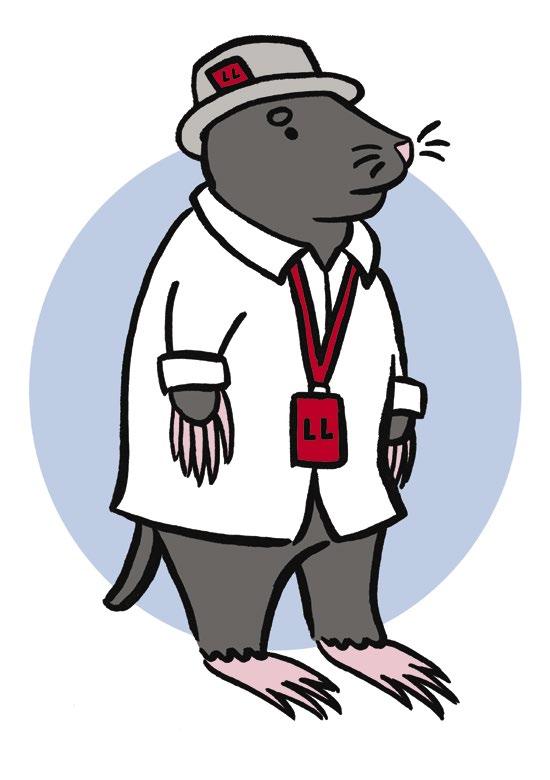

Our mole on the ground isn’t afraid to get his hands dirty to bring you the Notts stories you might have missed...
“These trees are old fam. I bet they’re older than your Grandma”
“I’malittletoo hungoverforthe now”Holocaustright
wouldn’t bow if I mettheQueen.I’d justbelike…allrite Queeny”



Here, you’re not stealing my spirit with that microphone, are you? Are you gonna start chanting incantations and doing voodoo?
I’ve been coming to the Cattle Market since I was a child. I used to buy chickens that I’d keep in my backyard in old St. Ann’s. I had a duck as well. They used to strangle them right in front of you. Oh, and I used to make pipe bombs. One blew me off my feet once, and the police came round saying that they’d had reports of an explosion. There was none of this “don’t try this at home” stuff then. I shouldn’t have said that. Delete that, will you?
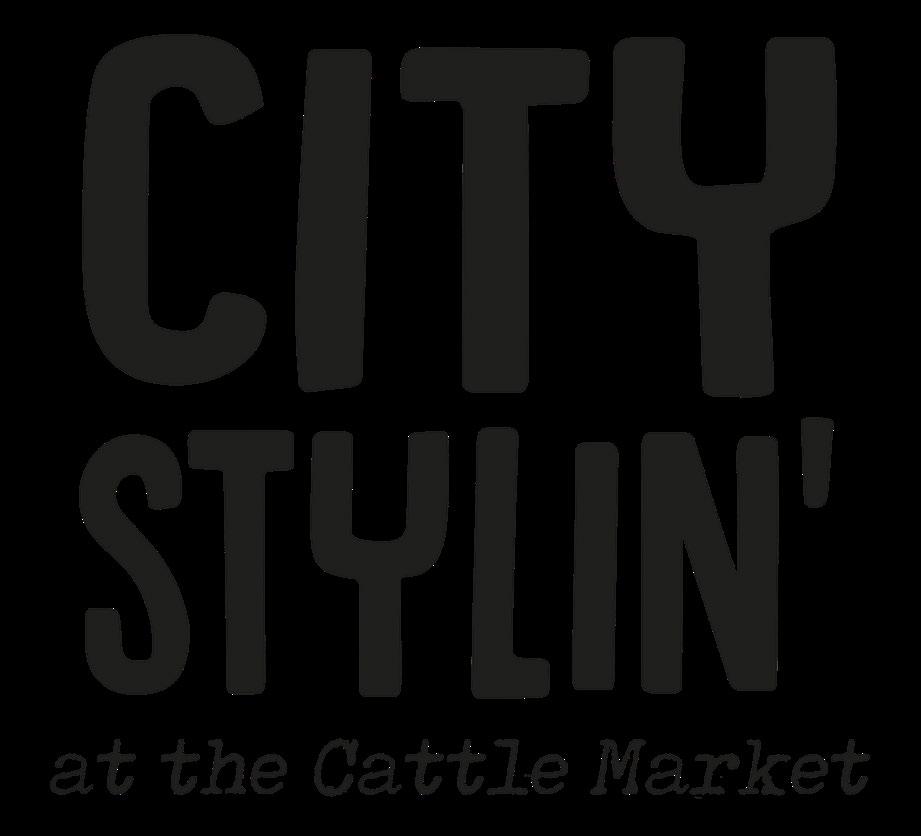

See, I used to shoot birds. I had a Diana .177 air rifle that I’d pop pigeons, sparrows and all manner of other birds with. When I was thirteen I spent ten bob buying an old Triumph Bonneville motorbike as well. You think that’s good?
My daughter was in the air cadets when this lunatic with a handlebar moustache had her flying an old Bulldog training plane. She was doing aerial acrobatics, looping the loop, defying the gravity, barrel rolls, turning the engine off and all sorts when she was only about twelve. After that she fell asleep while flying a glider. The droning sent her off, I suppose.
All I’ve bought today are these candles. All the nice girls like a candle, but some blokes like them as well. They’re good for meditation, don’t you know? I’ve tried to practise that more as I’ve got older. I was messing about on Mapperley Top when I accidentally did some Raja meditation.
You don’t believe me? That’s probably because I’m a pathological liar…


Ignatius

Film
Little Nicky
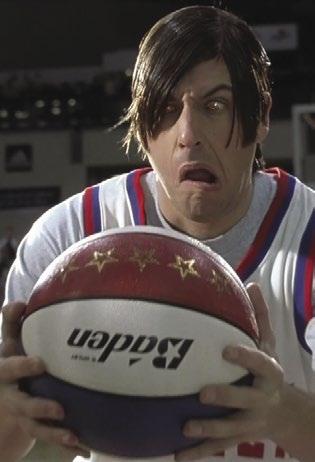
I know it’s not Adam Sandler’s best work, but there’s something about seeing Hitler with a pineapple in his arse that gets me every time. Rodney Dangerfield did a decent job as me and all..
Song
Sympathy for Me - The Rolling Stones

After surviving for millenia with like six songs on my iPod, I’d listen to owt, me. But this absolute bop gets my hooves tapping every time. Can’t wait for Keef to perform it live for me next year.
Book
The Bible Sike! Nah real talk I’m a fan of anything solid and plot-driven - Sally Rooney is my current go-to. I’m not adverse to a bit of non-fiction and all, that Richard Dawkins is an absolute prince.
Meal
Macaroni Cheese
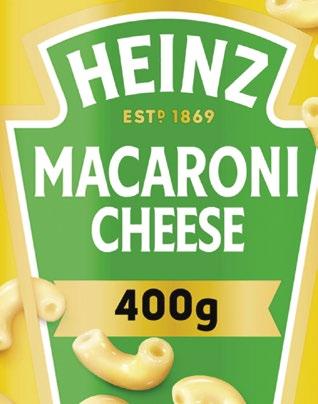
Call me Satan, call me the Devil, call me Beelzebub, just don’t call me late for dinner! Just playing. I love the Heinz tinned stuff. I’ll eat that muck cold, straight from the tin, no bother.

Notts Spot
Broadmarsh Centre

They paved paradise and put up a parking lot when they started to demolish that place. Wimpy, Dolcis, Decor Mecca, John Menzies. All gone. I’ve still got a couch from Witney knocking about somewhere.
Holiday Destination Limbo
Busman’s holiday, I know, but it’s nice to take a break from the serious stuff and have a gander around the first circle for a bit. All them baffled non-believers never stop being funny.
This month, we’ve tasked fallen angel and dark lord of the underworld Satan with picking a few of his favourite things...



Want to have your work featured? Send your high-res photos from around the city, including your full name and best web link, to photography@leftlion.co.uk
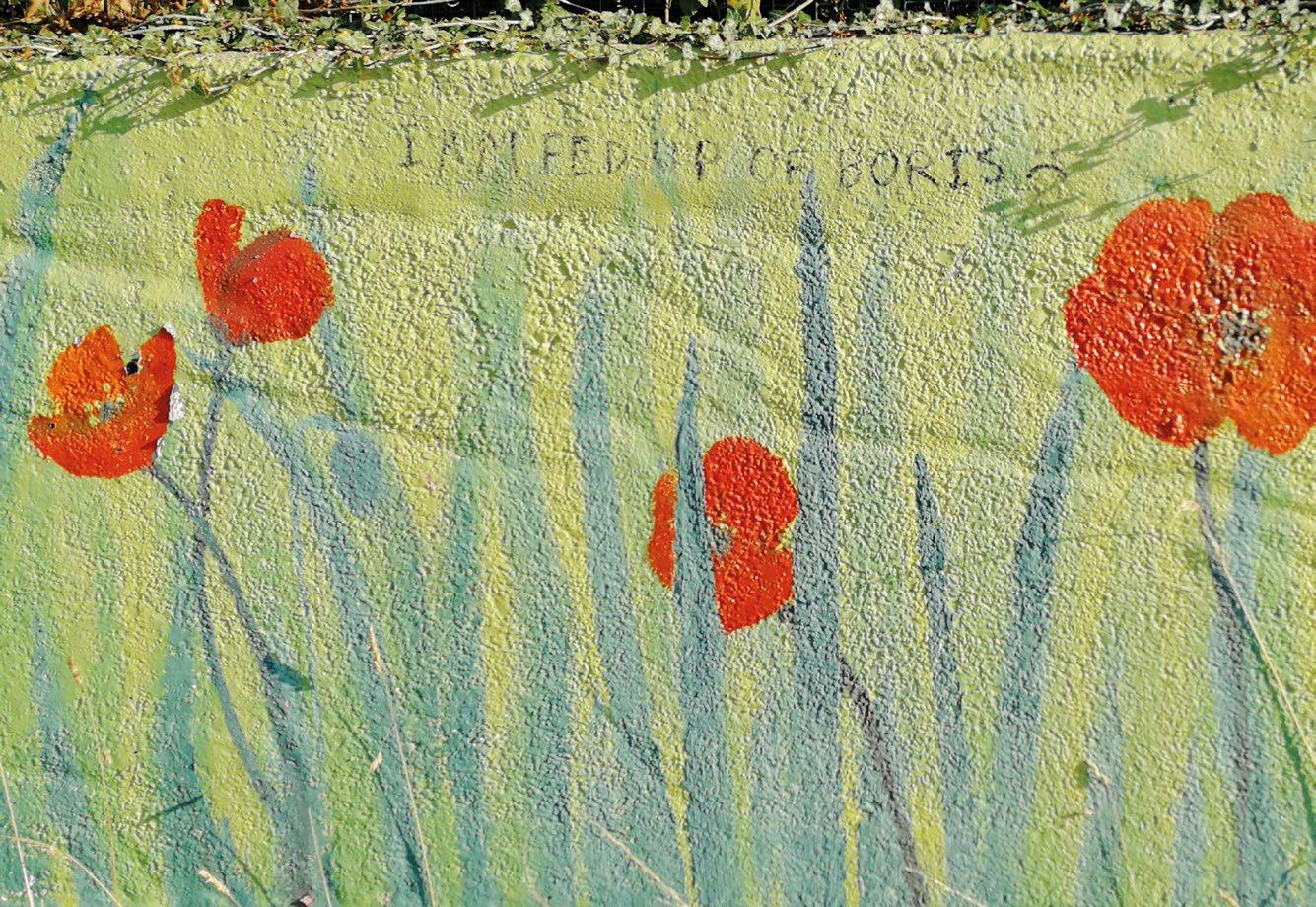


“For all her household are clothed in scarlet” Proverbs 31:21 Matt

“The sound of their wings was like the sound of chariots” Revelation 9:9 Tom Quigley - tomquigley.co.uk


“I am gentle and humble in heart, and you will find rest for your souls” Matthew 11:29 Max Peace - @thegospelmaker
“ You make the dawn and the sunset shout for joy” Psalms 65:8 Chung Keung Lau - @whykevinphotography

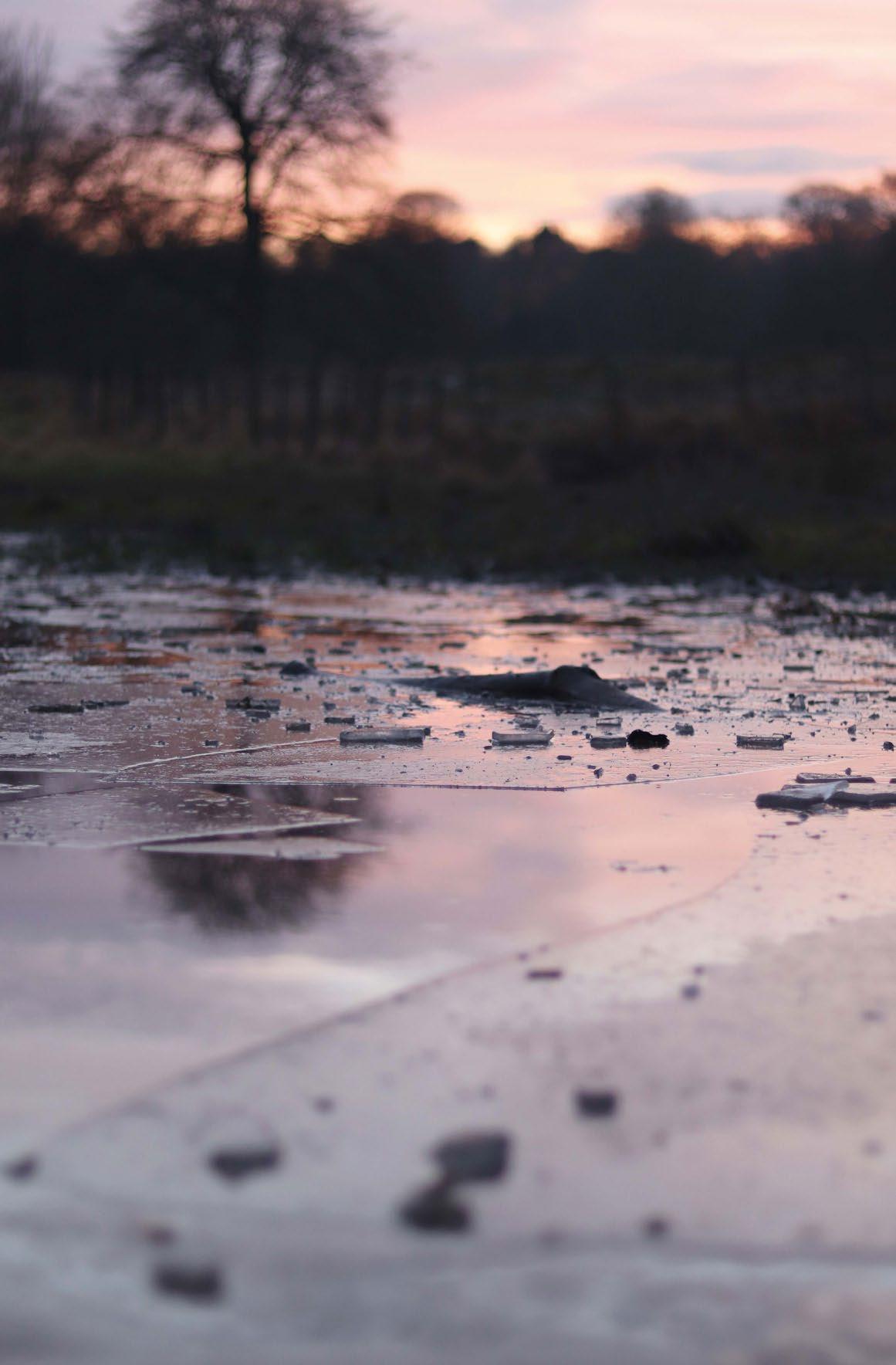
“Let us shout aloud to the rock of our salvation” Psalms 95:1 Nigel King - nigelking.photography



In keeping with the theme of this LeftLion issue, my column focuses on one of the seven deadly sins that impacts all of our lives: greed.

I’m not talking about scoffing that extra slice of cake instead of saving it for your flatmate, or your average person wanting a better salary to give their family a more comfortable life. What I mean is the greed of huge corporations seeking to maximise profits and super-rich individuals hoarding obscene amounts of wealth.

This behaviour is encouraged and rewarded by our economic system. As the environmentalist George Monbiot put it, “At the heart of capitalism is a vast and scarcely examined assumption: you are entitled to as great a share of the world’s resources as your money can buy.”
While a tiny minority grows ever-richer, the consequences for the rest of us are devastating. The climate crisis is one symptom. For decades, fossil fuel companies have polluted and destroyed our planet, while lobbying to prevent legislation that might hit their profits.
The lifestyles of the super-rich are also to blame - the wealthiest 1% produce double the combined carbon emissions of the poorest 50%. The marginalised communities, particularly in the global south - who are least responsible for climate breakdown - will feel the worst effects, while the rich pay to escape the destruction they have caused.
We have been told time and time again that “the market will sort it out”, but leaving it to market forces got us here in the first place. The Government needs to abandon its ideological obsession with free market economics and invest in a Green New Deal - a just transition to a low-carbon economy.
Pharmaceutical giants are another example of corporate greed. Earlier this year, Boris
Johnson said that the success of our COVID vaccine programme was because of "capitalism" and "greed". This isn’t true - it’s thanks to the public money that funded vaccine research and the NHS that got vaccines into people’s arms at speed.
Instead, capitalism and greed are preventing the vaccine from reaching countries that cannot afford the hefty prices demanded by pharmaceutical companies aiming to increase their profits. This pandemic will only end if enough people are vaccinated worldwide, but three-quarters of doses have gone to just ten countries.
and their combined wealth has grown by over a fifth - or £106,500,000,000.
We are told that hard work earns you money, but that isn’t the reality. Our economic system allows assets (like property and money) to multiply just by sitting there, while work simply does not pay. That is how billionaires are created.
To illustrate just how unimaginably wealthy these people are, if you spent £1,000 every day it would take 2740 years for you to spend a billion pounds. Such wealth is obscene and unjustifiable while millions live in poverty.
The Pandora Papers exposed that $11 trillion to $36 trillion is in offshore bank accounts. No tax is paid on these hidden fortunes, depriving public services of vital funds. Corporations dodge tax too. Last year, Amazon paid only 7.5% of its income from UK sales in tax. Compare that to a graduate on an average starting salary, who will soon pay almost 50% of their income in tax.
Extortionate prices are also denying people in the UK with hepatitis C, breast cancer and other illnesses vital drugs as the NHS cannot meet the cost. Corporate greed is the problem, not the solution - and people are dying as a result.
We can see the effects of greed on Nottingham. Our city has some of the highest levels of poverty in the country - it ranks eleventh out of the 317 districts in England for deprivation. During the pandemic, many have seen their finances plummet as jobs and income were lost. Now, families on Universal Credit have lost £1,000 a year while food and energy prices soar - after a decade of savage cuts and stagnant wages.
Yet while working people have got us through the pandemic and suffered in the process, others have cashed in. The pandemic has spawned more UK billionaires than ever before
Instead of accepting greed and inequality as inevitabilities, we should be eradicating them. We should be taxing the richest - and closing the loopholes that enable tax avoidance - to redistribute the hoarded wealth passed down from generation to generation, growing and growing, at everyone else’s expense.
We should be regulating huge corporations to put people and the planet above narrow interests. We should prioritise public ownership of key sectors so they are run for public good rather than profit. We should invest in a Green New Deal - restructuring and decarbonising our economy, while creating well-paid, secure and sustainable jobs.
A society built on justice, not greed, is the one I am striving for. I have hope that we can build it.
nadiawhittome.org
We should be regulating huge corporations to put people and the planet above narrow interests

I was watching the recent Fury/Wilder fight when the commentator mentioned that famous Mike Tyson quote: “Everyone has a plan until they get punched in the face.” It struck me as relevant to what I do because, no matter how logical, antireligious or non-spiritual you think you are, it all goes out the window when you or someone you love gets possessed. When that happens, all bets are off.
People think of exorcists and they imagine an old priest donned in his black robes, clutching a rosary and shouting, “The power of Christ compels you!” like the famous film scene. Unless I’m mistaken, there are still exorcists from religious institutions that will help members of their congregation who are experiencing a possession, but I’m not part of all of that. I believe in a ‘god’ of some sorts, but life has taught me that there is good and bad in everything in the world, and that includes spirits. I don’t perform exorcisms in the name of Jesus Christ, and I don’t think that it’s the Christian idea of the Devil that’s inside people, I just think there are negative spirits that, once inside you, can cause you to do significant harm to you and those around you. And just like you would do with a tumour or a gangrenous limb, you’ve got to get rid of them.
The most important thing to understand is that no two exorcisms are the same. I’m not like a repairman who just pops round, quotes for a job and then does it on his next free day. There’s a pretty lengthy process involved during which I get to understand the context of the problem, and we go from there. Most of this involves ruling out physical or mental illnesses, which people can self-misdiagnose as a possession. Traditionally, religious exorcisms can be quite violent – the idea is that you want to make the ‘demon’ as uncomfortable as possible in order for them to leave. I take a much softer approach, as I believe that the negative spirits can often be as confused or frightened as the people they’re possessing. I say people, sometimes it can be animals or objects too. It might sound stupid to you, but I’ve had books, cars and pets possessed by negative spirits before.


Dogs are particularly susceptible, because their patterns of behaviour can change so drastically in the space of a day.
Consent is also hugely important, which is why I tend to avoid young people or animals if I can. Even though my methods are non-invasive and non-violent, possessed people find themselves in an incredibly vulnerable place where less well-intentioned people could comfortably take advantage of them. That’s why I spend a lot of time with them, and build up a level of understanding and trust before we even begin to talk about the process of exorcising them.
and were bloody violent and often resulted in the possessed person losing their life or, if they were lucky, only suffering serious physical injury. But we understand these things a lot more now, so we treat them differently with a more compassionate, rational approach.
Social media has been a blessing and a curse. At first, it helped me a lot with meeting like-minded exorcists, as well as finding people who needed my help. But a few years ago it felt like everything changed, and people got far more negative. I was getting calls all the time, horrible emails, people spamming my pages with all sorts of nonsense. So I try to limit how much exposure I have to it now, for my own wellbeing as much as anything else.
My previous job involved a lot of talking to the public in a sales capacity, and I feel like I’ve been able to transfer those skills into my approach. It’s often the case that, while burning sage, I hold the person's hands and talk to the spirit that’s possessing them. I negotiate with them and try to understand their needs, and why they’ve decided to possess a person. It’s like any medicine in that sense. The more we understand an illness the better we are at treating it. If you look at surgery, say, five hundred years ago, we’re talking no anaesthetic, no real understanding of what the surgeon was doing, and not much chance of survival. Exorcisms were the same,
I guess people are more sceptical now, which might well be a good thing when it comes to the Government or organised religion, but I think maybe it’s gone too far. We’re arrogant in thinking that we can explain everything in this crazy world we live in. You know, if you’d told an Ancient Roman that we’d be whizzing through space on a rocket they’d probably have had you crucified. But there are plenty of religious organisations, and I’m talking about the big boys here, that still dedicate time and resources to training people for exorcisms. Also, the idea of people being possessed has existed in pretty much every society throughout time, so there must be something to it, don’t you think? Even if you pride yourself on being really sceptical, you must admit it’s too much of a coincidence to not have some merit.
I definitely don’t make enough money from this for it to be a full-time job, but it’s definitely my passion. I like to think that I’m making a difference and helping people. You know, I might charge £100 or so per session, which is relatively cheap compared to some people I know working in Europe, but it’s never been about the money. If, when my time on Earth is done, I can look back and think I did some good, helped some people and assisted in freeing some negative spirits, that’ll be more than enough for me.
illustration: Kasia KozakiewiczWe’re arrogant in thinking that we can explain everything in this crazy world we live in. You know, if you’d told an Ancient Roman that we’d be whizzing through space on a rocket they’d probably have had you crucified
The Audition I told them I was going to have a pizza party, but they said no. Then I said I was going to make banoffee pie for pudding, but they said no. They suggested I make ice cream, so I was like yeah, why not? The researcher helped me a lot, because she basically convinced me to make a load of stuff I didn't know how to make so I'd get on.

The Evening Each evening takes about six hours, and you just sit around getting battered. I was really lucky to go first, because by the fourth evening everyone was knackered and marking a bit more critically. You only get £120 to spend and I spent half the money on booze. I thought if they were drunk they'd enjoy themselves no matter what. The night drags on because people get taken out to be interviewed individually. If things got a bit boring they'd take us back to a controversial conversation topic we were having earlier. I think they don't really want you to get on with each other
The Messy Flat I wasn't prepared for it at all. My flat was so messy that the production crew had to help me clean up before people arrived. But I made sure I got loads of product placement for my brand - I had a t-shirt, jumper and a jacket with my slogans on. My online sales definitely went up afterwards.
The Controversy I ended up coming joint-first, which I'm still a bit pissed off about. I gave quite a low mark to the guy I ended up tying


























with. The producer pulled me aside and said that I seemed to have enjoyed myself, and that I was in danger of setting a bad precedent if I didn't give him a higher score. But his food wasn't very good! Anyway, we ended up having to share the money.






The Aftermath People recognised me a bit, but mostly they didn't know where from. I wish I'd been single at the time - I could have used my fame for a bit! I actually stayed in touch with the researcher. We were at the same house party and ended up going back to hers. We did the deed, but I had to get up really early the next morning for a market in Brick Lane. We didn't use protection, I didn't have cash on me and I was still a bit drunk, so I ended up writing her a cheque for £20 for the morning after pill and left it on the bedside table. I massively regret it to this day. She text me calling me a dick and that was that. Absolutely gutted.



Great British Bake Off - Series 5


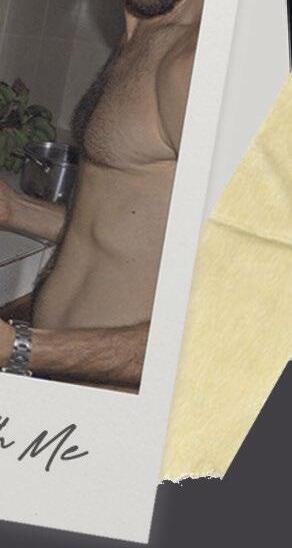




The Application




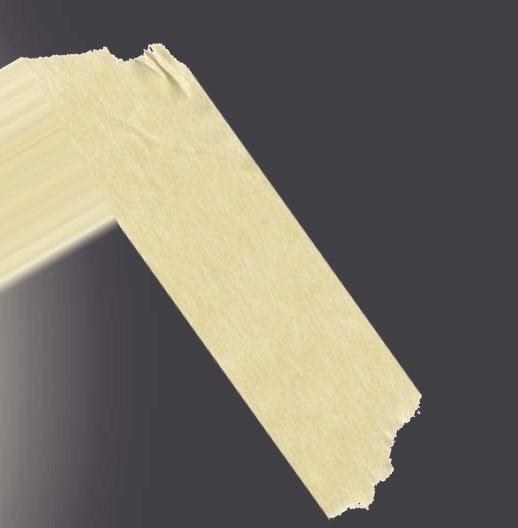
















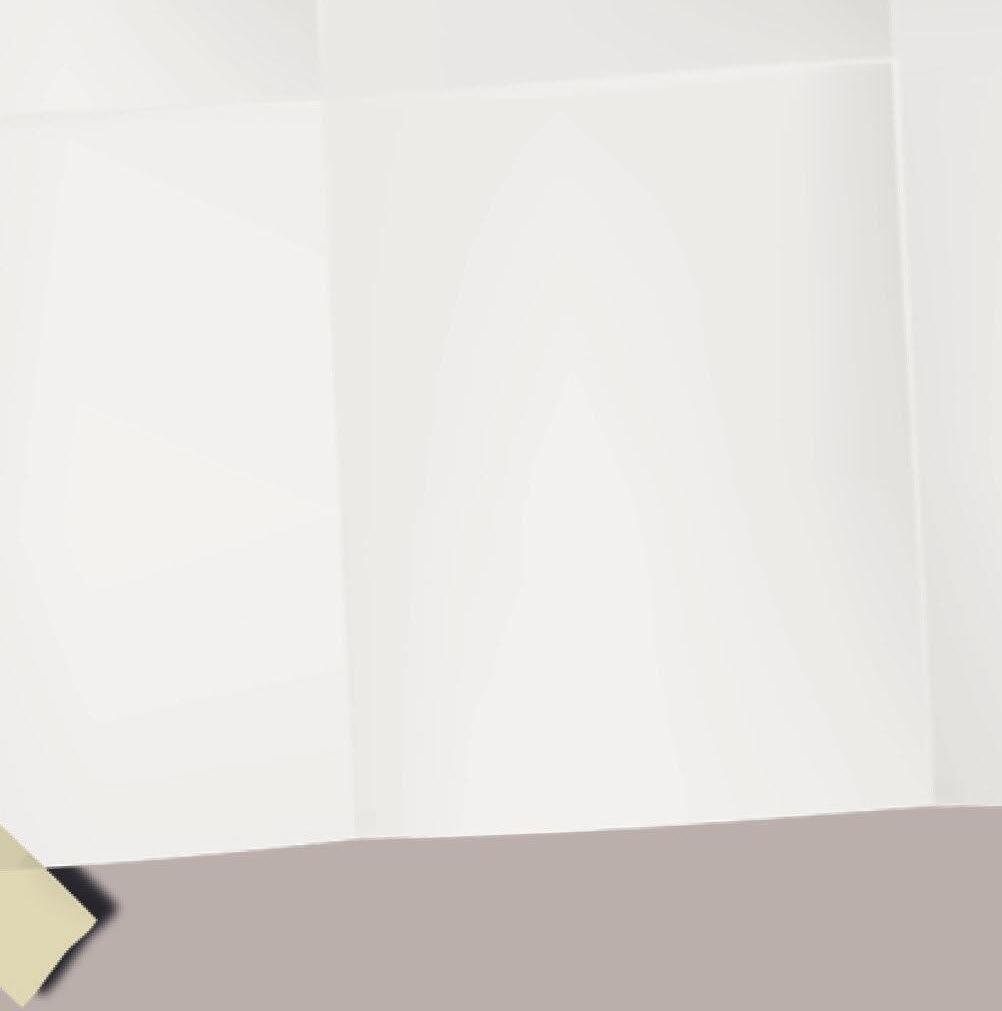
























I've never wanted to go on TV before - I'm not a fame hound at all. As a general rule I'm a very private person, but it just seemed like a really silly, lovely thing to do. Unlike other shows that might be more about your personality, Bake Off is very much about whether you could bake.
The Right Stuff



The producers were really keen to make sure that no-one who went on was fame hungry or doing it to get some sort of TV career. Even the people that have become famous off the back of Bake Off were the people who were underdogs, and didn't really stand out at the beginning.

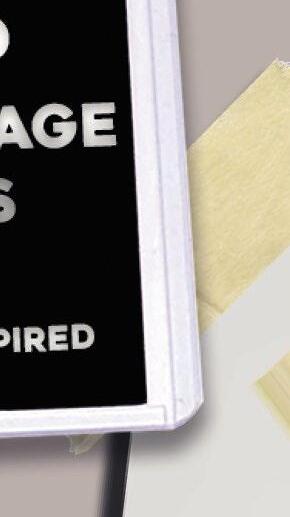




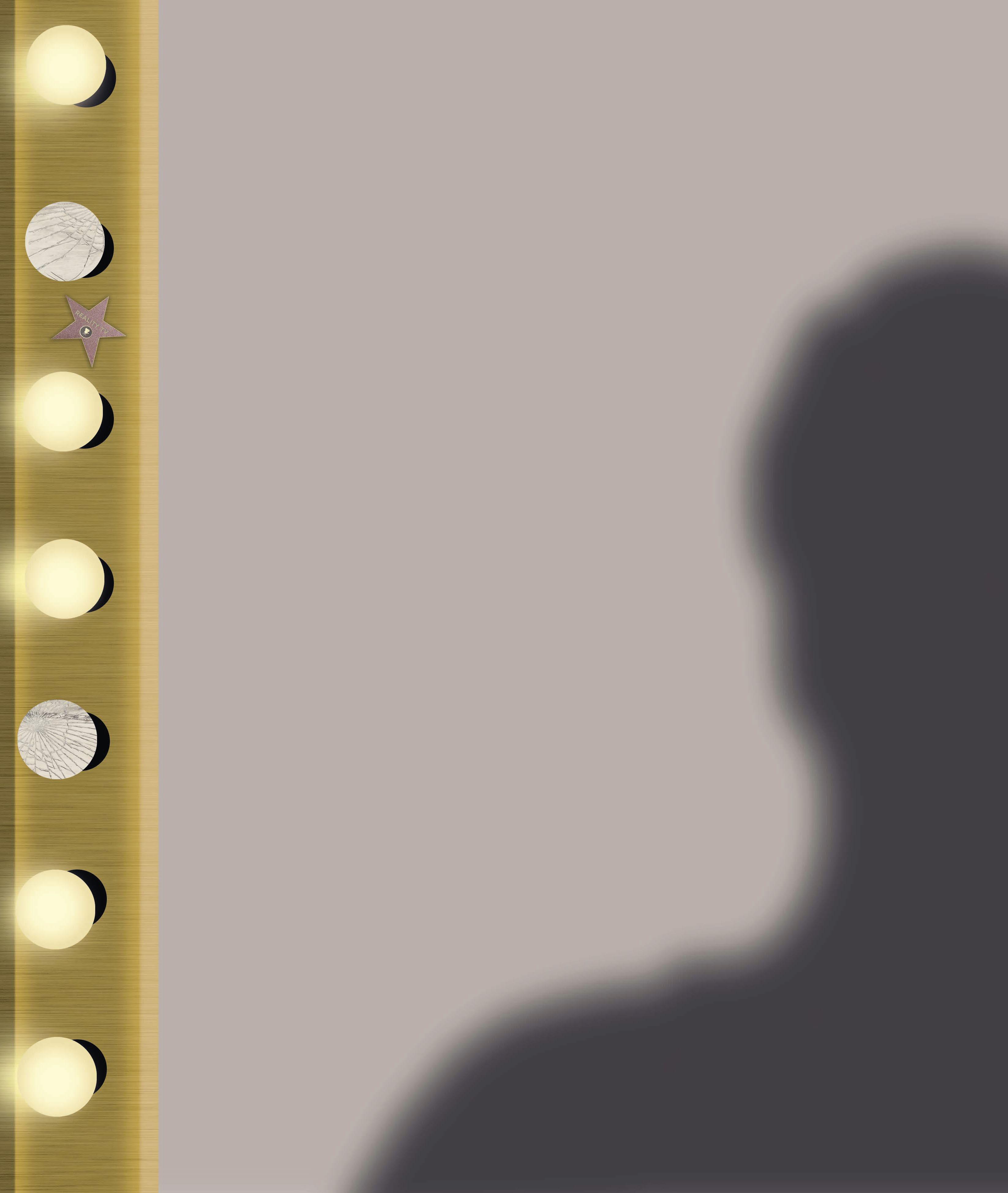
The Press
It was still a really tiny show, which seems crazy now. But my series was the first to move to BBC1, where 13 million people watched. A guy from the Mail camped outside my front door as my wife's father had just died. He was a proper Beano- esque reporter with a long trench coat asking stuff like: "I hear your

wife's father just died. Was it a slow death?" It was like, hang on, I just wanted to bake a cake. The BBC very specifically told us that this wouldn't happen, but two days after that we were on the front page of The Mirror, the Daily Mail and



The Attention
About three years after the show had been on I was getting off a bus at Victoria Station when this guy came up to me saying, “Alright Jordan, you don't recognise me do you?" I had no idea who it was. Turns out he'd met me three years earlier, asked for a photo and, for the entire time, had had it as the background on his phone. That was a lot to take in!
The Global Impact




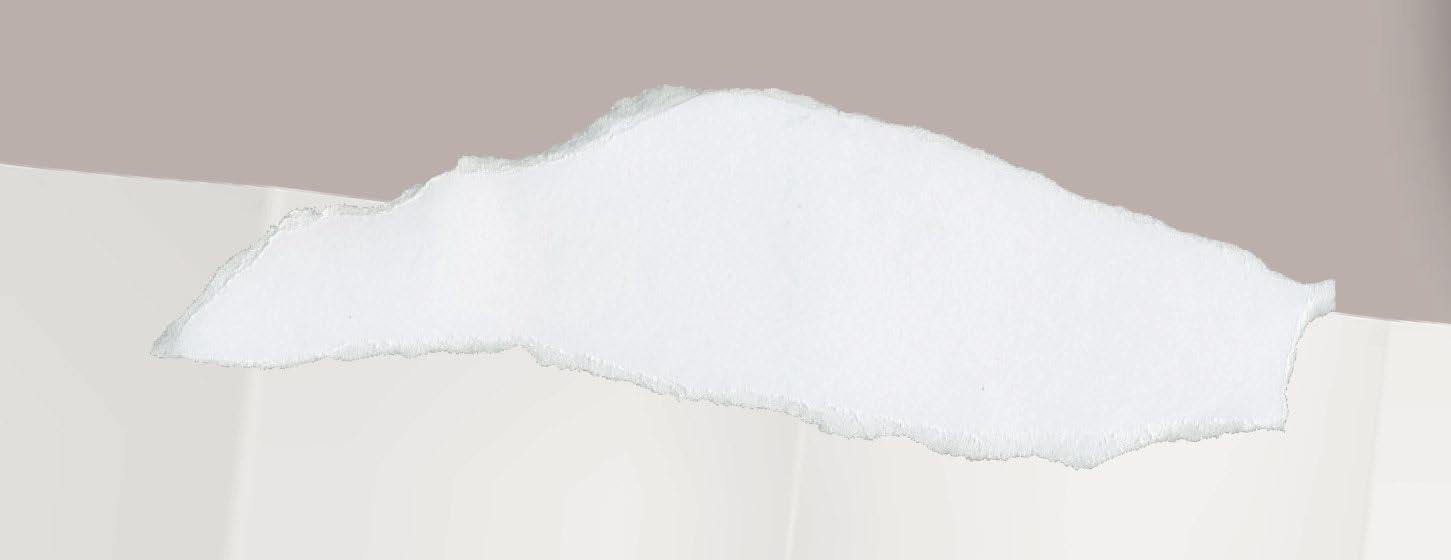




My wife and I got married in Las Vegas, and spent a few days in LA afterwards. One night we went into a vegan butcher on Venice Beach, and there was a girl who was levitating with excitement because she’d seen me outside - it blew my mind. We're talking five years after the show was on TV, on the opposite side of the world - why would she know who I am? But it shows how big the show's impact is. I ask myself, if I'd known how big it would have all gotten, would I still have applied? The answer is probably not. But that isn't to say that lovely things haven't come out of it. I made an effort to distance myself from it all a few years ago. I didn't want to be known as that guy who did that thing years ago.






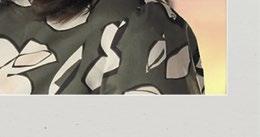




The New Concept Pete: We had already featured on a BBC show called Night a couple of years previously, and we had a lot of fun, so we fancied throwing our hats into the ring again. Emma: The X Factor was the first show to be billed that you could go on as an act bigger than one person, so we knew we could audition as 2 to Go. Pete: Even back then we were cynical enough to know that even winning on a show like this wasn't a guarantee of longterm success. We thought if we really went for it, it could open some doors for us.
The Waiting Game Pete: There was a lot more waiting around than we had realised. From the first auditions through the entire process, there’s a lot of time when you’re doing nothing and trying to keep some energy going, because at any moment you might have to spring into action and look animated on camera. Emma: We didn't spend as much time with our mentors as the show makes out. Ours was Louis Walsh, and we didn't see him from one week to the next, although we did have his phone number.
The Adrenaline Rush
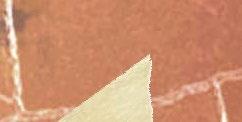
























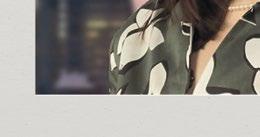






Going on live TV knowing that there would be millions watching was a big high, but it always felt like it was over way too fast. I think there's a lot of adrenaline going through you
interviews: Ashley Carter and Emily Thursfield illustration: Fiona Carr

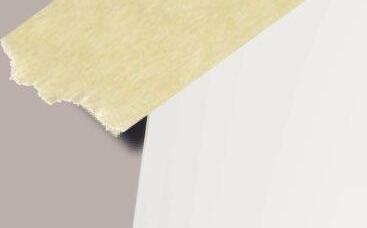










and it all seems to happen in a flash. and got the t-shirt.
The tour we got to do afterwards was by far the best part of the whole experience - we got to play to arena audiences of over 20,000 people. Pete: Ultimately, after it was all over, I think we both felt depressed. A bit like the long build up to Christmas, and then it's all over. But we always knew that we would still have our act and we would go on and do gigs and enjoy ourselves, as we still do today.
The Pete:Impact We had some brilliant gigs off the back of The X Factor,
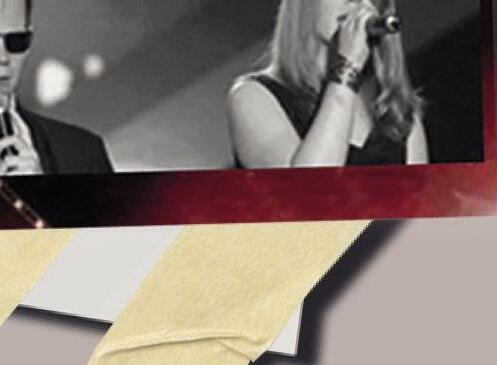








and we’d often find ourselves on the same bill as the top acts of the time.Emma: We were able to get better gigs and command a higher fee around the time of the show, so it definitely affected our working lives. We even did a stint on a local radio show as DJs. Pete: I'm very glad we went on the programme. That said, I wouldn't go on a programme like that now. People often tell me I should, but I'm just in a different place. I went there
Some wanted fame, some wanted success and some just wanted to have a bit of fun. No matter what their motivations, our Notts reality TV stars have all experienced the good and the bad of becoming almost famous...

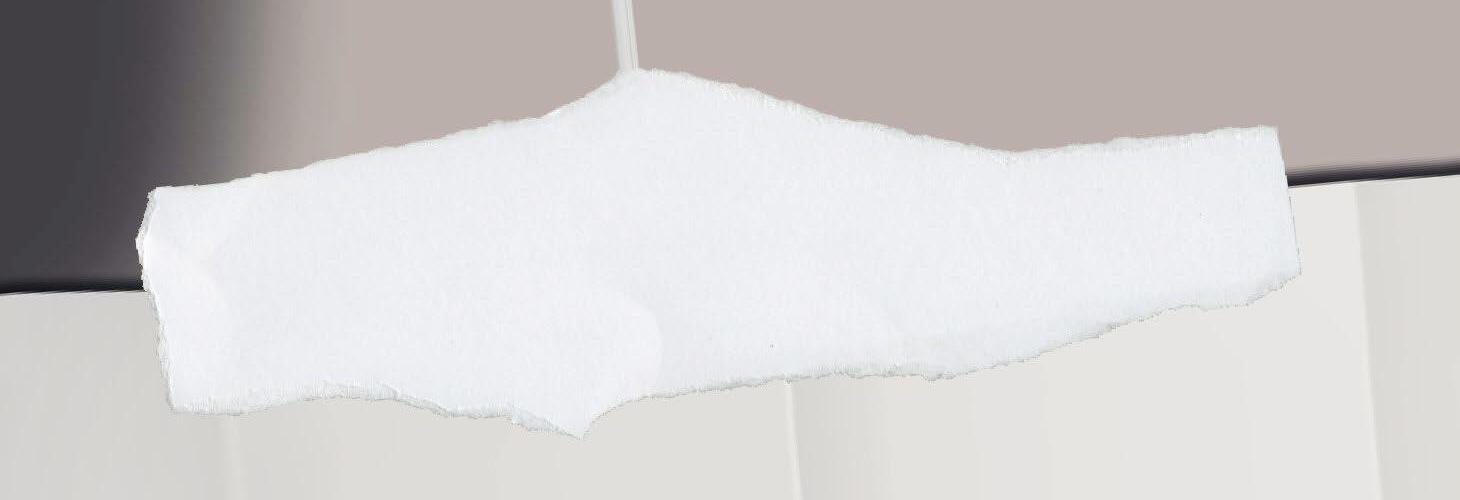
The Apprentice - Series 13


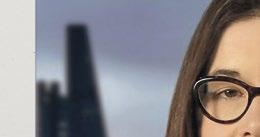

The Motivation The Apprentice to get the investment from Lord Sugar and win. End of. I didn’t see The Apprentice as reality television - to me that’s programmes like Big Brother and so I didn’t really realise exactly what I was getting myself into at the time. There was a selection of candidates who were there purely on the reality television track - they didn't really have a business concept, they just wanted telly exposure to see where that would take them.

The Editing Running around chasing chickens and all that stuff did actually happen - you’re not scripted in any way as to what you do. They’ll just lay something out in front of you, and leave you to it and film what happens. The difference between what I was experiencing and what you see on television is that what an individual says and means and how this can be perceived when the show airs can be very different.
say that when you see these reality TV people on their knees with depression, you should believe everything you hear about them being alone and under pressure.

The Rough with the Smooth For me, The Apprentice wasn’t social media. It was meeting the best group of people I’ve ever known, and going through an experience only a very small number of people will ever get to do. It was a really positive experience in my life. Lord Sugar shook my hand and told me that I represent 90% of the businesses in the country - the small businesses - and that I should be proud of how I’d represented them.
The problem with reality television is that people think you’re fair game for abuse. I didn’t have social media until the week before The Apprentice launched, and I didn’t know that there were people who just rage there. I found the more tongue in cheek things, like ‘She looks like David Walliams in drag,’ funny because I’m not the quintessential Apprentice candidate. I’m 6’2”, size 16 and never wear heels or dresses. But the nasty, more personal comments got to me. To be honest, that doesn't come from the wider Twitter community - the worst abuse I've had is from Nottingham people. I will
The Trolls
The Legend I'm going to say this with arrogance, but I'm probably the best Apprentice candidate of all time. There’s an ‘Elizabeth’ section in The Apprentice best bits, and I’ve had a music video dedicated to me. I've taken my business from a little shop in Nottingham to a national brand, and I wouldn't have been able to do that without taking the opportunity the show gave me.
Just over two decades ago Susan and Christopher Edwards shot the former’s parents dead on a quiet cul-de-sac in Mansfield. It took sixteen years before the truth came to light and the pair were imprisoned for murder. We take a look back at one of Nottinghamshire's most shocking crimes ahead of the release of Landscapers, a Sky TV series exploring this unbelievable story, later this year…
We all get a little greedy sometimes, don’t we? We might nab one too many Celebrations at Christmas time, or find a pound coin on the floor and spend it on a can of Coke instead of giving it to charity. But you'd think all of us would agree that murdering our own parents, pretending they’re alive for over a decade and using their ongoing pension payments to fund an overpowering obsession with Hollywood memorabilia would take things more than a tad too far.
Yet this was not beyond Susan Edwards and her husband Christopher as, in May 1998, the couple killed the former’s parents, Patricia and William Wycherley, at their home in Mansfield, in what then Detective Chief Inspector Rob Griffin described as a “cold and calculating” scheme to grab money they felt they were owed.
For the following fifteen years the pair forged letters to the Department for Work and Pensions, wrote fake Christmas cards to relatives and created bogus stories to tell to neighbours, all in the hopes of keeping hold of hundreds of thousands of pounds. It is a crime that shook Nottinghamshire and the country to its core when it was taken to court back in 2014, and a tale so peculiar it will be made into a Sky TV series starring the likes of Olivia Colman and David Thewlis later this year. And, above all else, it
was one seemingly motivated by little more than the craving for a payout.
It was the May Bank Holiday weekend back in 1998. Eurovision fever was ready to sweep the nation and Arsenal were edging their way towards a first league trophy since 1991. Yet on a small cul-de-sac in the heart of Forest Town, something far more shocking than a close title race was about to take place. Patricia and William Wycherley, a quiet, reserved couple who rarely spoke to neighbours or went out into the community, were to be shot dead by those closest to them.
During an intense trial at Nottingham Crown Court in 2014, Susan Edwards claimed she was woken by a bang on the Sunday morning and rushed into her parents’ bedroom to find her father lying on the ground and her mother holding a revolver. After a heated argument, Susan said she was provoked into pulling the trigger on Patricia, who told her she was an “unwanted child”.
A whole week passed, Susan went on to say, before she told Christopher the truth. The couple, a former librarian and a bookkeeper, claimed they had returned to their home in Croydon in that time, and it was only on their way back to Mansfield - as they stopped off for fish and chips - that she came clean


about what had happened. Once they arrived at 2 Blenheim Close, Forest Town, Christopher agreed to bury his in-laws to save his wife from a life in prison, and the pair said they watched the Eurovision Song Contest before dumping the bodies under the back garden. This was all a tragic misunderstanding, they claimed, an angry exchange that simply spiralled out of control.
But this is not how the court saw it, with the prosecution arguing that both were there at the house on that fateful night one week earlier. Furthermore, they believed Christopher himself had pulled the gun on both parents; as a former gun club member, he appeared to use a Second World War vintage .38 revolver with planned precision, with the shots seemingly too professional to have come from an act of self-defence. Neighbours also said they saw Christopher “up to his waist” digging in the garden over the weekend - well before Susan claimed he had found out.
Rather than an unfortunate incident, this was considered a deliberate act of vengeance - after Susan felt swindled over an inheritance she believed she was owed. Over time, this slow-burning resentment grew into a rage, and in a pre-planned attack the pair would wrestle back what they felt they deserved.
Following a six hour deliberation, a jury of twelve unanimously decided that the couple were guilty of murder, and they were handed a minimum sentence of 25 years.
This perceived desire for wealth, and the outrage they felt as a result of not getting what they wanted, had led to them being put behind bars - and for a long time.
More shocking than the crime itself, though, is what happened between that day and the eventual trial some sixteen years later. Just 24 hours after that savage Sunday, Susan Edwards withdrew £40,000 from the Wycherleys’ account. From there, the lies and deceit spiralled - with the couple going to extreme lengths to keep up the illusion that her parents were alive for well over a decade.

Christmas cards were written to family members, with some falsely “signed” by Patricia and William, and others written by Susan on their behalf. These would include stories about how the Wycherleys were travelling and enjoying their retirement. “It is like he is having his second youth now because when he does speak now he speaks of travel – and travelling,” one of the eerie notes to cousins said of William. “I cannot really keep up with where he is planning to settle!”
Letters were forged to the Department for Work and Pensions to ensure the Wycherleys’ pensions would make their way into the hands of the Edwardses, and hospital appointments were cancelled to avoid any further scrutiny of the sinister situation.
The pair kept up the act face-to-face, too, with Christopher eventually telling neighbours that his in-laws had moved to Morecambe to see off any suspicion. One of these neighbours once told The Guardian that he’d ask how William and Patricia were doing in Lancashire: “‘Oh, they’re fine, they’re loving it up there, it’s just what they always wanted,’ Christopher would say. ‘He’s getting on a bit, he’s in his nineties, but he’s still having a little walk on the seafront.’”
In total, the pair stole an eye-watering £245,000 from their victims, siphoning off cash over fifteen years to fuel their own personal desires. What was this money
spent on? Well, their purchases are almost more astonishing than the crime.
Over several years, the Edwardses spent tens of thousands of pounds on Hollywood memorabilia, splashing £20,000 on a signed Frank Sinatra photo and £14,000 on Gary Cooper autographs. Susan had also falsified letters from French actor Gérard Depardieu for a decade and a half, leading Christopher to believe they were pen pals. It appeared their obsession with the film world had affected their decision-making in the real one, causing them to hide the truth so they could continue living in their own fantasy.
Eventually, it was a simple letter from the DWP that unravelled this elaborate scheme, with the government requesting a face-to-face meeting with William Wycherley for what they believed to be his hundredth birthday.
Forensic & Family Psychology, things may not be that simple. “If the primary motivator was greed then it is difficult to determine if this was a particularly strong case of greed,” he argues. “It seems that they had access to a finite amount of money and when that ran out they asked for more money. What they didn’t do, as far as I know, was do the same thing again – which we might have expected given that they were successfully getting away with it for a long time.
“Without assessing the individuals to explore what the motivators might have been, we are making hypotheses. If the reason for the murders was to access the money then one would want to untangle the extent to which this was due to greed or need. Could it also be the case that the murders were for other reasons (from what I have read the initial motivator might have been a sense of injustice about having money that was originally meant for them being taken away) and the access to the money was a secondary gain?”
Worried that the jig was up, they fled to Lille in France, with Christopher reportedly stealing £10,000 from his employer to fund the move. Quickly, the couple became strapped for cash, and found themselves a whopping £160,000 in debt. Rather than sell their prized assets, a panicked Christopher called his stepmother to ask for a loan - and ended up telling her the truth. Horrified, she called the police and, in 2013, the couple surrendered to Border Force authorities on the French coast.
Stealing money from your deceased parents and using it to fund your own hobbies seems like the workings of nothing but greed, a sheer desperation to gain something for yourself even at the expense of others. Yet for Dr Simon Duff, Director of Stage II Forensic Training at the University of Nottingham’s Centre for
For Griffin, though, the case of this “unusual couple” was a clear one: “They decided on a course of action. They said: 'We will travel to Mansfield, we will kill this couple, who we know will not be missed, and take all of their money.' I would describe that as pretty cold and calculating.” Harsh words for a brutal crime. Whether purely motivated by greed or not, this twisted, fascinating tale has attracted the attention of writer Ed Sinclair, with wife Olivia Colman joining a cast crammed with ridiculous talent - from Gundpower Milkshake’s Samuel Anderson to veteran actor Karl Johnson - for the upcoming Landscapers Sky TV series.
Despite the quality of people involved, the man at the heart of it all isn’t fully convinced, with Griffin saying, “I have mixed emotions about the programme being made. It involves victims who have a family and people’s lives have been changed forever because of this. Having said that, I understand why people want to hear about this case. It’s a unique story and I will be interested to see how it plays out on television.” ‘Unique’ might be an understatement - this is a story that floored an entire community.
words: George White
illustration: Charlotte Clarke

They decided on a course of action. They said: ‘We will travel to Mansfield, we will kill this couple, who we know will not be missed, and take all of their money’


Historically, the word lust has been plagued with negative connotations, weaponised as it has been to condemn an emotion that, within a safe and consensual setting, is ultimately healthy. But it’s time, writes Amelia Flanagan, for the word to be recontextualised...
Lust. Does it conjure up images of red lipstick, velvet and martinis in smoky jazz bars? Does it make you think of a specific person, or group of people? Regardless, lust still stands as a relatively undesired state, particularly when compared to the ‘ultimate goal’ of love.

For some, lust is the third of seven deadly sins. A title that, I personally think, is rather dramatic. If we take a brief look at the Bible for its approach to lust, it is clear to see why it has such a reputation:
“But I say to you that everyone who looks at a woman with lustful intent has already committed adultery with her in his heart.”
Matthew 5:28This verse makes me smile as it completely ignores women as being capable of feeling lust, she can only invoke the feeling in men. Women’s desires, and indeed lust, have been treated with the utmost secrecy for centuries. Society liked to believe that if it was not spoken about, it simply did not exist. Thankfully, the story is being rewritten in some cultures today, with all kinds of desires being spoken about and accepted. Women are reclaiming lust as their own, to seek it, become it or deny it. Whatever your relationship with it looks like, just make sure that it is one you have chosen.
Therefore, we must turn to more contemporary definitions of lust. In the sexual context, it can be defined as sex without the intentional purpose of reproduction, without emotional attachment, or with those who are off limits. By that I mean extra-marital affairs or colleagues, and not your blood relative or someone who can’t consent. The latter is not lust, it is illegal. Aside from sex, lust can take the form of any number of things: power, money, image, fame.
“Of the seven deadly sins, lust is definitely the pick of the litter.” - Tom Robbins, novelist.

I think what Robbins is referring to is that lust pales in comparison to its counterparts. The likes of wrath, greed and envy are all universally pretty unpleasant feelings with equally unpleasant outcomes. On the other hand, lust is not a wholly undesirable feeling or experience, and doesn’t necessarily have to have negative conclusions. I am sure that most, given the option, would pick lust over the other ‘sins’ - although gluttony certainly has an appeal to it!
Without sounding too cliché and entering the topic of ‘self-love’, I believe that lust for your own life is absolutely something to be celebrated. Imagine if we all had the insatiable desire to give ourselves the best, to nourish, nurture and show up for ourselves in the way that we do for other people.
Lust for outside sources can also be a positive experience if we are chasing our desires in a safe, consensual way. As long as we are aware of the potential downfalls that acting on impulsive emotions can bring, why not live a life filled with desire and passion? That definitely sounds more fun to me.
“Why drown in love when you can have so much fun swimming in lust?”J.M.Darhower.
Ultimately the question is: Is it wrong to wish to be lusted after? To be desired? Should we shame ourselves and berate each other for seeking it? I would argue it is very natural to want to attract the attention of a potential partner.
Look to the animal world and you find the most fascinating colours, sounds and dances with the sole purpose of attracting a mate. Are the peacocks and baboons and penguins guilty of sin?
Kurt Vonnegut said it best:
“Tis better to have love and lust, than to let our apparatus rust.”
The final form of lust that I think is important to explore is lust for yourself.
I wanted to end with this quote by Darhower because it is such a simple question around an often complex topic. Love is so great, you don’t need me to tell you that. The idea that love is the purpose of life and makes the sun shine out of your arse has been pushed onto us all since we could talk.
But searching for that can be exhausting. It forces us to live in the future, with the constant loop of ‘what if?’ Lust, on the other hand, is in the moment. It is reckless and unquestioning, which I think leads us into so many adventures. Gives us stories to tell. It challenges the careful planning and consideration that must go into love.
If we stick with Darhower’s water analogy I guess love is your life jacket, it keeps you afloat and makes you feel safe. Whereas lust is the scuba equipment that lets you deep dive and explore. Sure it comes with hazards and can give you ‘the bends’ but, for me at least, it is worth it.
words: Amelia Flanagan
illustration: Moan Zine

Lust is not a wholly undesirable feeling or experience, and doesn’t necessarily have to have negative conclusions
words: Adam Pickering
illustration: Kasia Kozakiewicz
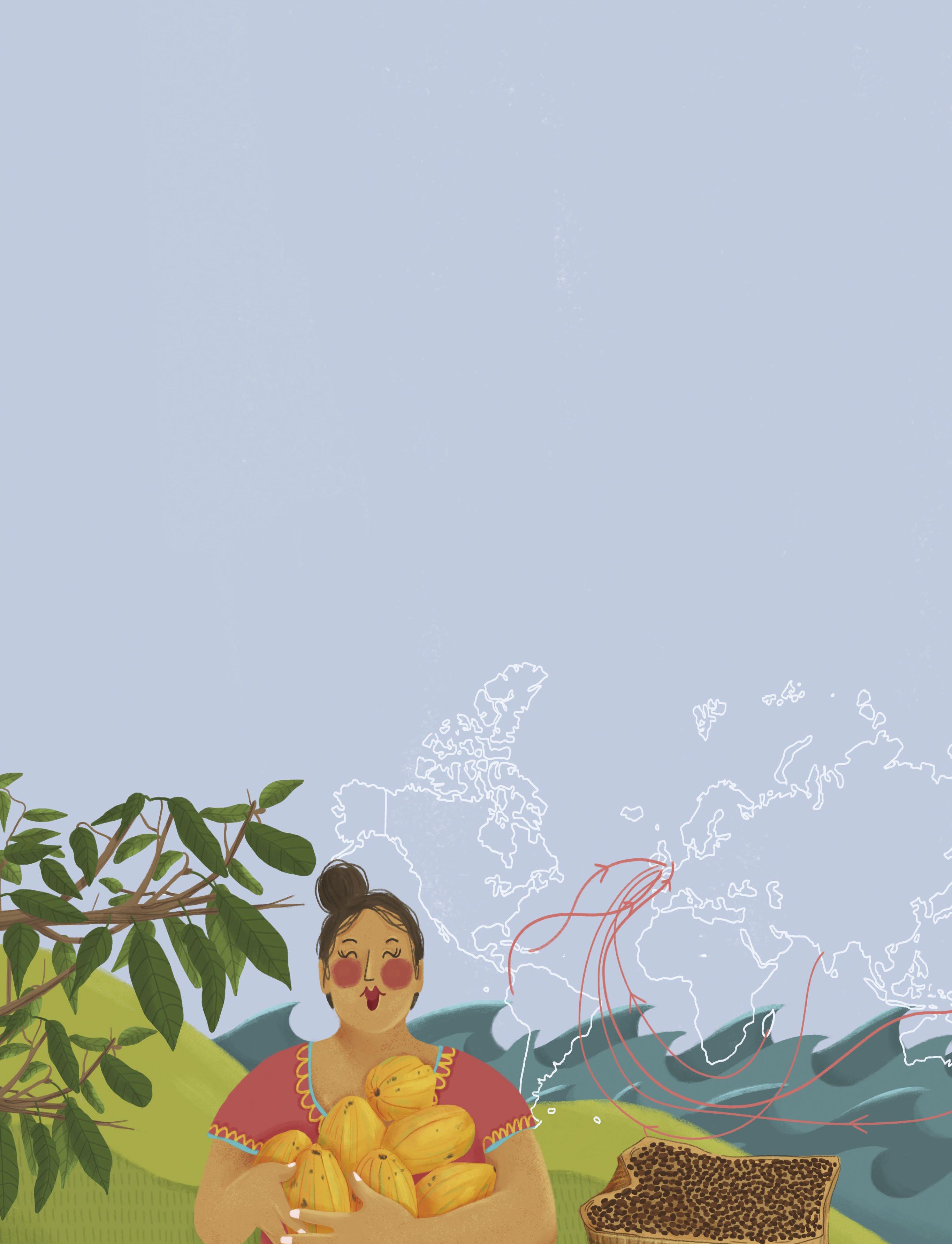
Most people love a bit of chocolate, don’t they? But not everyone knows the problematic practises driving one of the world’s most valuable industries. We dive into the darker side of the tasty treats and chat to Luisa Vicinanza-Bedi, of Luisa’s Vegan Chocolates, about how she’s fighting back against controversial confectionery corporations...
I’m a glutton for chocolate, in moments of craving just about any will do. Cheap, sugary, wrapped in plastic, full of milk from some far flung godforsaken cowshed - despite calling myself an environmentalist and trying to be an ethical consumer, none of these things stop me from fulfilling my cravings. But is rampantly eating crappy chocolate such a bad thing?
In short, yes, and in my enlightening chats with Luisa Vicinanza-Bedi of Luisa’s Vegan Chocolates, I’ve learned a few things that have made me rethink my relationship with this devilish delight. At the industrial scale - what Luisa calls “Big Chocolate” - the brown stuff has been linked to slavery, child labour and deforestation.
Death by Chocolate
Despite making an effort at trying to eat more ethical brands, hurdles abound. Tony’s Chocolonely, who make much of their Fairtrade and B-Corp status, and proudly state on the wrapper that “together we make chocolate 100% slave free”, may seem a safe bet. However, in February 2021 they were removed from Slave Free Chocolate’s Ethical Chocolate Companies list, who cited the fact that their chocolate is actually made by Barry Callebaut. One of the biggest chocolate manufacturers in the world, Barry Callebaut has been accused of purchasing cocoa illegally grown in national parks, and deforested vast tracts of rainforest.
In Tony’s own response to the bad press this generated, they justified this relationship as a means to show that slavery free chocolate can be made at scale, via such work with the biggest industry players. Their goal, after all, is to influence the whole
industry. But Tony’s own statement admits that they do find instances of “illegal child labour” on the farms where they source their beans - which they claim to proactively solve.

The Bar Necessities
Luisa’s approach is a radical departure, and she brims at the opportunity to talk about it. “I love telling people about the story of our chocolate, making it fun and accessible to everyone - not only how it’s created here but also on the farms,” she says. “I always had a love and passion for chocolate, but when my eyes were opened to the world of single estate-farm chocolate and all the nuances between good beans, I felt like I was missing out on a whole different world.
to use this knowledge to create my own range of bean to bar chocolates. After a year I left my career as a fashion and textiles teacher, and started my own business as a chocolate maker, and we remain the only 100% plant-based bean-to-bar chocolate shop in the UK.”
Coca to Cacao
The price normally received by farmers for their cacao is pushed perilously low by Big Chocolate, which encourages environmentally harmful farming practises like rainforest deforestation (a leading emitter of carbon dioxide) and higher chemical use, and leaves growers poverty-stricken. Sugar - the other main component in most chocolate - is often called “The Hunger Crop” because it’s notoriously hard for growers to profit from. So the low price you’re paying in the supermarket ultimately lands on farmers.
“I decided to become an apprentice chocolate maker and learned about different origins and the backstories of different farmers, which inspired me
That’s why Luisa works on a direct trade basisworking directly with growers and paying well above so-called Fair Trade prices, which she says are inadequate. “Paying farmers a direct price really helps to contribute to communities, by focusing on the farmers they can gain knowledge about the whole process and create a better quality product, which gains a better price,” Luisa explains. “It’s a two way partnership between farmer and producer. I didn’t just want to create
Making sure the farmers get paid well and have a good standard of living is really important to me
chocolate in a sustainable way, I wanted to use it as a tool to build communities.”


Luisa has been on multiple trips to meet her farmers. In Colombia she embarked on the “coca to cacao” project in partnership with the University of Nottingham, seeking to set farmers free from the control of the notorious FARC rebels who have long held communities in the grip of cocaine production. Cacao, sometimes termed “The Peace Crop”, provides an alternative for families, and it’s a perfect swap-out for coca crops as it requires such similar conditions.
But it’s not just about fairness and sustainability, it’s the flavour of the resulting beans and the quality of the chocolate that Luisa’s really trades on. Strip everything else back, and this is still amongst the tastiest chocolate you’re ever likely to eat. I can attest to this, as when I visit I’m bombarded with samples of her extensive range of small bars.
They’re all vegan too, of course. After a year in the chocolate making game, Luisa realised there was a gap in the market for vegan milk chocolate. “Alongside our core Single Origin range, I started experimenting, using nuts and other plant-based milks and we created a better-than-milk range, and it’s all made without any nasties. Our Hazolate (made with hazelnuts) and Casholate (with cashew nuts) contain just five ingredients - ones that your grandma would know,” she says.
“Our newest additions to the range are our ChocOAT-Late, and Tiger M*lk bars.” Luisa hands me a chunk of the Pumpkin Spiced Casholate and it’s silky smooth, gradually unpacking lovely mouthwarming spices into my omnivorous mush.
One staggering thing about the set-up is that once the cacao arrives, the whole production of the chocolate takes place in Luisa’s in-house makery nestled neatly behind a stud wall behind the counter Sneinton Market shop. Her chocolate is certainly more expensive than mainstream rivals, but Luisa doesn’t want you to break the bank. Oddly enough for a small business that depends on selling the stuff, she’s quite happy to recommend eating less.
“We want to make a better quality bar, that’s healthier and lower in sugar, so it might end up costing more by weight but we encourage people to enjoy it in smaller amounts. It’s about quality over quantity - coming into our shop you can see and smell cocoa beans roasting and sense the journey of our chocolate, following a beautiful transition between farmer and maker. Each origin is a unique experience, like a fine wine. It’s completely different from supermarket chocolate, in both taste and ethics,” she explains.
social conscience and in a soulful way, and as a female, I think it’s really important to approach the system in a different way and to empower women in other communities.”
“Making sure the farmers get paid well and have a good standard of living is really important to me. Without giving them the tools to do that we can’t expect to get the best quality beans. They can also send their children to school, grow their communities, and protect the land. The chocolate then goes on to win international awards which increases the crop value and gives them prestige, and a greater sense of pride over what they do.”
As tasty as the products are, you get the sense of Luisa’s deeper mission. It is about bringing this bean-to-bar approach and rich complexity of flavours to a wider audience, but it goes beyond that. “As an ex teacher I feel like I’ve got that
luisasveganchocolates.co.uk
Each origin is a unique experience, like a fine wine. It’s completely different from supermarket chocolate, in both taste and ethics
Social media has been proven to increase feelings of envy and resentment towards friends, family, colleagues, and even romantic partners. We hear from Dr Daria Kuss, Associate Professor in Nottingham Trent University’s Psychology Department, about how platforms like Instagram can trigger jealousy and bitterness, why cyber stalking is creating problems within relationships, and how we can look after our mental health when online…
What is social media envy?
At the core of social media envy are upward social comparisons, where you compare yourself to people who are seemingly better-off for whatever reason. These are often celebrities and people with a lot of money who might have nice houses and cars, and we often cannot compare our own lives to theirs. Our research at Nottingham Trent has specifically shown that social media platforms, especially Instagram - more so than Facebook, Twitter, TikTok - can also be associated with increased stress, anxiety, depression and even addiction. I think that’s probably not surprising given the kinds of messages and pictures that people are being exposed to on there.
Is this an issue that can be affected by those within your immediate network too, like friends, family and colleagues?
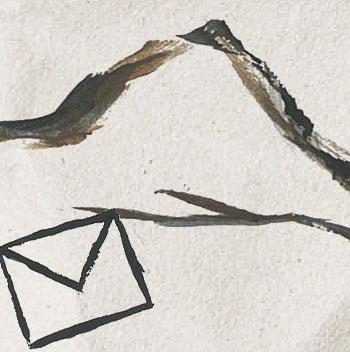

Absolutely. Comparisons with our peers is our first port of call - and that has been the case even before social media. We have always looked at what our friends and family are doing, but now that has expanded. What we are seeing are those moments in people’s lives that are particularly special - like getting new jobs or going on holiday. We are not going to post things that are particularly negative about our lives, like a selfie at 7am on a Sunday morning after a long night out. We really have to bear in mind what it is we’re being presented with online - this is just a tiny glimpse of reality.
What about romantic jealousy - has social media created greater tensions within relationships?


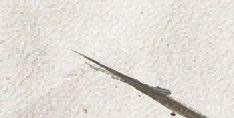


We can definitely see cases of romantic cyber jealousy, often in the form of cyber stalking partners to check who they’ve been hanging out with, whether they’re still friends with their exes and so on. When you have a look at the divorce rates in the United States, for example, we know that in around twenty percent of cases some social mediarelated instances were mentioned as a reason for people separating from their partners. This really goes to show how important social media has become for our everyday social interactions and our romantic relationships.
Are younger generations more vulnerable?
Younger people do spend more time on social media, they have more social media accounts, and they engage more with their peers online. As a consequence, social media envy may well have a greater impact on them because they are more avid users. They are also more impacted by the fear of missing out, which encourages increased use - leading to other unhealthy behaviors like using mobile phones at night.
Do individuals deliberately try to trigger envy from their peers?

Seeking validation from the people around us has always been one of the most natural human behaviours. So when we’re posting updates on our career, on our physical appearance and so on, it is more for the reason of seeking validation. We all want to be assured within our environments and to be awarded for our achievements by receiving appreciation from our social circles. I’m sure some individuals will want to create jealousy and envy, but validation is the main reason why we will post positive updates on our platforms.
Are social media platforms doing enough to tackle issues with envy?
We have to question the algorithms being used by platforms that dictate the types of post we’re being shown. Just because we’ve looked at something on social media once doesn’t mean we necessarily want to be bombarded with that sort of information in the future. And things like the Cambridge Analytica scandal show that these
algorithms can be very detrimental to our mental health. Just recently we’ve had stories about the whistleblower who’s been talking about how Facebook prioritises profits over people’s mental wellbeing. This is problematic because it shows that, unfortunately, these companies are caring more for profits than how they can protect their users. I am aware that the likes of Facebook and Google are working to develop wellness and wellbeing-enhancing measures, but I think it’s extremely limited.
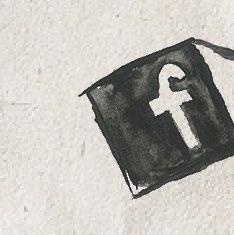
Are social media platforms all bad? Are there any benefits to being online?


Our research does suggest that it’s not all horrible when it comes to social media use. This was especially shown during the pandemic. People were so blessed to be able to connect with others when face-to-face interactions were impossible. We know that social media also offers opportunities for people who are in marginalised groups to talk to people who understand them. So even though there may be issues with excessive social media for some individuals, at the same time we have to bear in mind that social media has positive impacts on a huge number of people as well.
How can we manage our social media envy?
It’s all about being mindful of our reactions and our responses, thinking about what it is that causes us to feel envious. Once we understand those kinds of relationships we can try to change the situation. We can unfollow people, unfollow groups, switch off post notifications. We can also start following people and groups that are more mental health-oriented, rather than celebrities or particular people who we know might post things that
upset us. It’s really about focusing on what are our triggers and how we can counteract them.


Dr Daria Kuss is the co-author of Internet AddictionAdvances In Psychotherapy, which is available to purchase online.
@Dr_Kuss


interview: George White

illustration: Fiona Carr




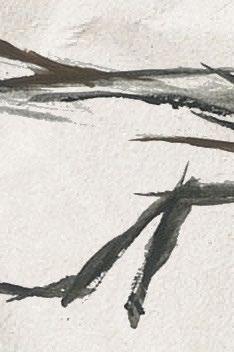








We can definitely see cases of romantic cyber jealousy, often in the form of cyber stalking partners to check who they’ve been hanging out with, or whether they’re still friends with their exes

After spending years ruled by rise and grind hustle culture, lockdown left us with no choice but to slow down. We investigate the growing trend of slow living and talk to Martin Sommerville from By Our Hands We Make Our Way woodworking studios about intentional living, building a sense of community, and the joy that comes with taking it easy...
When we hear the word Sloth, we tend to think of the slow moving, funny looking creatures at London Zoo. The use of Sloth to refer to the deadly sin has pretty much gone out of style, but the protestant work ethic is still alive and kicking in our modern-day hustle culture, branding anyone not working eighteen-hour days as lazy and unambitious.
Yet, over the past few years, people have started to tire of the pervasive rise and grind narrative that was once everywhere. In its place, the alternative of slow living has appeared, a philosophy that encourages a calmer paced and more intentional way of living. For many of us, the first lockdown forced us to embrace slowness, taking long walks, baking bread and tending to our gardens. Now, as shops have opened, and our diaries are getting increasingly full, it might be a good time to incorporate a little bit of slowness back into our lives.
When you look up the hashtag slow living on Instagram, you’re bombarded with photos of autumn leaves, aesthetic books and artisan crafts. The connection between slowness and creativity is obvious, as most crafts are time consuming and meditative. It’s because of this that I immediately think of Martin from By Our Hands We Make Our Way Workshop, a woodworking workshop that’s just a stone’s throw away from the LeftLion offices. Meandering down with romantic ideas about slow living and woodwork, I’m greeted into his studio with the offer of tea and a friendly face.
Martin runs the shop with his partner Carly, and I start by asking about what they do here. “It looks very much like a woodworking workshop, and it has been that, but it’s not only that, it’s a space where anything might happen,” Martin says, openly. “We make lots of things out of wood, and we teach, and we play, and we make some music. I don’t know, it’s a bit of everything.” He goes on to explain that it began as a workshop but has since become community space. “Someone once described it as a pub because people

come here and hang out,” he says, “which makes me the pub landlord.”
I wonder about how Martin got into woodworking. He tells me that he used to work in London in the video game industry but describes that job as having lots of pressure and heavy deadlines, comparing the industry to an enormous machine that was grinding people up. He went back into education to study participatory art in Derby, and met his partner Carly, with whom he spent the next twelve years running creative workshops across the country. Things were creative, but still busy then, and it was only through tragedy that the couple were forced to slow down. “We ended up here really after an experience of deep grief when we lost our first son,” Martin says. “We stopped working for a little while and spent the next six months crying. Then I started carving wood more than I ever had before, and chopping wood, and just feeling like I needed to hack at things.”
and it was a conscious choice to slow down. This felt more real to me, and more tactile, and more physical, more human,” Martin muses. “I think the phrase ‘human living’ makes sense to me. Since humans have engaged with machines and technology over the past hundred years, we’ve tried to meet machines at their speed, but we don’t have to. We can work at human speed. Technology can be appropriate at the right time. But slowness is good, I think. Slowness lets you see things, you don’t miss anything.”
Martin’s lifestyle is counter cultural in lots of ways; he’s also a home-schooling parent, and as a family they do most things together, leaning more towards collectivism than individualism. I ask if he ever feels judgment for straying from the norm. “People often make the observation that we're really lucky to live like this - carefree, with seemingly a lot of freedom. But we're not free of care! There have been difficult choices we've made along the way to get where we are, to be happy with where we are. Living deliberately, doing what you love, intentionally, can be super hard work! Doing what you want with your life takes trust, and honesty, and loss, and a foolhardy willingness to just try stuff. A lot of the luck we had to make up out of nothing, or by smashing up other bits of our lives, or by waiting for the seeds to slowly grow.”
The workshop feels rooted in home and community, and Martin tells me that this is intentional. “We live nearby, thirty seconds up the hill, so this feels like our home, really. That was a decision we made when we started working again. It feels important to be rooted here. It’s like we had been flying around and now we’ve finally landed.”
Everything Martin says sounds congruent with slow living, but I still don’t know if he would label himself that way. “I try not to put labels on things, but slow living fits - maybe we’re slower than the average
Nonetheless, Martin seems content. “My dad was always waiting for retirement to do the things he wanted to do, and I think that struck me as something I didn’t want to do,” he says. “I didn’t want to wait, I wanted to do things now. If this life means I don’t have Netflix, or a car, or a holiday, then that’s fine - I’d rather be happy in the everyday.”By Our Hands
We Make Our Way is located on Freckingham street in Sneinton Market where everyone is invited. You can support them on Patreon to keep costs low for those everyone who uses the workshop.
wemakeourway.co.uk
It was a conscious choice to slow down. This felt more real to me, and more tactile, and more physical, more human
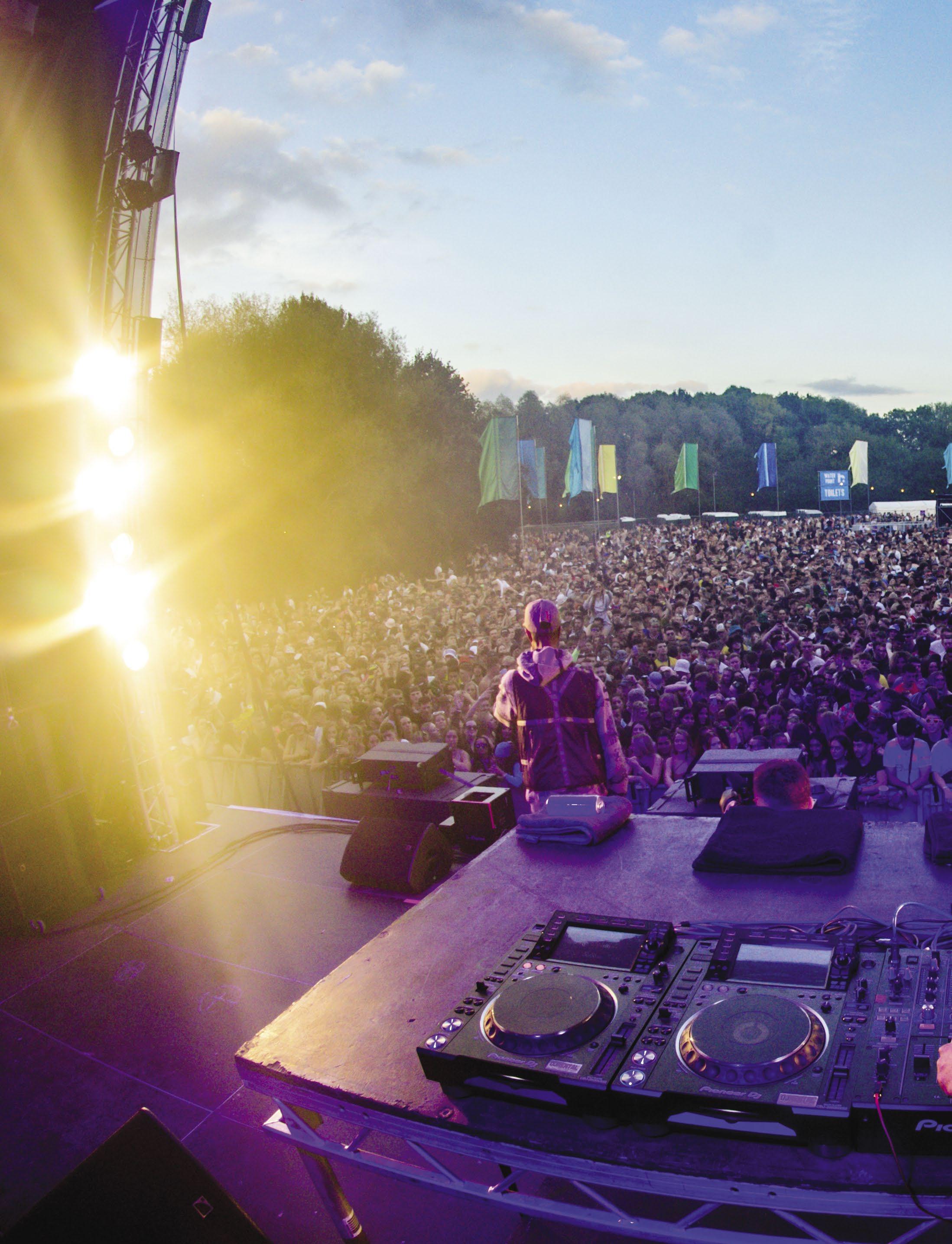



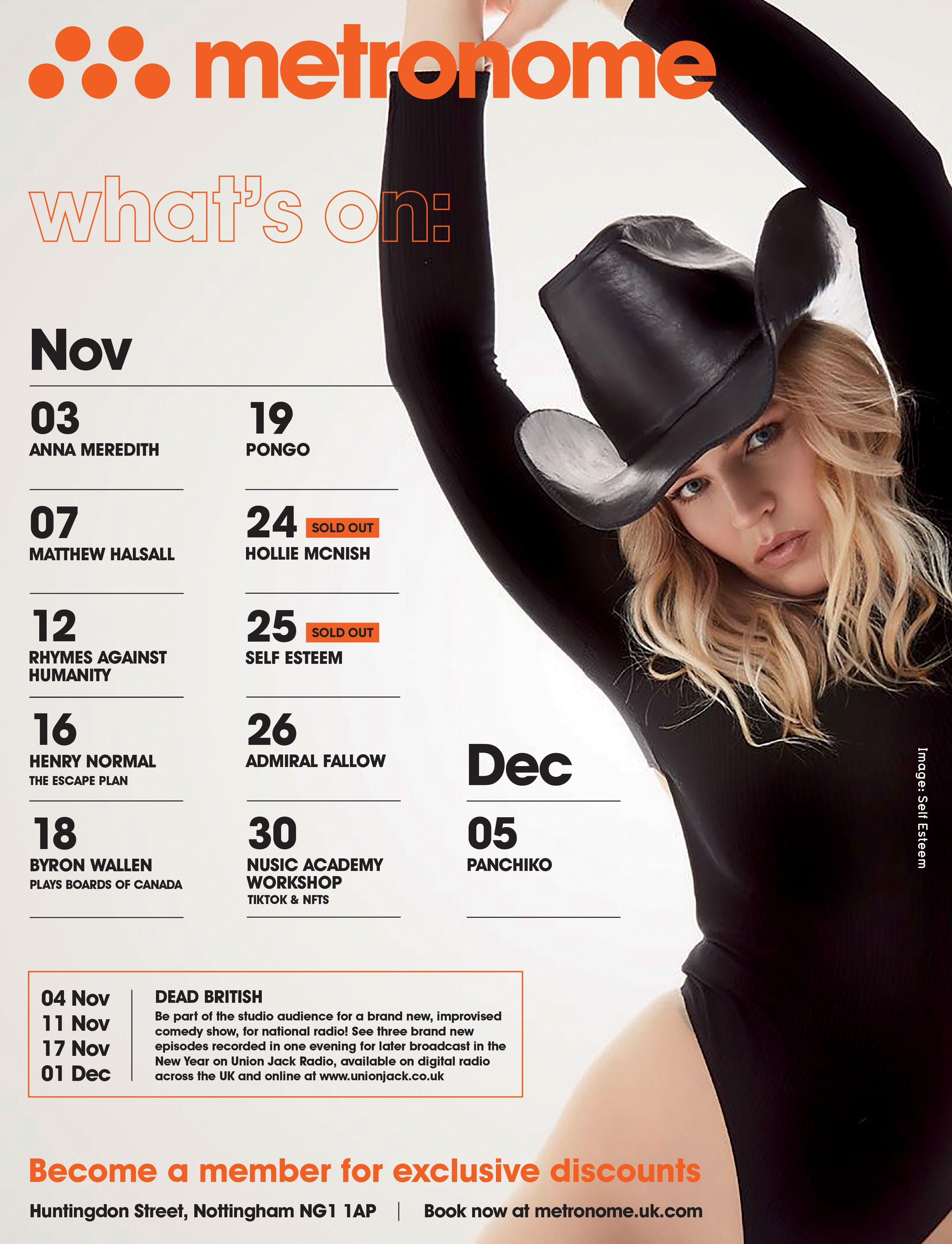
words: Ashley Carter illustration: Isobel Miller

Dr Ala Bashir is a man that has experienced enough to fill several lives. The celebrated doctor, sculptor and painter worked as Saddam Hussein’s personal physician from 1983 until the American invasion in 2003, when he fled the country in fear for his life. Experiencing a unique relationship of trust with the Iraqi dictator, Bashir was witness to some of the most significant turning points in modern history, enduring a journey that took him from the heart of a crumbling dictatorship to living as an artist in West Bridgford…
Baghdad was suffering the effects of a heavy bombing raid when Dr Ala Bashir heard the ominous sound of ferocious knocking on his door. It was 1991, and the Persian Gulf War was in full effect when he answered, finding some of Saddam Hussein’s personal bodyguards on the other side of his door. After being bundled into a car and sped through the pitch-black Baghdad streets, he arrived at a hospital to find the Iraqi dictator lying covered in his own blood. Amidst the carnage of the night’s bombing, Hussein had been in a severe car crash, suffering deep cuts to his face and fingers, one of which he was at risk of losing. Describing the incident in his 2005 book The Insider, Bashir nervously went to work on the injured finger, re-attaching it with an adroit skill that had seen him rise to a unique position of trust within Hussein’s regime for over two decades. Hussein insisted that his face remain unbandaged, lest he appear injured and weak in front of the Iraqi people.
had made within orthopaedic and plastic surgery, the operating techniques we had pioneered since the start of the war, or the fact that our scientific articles had been accepted and published by leading international medical journals.” With Hussein having a preference for literal, rather than abstract, art, he allowed Bashir to create whatever he wanted, seemingly unaware of the critical, dramatic foreboding that lay at the heart of much of his work.
Such was the level of respect and trust that Hussein placed in Bashir that, in 1999, he commissioned the artist to create a seven story high sculpture in the heart of Baghdad. The result was The Union , an abstract form of a man and woman representing love, peace and the glory of life. Taking over a year to construct, weighing 940 tons and being made from the same stones used by the Assyrians to create the famous winged bull, The Union stood in stark contrast to the other sculptures in Iraq, which uniformly represented war, strength and power. Hussein expressed his displeasure for the statue’s prototype, reiterating his dislike of abstract art, but allowed Bashir to proceed nonetheless. Despite being largely popular with the Iraqi people, for whom it became a common meeting ground, The Union was destroyed by the Iraq army in 2010.
studying here earlier in his career. Despite his role in Saddam Hussein’s regime, Bashir states that he has no regrets, saying that doctors do not get the privilege of choosing their patients.
Bashir continues to practise his art, persisting with his lifelong quest of trying to understand the meaning of life. His work, which has been displayed at some of the most prestigious galleries in the world, repeatedly features motifs of the struggle to break free; keys, chains and cages appear alongside chairs and human bodies taking different shapes and positions. His reality is one that few can imagine, witness as he has been to the absolute extremes of the human condition.

In the early seventies, Bashir had received a degree from the Royal College of Surgeons of Edinburgh, before returning to his native Iraq to practise medicine. A skilled plastic surgeon, his pioneering work saw him quickly become a respected authority in the field when, in 1982, he was appointed as Saddam Hussein’s plastic surgeon, an event Bashir describes as “the saddest day” in his life. Had he refused he could, at best, have expected to be sent to jail and, at worst, been executed. A year later, he became one of the Iraqi dictator's team of 25 personal doctors, working as Hussein's personal physician for twenty years until the US invasion in 2003.
Bashir was the director of the Saddam Centre for Reconstructive Surgery, a small hospital on the Eastern banks of the Tigris river which was responsible for over 22,000 surgeries under his leadership. But for one day a week he was expected to provide 24-hour care at Hussein’s personal clinic. There, he treated the dictator for all manner of minor ailments, from removing skin tags to soothing corns developed from Hussein’s insistence on wearing shoes that were too small for him.
While practising medicine under exceptional circumstances during the day, Bashir used art – a talent he had been developing since his youth – as a means of therapy by night. His pieces frequently featured tortured and tormented figures, inspired by the reconstructive work he regularly performed on those maimed during Hussein’s wars. His success in the artistic world matched his prestige in the medical field, with his expressionistic, surrealist creations leading to several prestigious awards, including second prize of the Baghdad International Poster Exhibition in 1982 and the gold prize of the Baghdad International Art Festival in 1988.
Remarkably for a regime that so brutally restricted any creative output that could be perceived as critical of its leadership, Bashir’s work was allowed to develop unmolested. “I was fortunate,” Bashir says in a 2010 interview, “Saddam did not think the tortured and tormented figures in my paintings were products of his regime.” In fact, the Iraqi dictator often took more of an interest in Bashir’s art than his medical achievements, as he recounts, “He was more interested in them [Bashir’s paintings and sculptures] than in the progress we
With the end of Saddam Hussein’s brutal regime nearing in 2003, Bashir was compelled to perform plastic surgery on the dictator’s family members, including a nose job on his granddaughter who was worried about her appearance as the country prepared for the American invasion. “They were divorced from reality,” Bashir recalls. He also had to treat several women for cigarette burns, the result of Saddam Hussein’s son Uday, who developed a penchant for inflicting pain on his sexual victims. It was also Bashir that performed lifesaving surgery on Uday Hussein, after he was shot whilst out scouring the city for women.
As the net tightened around Hussein, Bashir began to fear for his life. On two occasions he received bullets in the post, and on another a would-be assassin stabbed him twice. Eventually fleeing to the UK, he settled in West Bridgford. “I recently read that Nottingham has a high rate of crime so I would like to feel at home so I decided to move here,” he joked in a 2005 interview with the BBC. The real reason for his new choice of home was due to the fact that two of his sons were born in the UK – one in Nottingham – during his time spent
Saddam did not think the tortured and tormented figures in my paintings were products of his regime




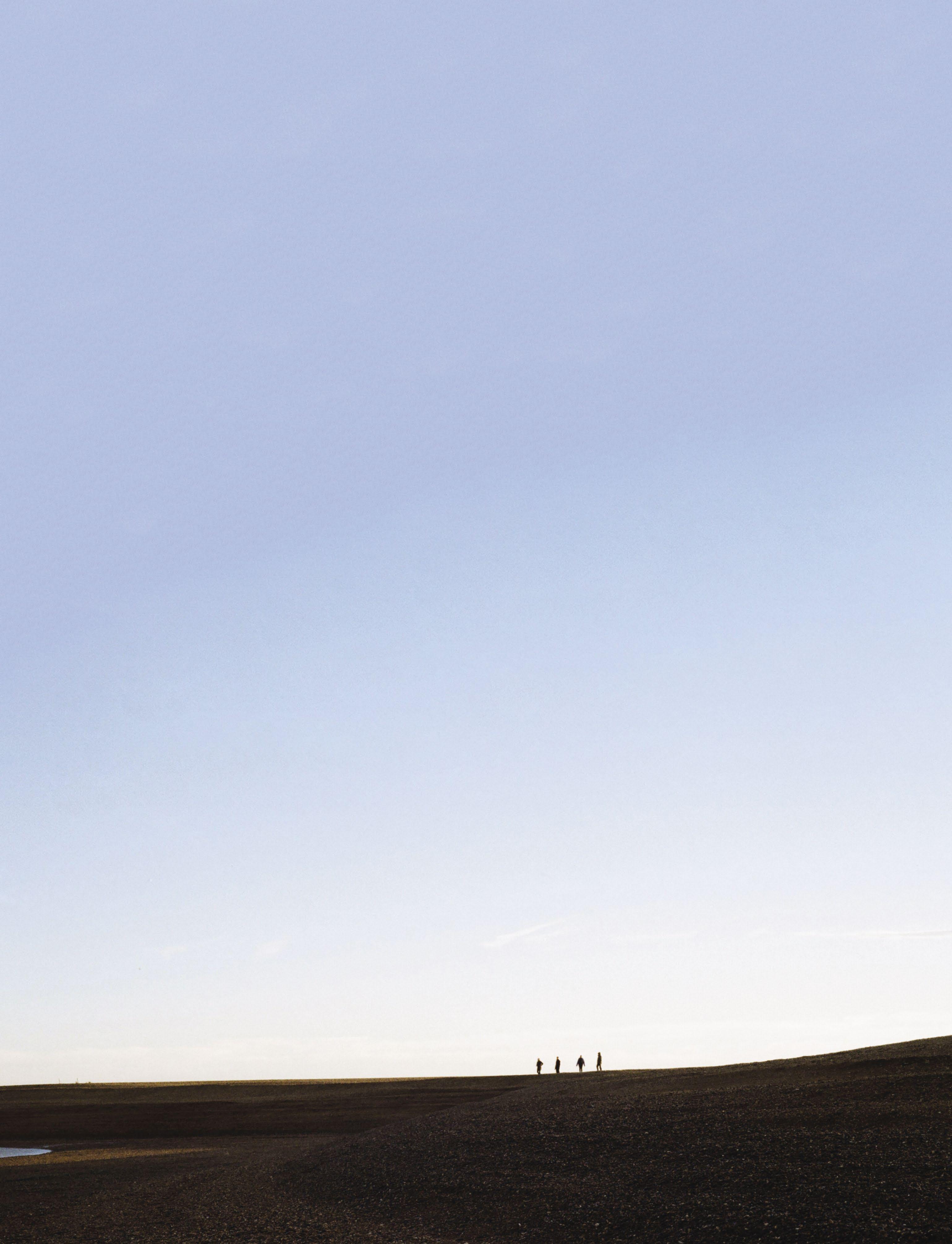
Deconstruction has become a hot button topic within the Christian community, causing outrage for some, while creating a place of sanctity for others. We talk with Tim Nash of Nomad podcast about leaving the institutional church, forming an online space, and feeling liberated in his deconstruction journey...
“Around twelve years ago myself and some friends were feeling frustrated with the churches we were part of,” says Tim Nash, producer and co-founder of Nomad podcast. “While feeling a strong commitment to the Christian tradition, we were struggling to connect with the more institutionalised aspects of church.” One of the friends, Nick Thorley, suggested they turn their frustrations into a podcast. From here, Nomad was born, a podcast to document the group’s changing faith, and to interview Christian theologians, activists and contemplatives. Featuring four co-hostsTim Nash, David Blower, Jemimah Alpine and Nick Thorley - the podcast now releases twice monthly episodes.
has become an online space where people can process that journey.

“Deconstruction isn't a word everyone finds helpful. But however you describe it, an unprecedented number of people around the world are asking deep questions about the faith they inherited. For me, the word simply refers to the process of pulling apart the beliefs and practises you received, and reconstructing something more sustaining and life-giving, making better sense of the world. The faith I inherited was quite tribal, often characterised by judgement, fear and guilt. However, over the years it has evolved into something increasingly outward looking and inclusive, motivated more by love and, actually, more rooted in ancient Christian traditions.”
The internet has also played a large part in the popularity of deconstruction. For lots of people, questions about faith aren’t encouraged within their own Church communities, and the online space has served as a place for open dialogue. “A large problem I have with my inherited faith is that I wasn’t told the whole story. The evangelical faith is just a tiny sliver of world Christianity, but I was told evangelicalism was Christianity,” Tim says. It was through the internet that he managed to connect with people of all different Christian denominations, and non-Christians too. “It’s very hard to have those kinds of conversations and not be significantly changed,” he tells me.
Nomad podcast is part of a wider trend of deconstruction - a term that has grown in popularity over the past few years, largely popularised by Christian mystic Richard Rohr. The movement, which has gained a lot of traction online, centres around the process of re-evaluating and rethinking your long held faith beliefs, often resulting in a new set of worldviews that differ from your faith upbringing. Deconstruction has been particularly popular among American evangelicals online, including former megachurch pastor Joshua Harris, and Brenda Marie Davies from the podcast God is Grey. Yet, based out of Nottingham, Nomad is an example of deconstruction happening on our doorstep.
I ask Tim about his deconstruction journey. “I think by giving ourselves freedom to ask questions about church, we gradually started asking questions about the beliefs and practises we’d inherited,” he says. “It turns out we weren’t alone. Countless people worldwide are experiencing something similar, and Nomad
The process of deconstruction hasn’t been popular among all Christian communities, and many believers are sceptical or damning of a process that questions the validity of their faith. The name Nomad reflects this. “For many of us, our faith has significantly evolved. We can feel cut adrift from our previous communities, and less sure about our place in the world,” Tim says. “The image of a nomad can be comforting. A nomad is part of a community with no fixed habitation. And that’s how many of us feel. We may not have a fixed home in the way we used to, but we’re not homeless. As we continue our journey searching for spiritual nourishment, wherever we are is our home.”
Tim stresses that Nomad podcast isn’t there to critique the Church, and in fact, “traditional churches can be a tremendous force for good in their local communities.” However, “I’ve reached the conclusion that institutional structures and spirituality rarely make good bedfellows. So, stepping outside of that world and those conversations has felt liberating. I didn’t realise just how much time and energy it was consuming.”
I ask Tim why he thinks deconstruction is growing so quickly in popularity. “We live in changing times, and faith deconstruction is one of many deconstructions taking place in society. Additionally, the Church hasn’t always offered a wise and loving voice in current debates around gender, sexuality, and other issues that many of us care about.”
For this reason, it makes sense that Nomad is a podcast, open to anyone with an internet connection to access. “There are no gatekeepers. We can interview anyone we want about anything we want. For many of us coming out of quite dogmatic and controlling faith communities that is a wonderful gift.”
Having moved away from the traditional structures of the church, there is no set path for deconstructionists to follow. When I ask Tim what the future holds for the podcast he tells me, “There’s never been a plan. Nomad has grown and evolved organically as we’ve connected with new people who’ve brought their own interests and talents to the party. I really can’t say what the future holds, I’m just trying to stay awake to new opportunities and possibilities.
nomadpodcast.co.uk
There are no gatekeepers. We can interview anyone we want about anything we want. For many of us coming out of quite dogmatic and controlling faith communities that is a wonderful gift
Deconstruction isn’t a word everyone finds helpful. But however you describe it, an unprecedented number of people around the world are asking deep questions about the faith they inherited
Rich Bell’s candid photographs of Nottingham’s streets have graced our regular Notts Shots galleries over the past couple of years and, after checking out his first photobook Life Works & Dreams, we found out how he entered the world of street photography.
You've recently published your first book of photography, Life Works & Dreams. How long have you been working on it?
I've been creating street images for just over three years now, and I think it was over the last Christmas break — somewhere between too many mince pies and festive cocktails — that I decided in 2021 I'd make a book to reflect on my images and the journey of how it all began.
Tell us how a chance encounter with a dog pulled you out of a creative struggle...
A few years ago I was suffering from a serious creative block and actively hiding from it, even going to the lengths of taking time off from my day job as a motion graphic designer. I'd recently bought a new camera (Fujifilm X-T3) for filmmaking, but it sat on my desk collecting dust as I just didn't feel in the right headspace to film anything.
Then one night I went out to my local corner shop to buy some Flamin’ Hot Doritos and decided, ‘Right, I’m going to take my camera and film something along the way,’ but the creative block and self-doubt crept in and I didn't film anything.
As I headed home, I saw this dog staring into the shop — he was one of those dogs that looks like he takes himself for a walk. He’s bathed in a perfect light, emanating from within. It’s one of those beautifully mundane scenes we see every day, and I remember I have the camera. I fumble with the settings, while worrying that the dog would move and the moment would be gone. But I get it, and with it comes that rush, that high, that addictive thrill that creativity releases. It was a marker and a moment in time that meant so much. Not only was the dog the start of a new chapter in my creative life and my love for still images and street photography, but it reignited my passion and freed me from the creative rut I had found myself in.
Does your job satisfy your need for creativity?

Is it important for you to make time for creativity outside of work?
Working as a graphic designer offers lots of opportunity for creativity, but I think it's important to find passion projects outside of work, as it offers opportunity for experimentation and space to make mistakes. And for me street photography is a time to take myself away from all of life's distractions and just be in the moment.
For those who have never heard the term 'street photography', can you give a little insight into what it is, and what you enjoy about shooting this subject matter?
Well I'm far from an expert, but to me street photography is capturing moments of everyday life in urban environments, and what is so wonderful to me about street photography is just opening your eyes to all of the amazing, unnoticed things happening around us every day, and really celebrating them through images.
and a Ricoh GR III, although recently I've just bought an old Yashica film camera, so maybe film will feature in the next one!
What roles do both Instagram and printed matter play in the way you think about your work?
I use Instagram as almost a diary of images I take, but I find it's really tough as you're working with a really small screen space and it often doesn't show the whole story or the image, plus Instagram is very instant. The reason I love print is you get to see everything with so much clarity and take your time to look at each image.
What steps did you take to create a printed book? Any advice for those looking to give selfpublishing a go?
Do you have any 'rules' or guidance in street photography, given that it's often about capturing moments of complete strangers? I think if you asked any street photographer their answers would be incredibly different, as the styles and approaches to it are so vast. For me, I like to try and stay invisible and not interrupt what is going on around me, to get the most natural shots. But often people will come and ask, “Did you just take my photo?” or, “What are you taking photos of?”, so I try being open and honest by showing them my Instagram and explaining, and most people are happy or ask to have copies of the images.
Nottingham features heavily in this first collection of yours — are there any particularly good spots of our city that you've explored with a camera in hand?
Nottingham is such an amazing place to take pictures on the street, it has such an eclectic mix of architecture, people and subcultures, that really no matter where you go you can find something interesting. But specific locations, not too far from the LeftLion office there are some big bold blue and yellow doors to the bus station that are a fantastic backdrop, or Hockley in general, it's always evolving and it's great to take photos there.
Are the photos in your book film, digital or a mix of both?
My book is all digital. I shoot with Fuji cameras
Firstly, I seriously underestimated how much work would be needed — but once I got into it, it was a great process. One thing I did was gather all the images I thought were worthy of inclusion and got them printed out as small individual prints. This meant I could lay them out and shuffle them around to start to get a feel for the sequencing of the book, and doing this manually rather than on the computer was not only faster, but has a much nicer, tactile feel to it.
The idea to write a narrative and explain the story behind my work was something that came much later on, after many reworks of the book. But I think my main advice is to just give it a go — not only is it a lovely process to go back and reflect on your images, but also bringing together a body of work in print is something that feels really special to me.
Do you have a favourite pair of images in the book?
I really love the pair of images with the women reading the Nottingham Post about lockdown level two, and the chap eating his crisps on the market selling face masks. I really love the difference in their energy but also I think these images will be interesting to look back on in ten years as they feel like a time capsule to a moment in history.
Where can people pick up a copy of Life Work & Dreams?
If anyone would like to buy the book, send me a message on Instagram and I can organise sending one out. @richerich
Nottingham is such an amazing place to take pictures on the street... no matter where you go you can find something interesting


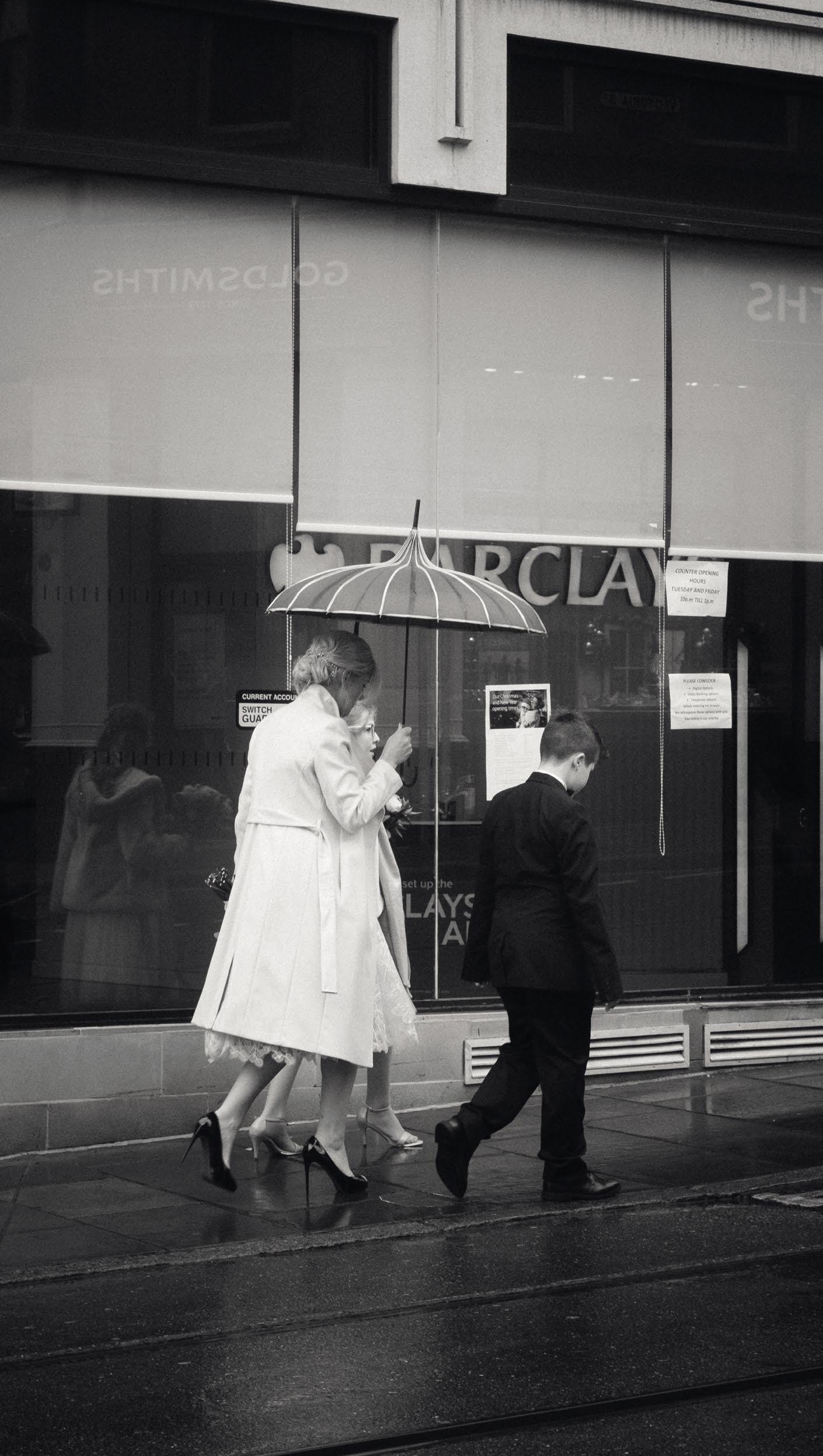




Nottingham is famous for its craft beer. From Magpie Brewery to Castle Rock, there are tons of tasty local options for the fine folk of this city to try out. Yet the one thing that has largely been missing is a good old lager. Luckily, Hockley Helles is here to fill that gap.
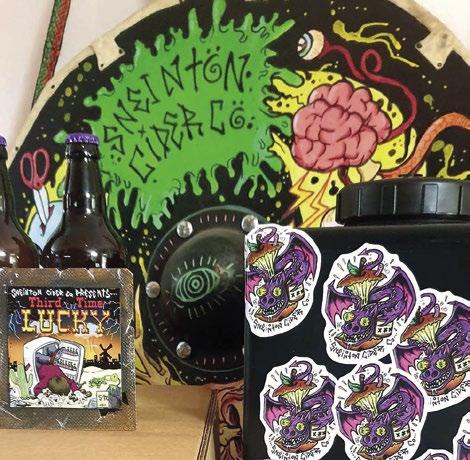
From ex-NTU students Al Squires and Will Barratt, this crisp, refreshing drink is Nottingham’s answer to the Estrellas and Budweisers of this world. Crafted from quality malts and hops, the new bev on the block has been designed to reflect the character and vibrancy of our exciting city. “In Nottingham, there isn't really a craft lager out there,” Al says. “We wanted to bring that directly to the local scene. The drink really embodies the community spirit of Hockley.”
Launching a lager and going toe-to-toe with multi-million pound companies is understandably a challenging prospect, though, as Al explains. “It’s a really tough industry. Some of the biggest names in the world are currently dominating it. We’re just trying to focus on our USPs - the fact it’s independent, locally brewed and good quality.”
These unique selling points will be crucial for standing out amongst a very saturated crowd, Will
continues, ensuring they offer something that giant global businesses cannot. “It’s vital that, as we grow, we don’t lose the values that we started with. That’s what happens to so many brands. For us, it’s about maintaining those values all the way through.”
One of those key values is a focus on environmental sustainability, which Will explains will always be “at the forefront” of the brand. “We’re working really hard on the sustainability side,” Al adds. “It’s a vegan lager, unpasteurised - all the things you might not get with bigger beers.”
Code 34 - to get instant suggestions on how to make the drink the best it can be. “We basically used the bar as a focus group for the beer,” Will laughs. “That was ideal. When creating a new product, having a set of people to trial it is so important. From there, we made the changes we needed to and got to where we are now.”
Going forward, the good people of Nottingham will continue to play a huge part in the success of the brand. With each pour, sip and positive response, the duo will nudge closer to achieving their final goals of expanding their product across the country, stepping away from contract brewing, and taking their business to new and interesting places. “Local people are our biggest asset. If they get out there and spread the word, that always helps,” Al says. “Cities like Manchester, Bristol and London all have lots of big taphouses, and we really see that as our vision.” Another top class brewery serving up delicious drinks right on our doorstep? Sounds like heaven.

Taste is also of the utmost importance, with the pair looking to Bavarian brews as inspiration for a flavourful yet drinkable pilsner-style lager. Before officially launching, Al and Will underwent several rounds of testing to get the recipe spot on, making the most of the bar they’ve managed - Market Street’s
You can find Hockley Helles on tap in bars across Nottingham, including Cock & Hoop, Percy Picklebackers, and The Castle Pub. hockleybrewco.com
New Business Colombo Street
This stylish Sri Lankan joint offers everything from street tapas to classic home cooked dishes. Tasty choices include coco chicken curry and hot butter calamari. Colombo Street, we respect your talent.
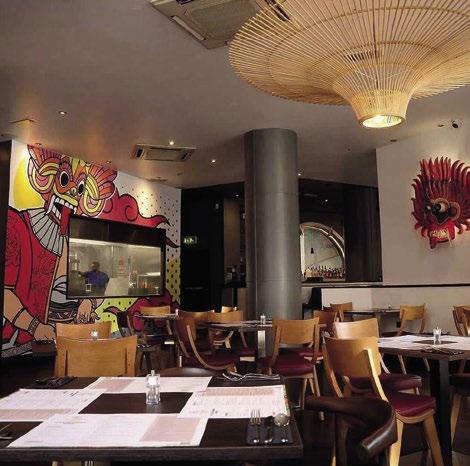
colombostreet.co.uk
@Doughnotts
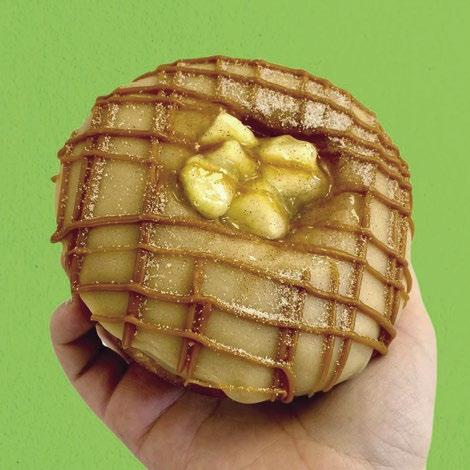
We chat to Nottingham Trent University graduates Will Barratt and Al Squires - the brains behind Hockley Brew Co - about their delicious new lager, Hockley Helles, breaking into a challenging industry, and what they have planned for the future...words: George White photos: Ekam Hundal
Local people are our biggest asset. If they get out there and spread the word, that always helps
FOR THOUGHT
Turtle Bay is renowned for its all day and late night happy hour, so when I order four drinks off the new menu and eight arrive in front of me, I am delighted - and also slightly concerned for my liver.

Sunday is not complete without a roast dinner to provide that homely and wholesome ending to any weekend. It’s perfect in every scenario, whether you’re whipping up some Yorkshires at home, heading over to a carvery or treating yourself to some fancy Michelin star-level roast beef. But the question lingers, where are the best spots to go for a roast in Nottingham? Tucked away in the roads beside the castle lies a real contender.
On the search for the ultimate roast dinner in the city, I want to try one of the latest on the scene, with a stunning Sunday afternoon menu at The Roundhouse. I would position this within the bracket of the ‘posh’ roast, but at a reasonable price.

Wrath
We could ease you into this slightly strange list of beverages, but why not start with the most sinister of all? This menacing mix of Jack Daniel’s and Disaronno is topped with Coke and served over ice.
First up is the Spiced Julep. This bev is made with Duppy Share Spiced Rum and tequila, fresh lime, mint, apple and ginger beer. What strikes me most is how similar it looks to a mojito - and then on first taste, how similarly refreshing it is. Spiced Julep has all the layers and depths of a drink laced with autumnal spices, while still remaining light and remarkably easy to drink.
Montego Bae is, at least at first, a sweet drink. It's flavoured with apple, pineapple and falernum, which adds the unmistakably tropical feel that we all know and love. But don’t be fooled, the rum really packs a punch and leaves me desperately craving that initial fruity flavour to counteract the aftertaste. It’s a vicious cycle bound to leave you slurring your words before you’ve even hit the bottom of the glass - and trust me, it will take you a while.
Next up is Grapefruit Fizz, which is bursting with flavour. Savour a mix of aperol, passionfruit, grapefruit, all topped off with prosecco. It claims to transport guests from the miserable wintery weather to glistening blue skies and good times, and it doesn’t disappoint.
Last on my list is the Pineapple Daiquiri. If there are two things that I do love, it's pineapples and daiquiris - so when this beauty is placed in front of me, I can’t believe my luck. Served in a tall stem cocktail glass, this drink boasts all the elegance and class of a daiquiri, but with a refreshing twist.
Daniela Loffreda12 Trinity Sq, NG1 4DB turtlebay.co.uk
The meal covers all the bases, and provides a very generous portion size, leaving me on a mission to finish it. Going ahead with the roast chicken, I am provided with a pile of beautifully cooked breast and leg. One thing that strikes me as really exciting is the Yorkshire pudding included. Although a common debate among family and friends, Yorkshires are traditionally only served with beef - but many will be glad to know that The Roundhouse serves a large pud with all meats on their roast dinner menu.
Pride
Even the most virtuous drink on the list shows little mercy with its alcohol content. Made with Bacardi Superior rum, peach schnapps and blue Curaçao, this tasty concoction packs a real punch.
Greed
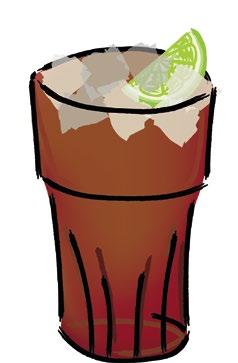


There’s lots to desire about Greed. Made with vodka, peach schnapps, dry martini, sweet and sour mix and grenadine, this potion will leave you wanting more and more.

Envy
Potentially the most unique on the list is Envy. Made with cream, milk and chocolate sauce, and blended with liqueurs, this drink is perfect for those with a taste for sweet treats.
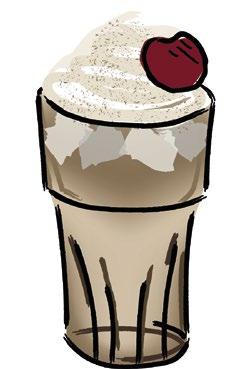

Sweet roasted parsnips and carrots lay under the generous portion of bread sauce covered meat, which fully complements the warm goodness. Most importantly, the roasties: wonderfully crispy and perfectly sized. Plenty of gravy is available, served separately to allow for a personal decision on how much is necessary - the answer on my end always being ‘as much as possible’. Sides are also on offer, from delicious cauliflower cheese to whopping pigs in blankets. If you are looking for a high quality, wonderfully balanced roast on a Sunday, it looks like The Roundhouse is the place to go.
Katie LyleRoyal Standard place, NG1 6FS theroundhousenottingham.com
Lust
Lust is often considered the least serious of the seven deadly sins, but with vodka and Malibu, cranberry juice and a squeeze of lime, this sour cocktail is not one to be messed with.

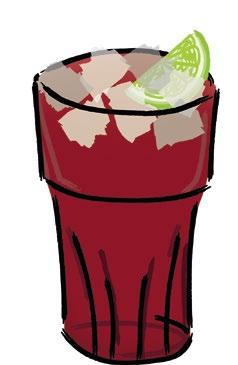
Sloth
We won’t lie, we’re not really sure what this deadly sin means eitherbut if there’s one thing we do know, it’s that this mix of Baileys Irish Cream, Kahlúa, vodka and Disaronno is a beautiful idea.

Want your Nottingham foodie business featured in the mag?
Fancy writing for us?
Gluttony
To Follow
The Pudding Pantry
The Great British Bake Off got you in the mood for staring at cakes all day? The Pudding Pantry’s Instagram page boasts loads of beautiful bakes that are proper easy on the old eyes.
@thepuddingpantry
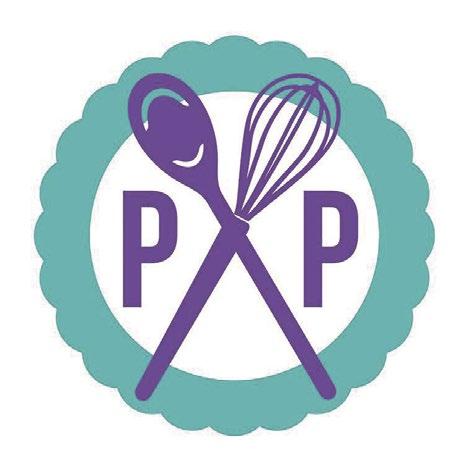
Email us at food@leftlion.co.uk
We wouldn’t blame you for committing gluttony after hearing about this gem. Enjoy peach schnapps and vodka blended together with cranberry juice and orange, all served with a squeeze of lime.
eerie-pubs.co.uk/pit-pendulum
words: Daniela Loffreda
illustrations: Fiona Carr
Sure, we could have been a bit less obvious - but when there’s a set of cocktails literally called The 7 Deadly Sins ready to drink at Pit & Pendulum, how could we not use it for this issue? Here they

interview: Lizzy O’Riordan
Our new regular columnist Love CeCe takes an alternative and holistic approach to wellbeing, and will be giving advice on improving your spiritual side...

Greetings! How’s everyone doing?
You may be aware of the current Mercury retrograde (there are five planets travelling backwards as I type) and, being the ruler of communication, technology and travel, it may have caused some upset and issues.
The cosmos is wild right now and here on Earth, the air is thick with change - so please be kind to yourself and others.
I want to discuss the term spirituality and what it means. It’s the want to explore the human spirit.
The want to establish a connection to self and the divine. It's about being here, in this moment and not allowing the past or future stopping you from enjoying or learning the lessons from the present.
There's no timeline, no pressure or need to compare yourself to others. It's something you can share or do privately and it's something that comes from a place of love. Your spiritual journey, whether through one religion or Omnism - respecting them all - is important.
A kind act to a stranger is spiritual. A daily dose of self-care is spiritual. Learning to say no to things that do not align with you is spiritual. It isn't all shiny rocks and sage. Although they are a good time, just wanting a better life, filled with compassion, health and peace, is the first step. Which is the inspiration for our second affirmation::
I AM WORTHY
Because you are! Worthy of love, success and security.
You are worthy of the life you dream of so don’t let the haters tell you otherwise.
Until next time, my loves be safe, no fear and stay blessed
@lovecelestene
words: Love CeCe
illustration: Fiona Carr
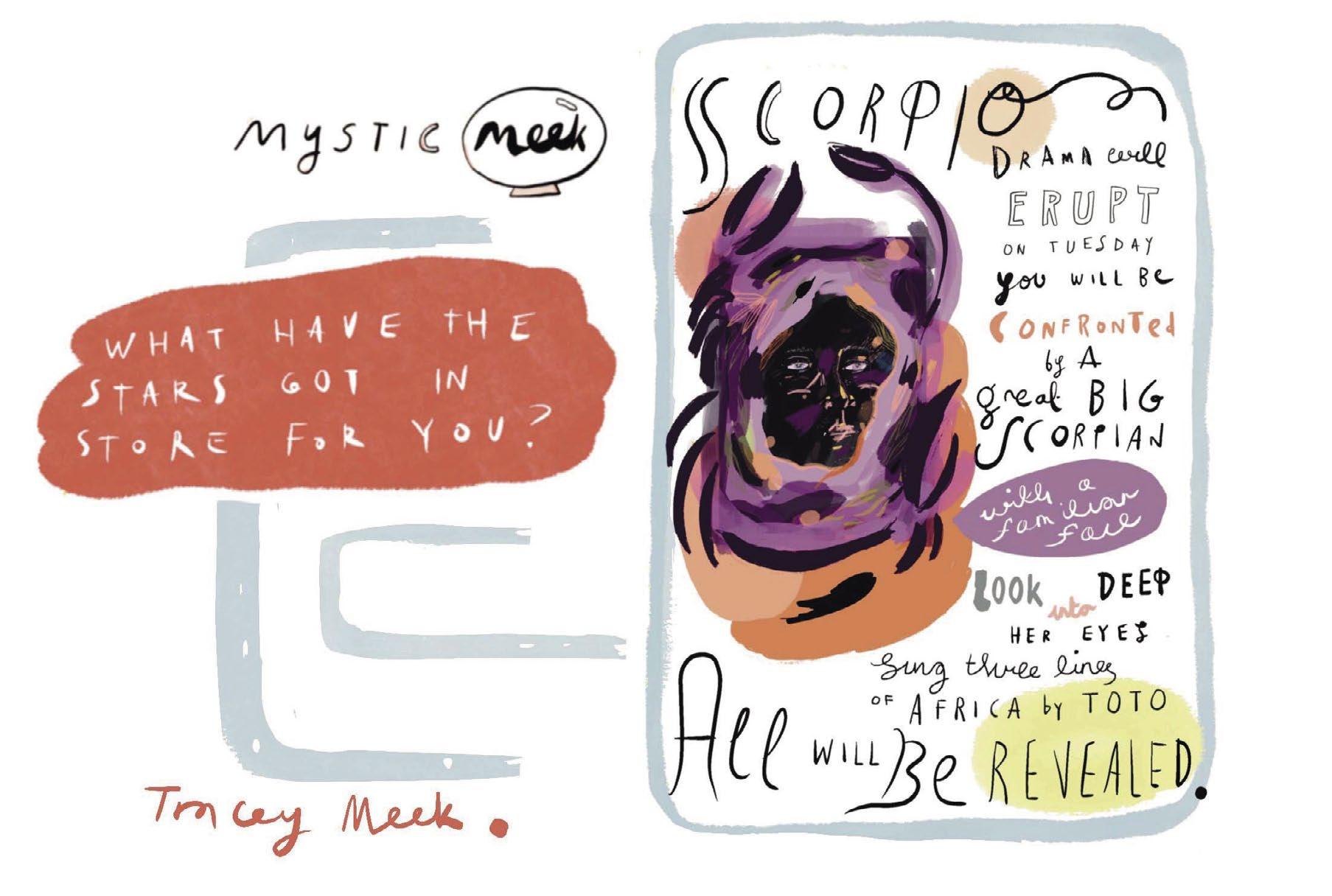
Writing can be a transformative experience. For this month’s Wellness Section, we chat with Words for Wellbeing coach Samantha Gray about therapeutic writing, her work with Nottingham Writers’ Studio, and why you should get a journal…
You run a course called Words for Wellbeing with the Nottingham Writers’ Studio…
I’ve been with the studio since 2016, so over five years now. The first Words for Wellbeing I ever did was geared towards people experiencing depression, which we called the Blue Monday Course. It’s a real mixture of journaling, reflecting and creative writing, working around that link between creativity and wellbeing.
I was trained in poetry therapy so that’s the model I work with, but different practitioners will take different approaches.
Then I knocked on the door of the Writers’ Studio and they were so lovely and invited me to run a course there.
Writing is great because it’s so accessible…
Yeah, writing is such an accessible tool! I always say that journaling is like eating fruit; when I journal, I always feel better. Through lockdown I’ve been consistent with it and it’s been an anchor, so I’m eager to pass that on to other people. That link between creativity and wellbeing is so strong.
For any at home readers, how could they start using the tool of writing?
I think I’d recommend a journal. I do think there’s a potential with journaling to get too enmeshed in a difficult subject, so give yourself space to step out and reflect. If I use journaling techniques in session, I deliberately make them quite short. Writing has been compared to fire, because it has that potential for transformation, but you need to be safe with it as well.
Anything else you’d like to say to LeftLion readers?
Is the idea of writing for wellbeing a popular one?


A lot of people are doing research into the therapeutic benefits of writing and I think there’s a lot of energy behind the field at the moment.
Were you always interested in journaling?

I think I’ve always gravitated towards reading and writing, like a cat who sits in a patch of sunshine. Then from age twenty-seven to thirty I experienced a lot of back-to-back bereavement that culminated in the loss of one of my sons. I used writing all the way through and I wrote an article about how journaling and creativity supported me through loss. I realised that I wanted that professional network so I sought out some training and I worked with a mentor who was a kind of pioneer for therapeutic writing.
There’s so much potential for writing to help people, and it’s getting over the thought that writing only belongs to a certain group of people. Words belong to everybody, and there’s no hierarchy. It’s not writing to produce anything, but it’s creating material to reflect on.
Also, if you’re interested in the work, you can always reach me either through LinkedIn or the Nottingham Writers’ Studio.
Samantha Gray will be returning to Nottingham Writers’ Studio on November 6 for a member-led talk on Writing for Wellbeing.
nottinghamwritersstudio.co.uk
It’s a real mixture of journaling, reflecting and creative writing, working around that link between creativity and wellbeing
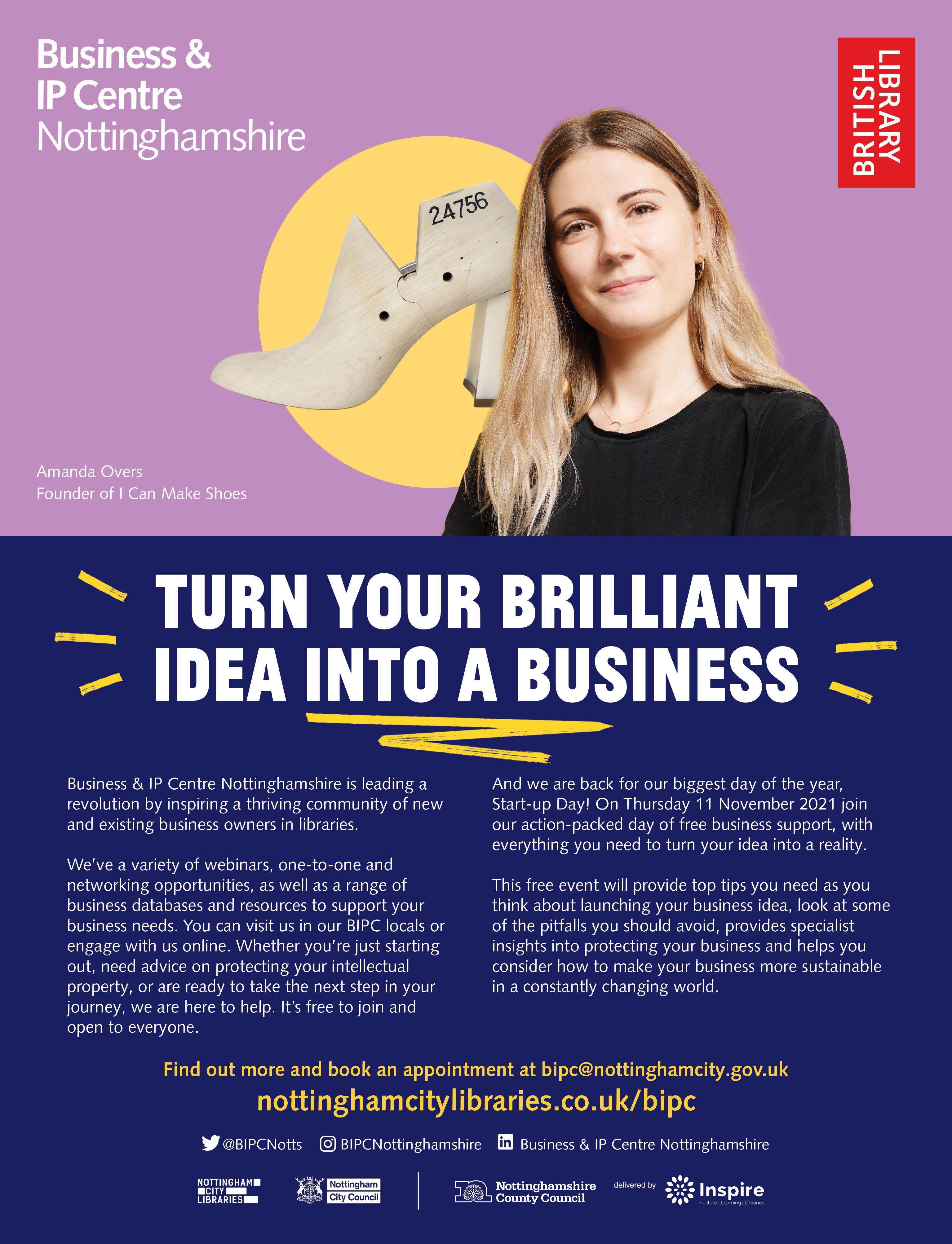
words: Adam Pickering photos: Kathryn Edwards
COP26 finally lands in Glasgow this month. A recap - short for Conference of the Parties, an annual meeting of ‘Parties’ (or nations and territories) to discuss tackling climate change. It has roots in Rio, Brazil where, back in 1995, 154 such Parties signed the United Nations Framework Convention on Climate Change - the first international agreement on limiting human-made climate change. And this is the 26th one - see what they did there?
The club has since grown to 197 Parties, but the main goal was then, as now, to reduce our emissions of the greenhouse gases that are warming our atmosphere. You might not think it from reading the comments sections of many topical social media posts, but human-made climate change is as close as it’s possible to get to an indisputable fact - 99.9%+ scientific agreement is what’s called consensus.
Despite overwhelming evidence for action to keep global heating to less than 1.5°C above pre-industrial levels, the purported tipping point for full-blown climate catastrophe, the weather forecast on this one isn’t great. And global emissions are still rising, despite us having been here 25 times before.
If I’m in a car hurtling towards a wall at 100mph, I’d prefer making an emergency stop to gently pumping the breaks
In what’s looking like another fiesta of faltering, several of the world’s biggest national polluters are likely to sit out making suitably large emission reduction commitments. There’s been a lot of bandying around the mantra of expecting “progress, not perfection”, but heck, if I’m in a car hurtling towards a wall at 100mph, I’d prefer making an emergency stop to gently pumping the breaks.
If you want to better appreciate what that proverbial wall looks like, I suggest watching the eye-opening David Attenborough documentary currently on Netflix - Breaking Boundaries: The Science Of Our Planet, because that explains it better than I ever will.
Are you heading to Glasgow for COP26, and want to contribute to our coverage of how Notts is getting involved? Drop us an email on environment@leftlion.co.uk.
words: Adam Pickering
Leo Jordan, one half of the couple behind Nottingham’s Blue Barrel Cider, arrives outside the Fox & Grapes pub in Sneinton to pick me up. I’m volunteering to do a spot of scrumping today, and expecting something of a jaunt. About three minutes later we come to a halt, just up the road in St Ann’s (Sneinton Market’s distinctive roofs still just in view). “First stop is checking on these pear trees which go into our Colwick Perry,” Leo divulges.
The four mature trees sit unfussily on a stretch of council land, adjacent to a few 1950s-ish council houses. “Nobody owns it,” Leo says, “but I’ve gotten to know the old girl who lives here, I always leave her a bottle of the perry when I come by. She actually loves that we’re cleaning up her garden and street.” Before I know it, Leo is up at the top of a tree, bouncing Tigger-like as pears - small ones, mercifully - rain down on my head.
I’ve been a fan of their Clifton Beauty and Sherwood Blend apple ciders for a while, discovered via the Lenton NeighbourFood market. What intrigued me about Blue Barrel Cider, a project born of Clifton’s Summerwood Community Garden - which Leo and wife Emma established - is that all the apples and pears that go into their beverages are picked from
(mostly) forgotten orchards dotted all around the city. And locals are always welcome to get involved in the annual scrump.
Leo thinks my estimation that this could be Nottingham’s most sustainable beverage is probably a fair one overall; it’s a “win, win, win, win” as he puts it. He’s unprecious about their novel approach too, hoping that people will begin to make more of a resource quite literally on their doorsteps: “If every area of Nottingham had a community garden pick it up, you could practically have as many small scale cideries as you can imagine.”
Today, in under two hours, two of us managed to pick 300 kilos of pears (thirteen sacks), which Leo says will make about 200L of perry. With a 330ml bottle retailing at £2.50, this is quite a yield, especially when the majority of this fruit would otherwise end up rotting on pavements. Leo expects each tree to give about 200l worth of pears over the season, and this is just one of several orchards in surrounding streets.

We get on to sustainability, and here’s where Blue Barrel really impresses. Their super low-input methods are satisfyingly simple. Only a little water is used to wash the apples and pears (at about a 1:1 ratio to the amount of cider or perry produced), and the power needed for their shredder and hydraulic ram press comes directly from a wind turbine on the chicken farm they’re based at.
Now Leo and Emma have moved on from running Summerwood Community Garden and are leaving it in safe hands, a legacy Leo is proud of, and they’re investing their spare time and profits into planting more urban fruit trees through their new CIC, Trees Are Good. “I’ve always just wanted to contribute something good to the world every day, make a difference, and fruit trees give so much - to nature, to the community,” he says. “There’s nothing more rewarding than planting trees, really.”
How do you like them apples?


Follow Blue Barrel Cider on social media @BlueBarrelCider to get involved with the next scrump, or treat yourself to a few bottles by ordering directly at:
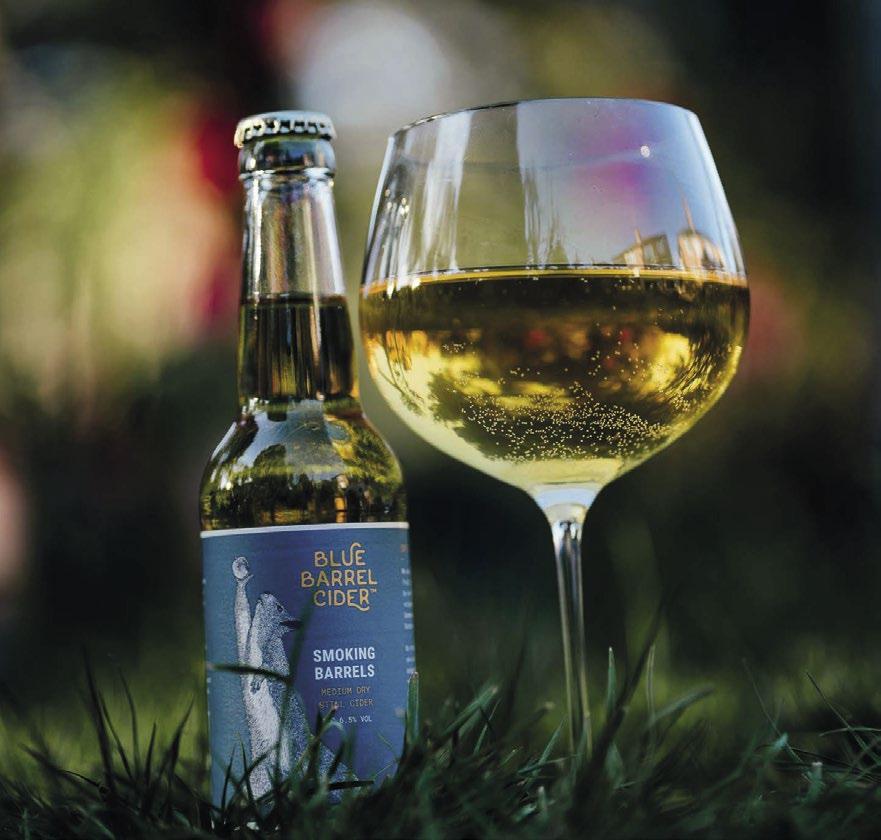
magpiebrewery.com/shop

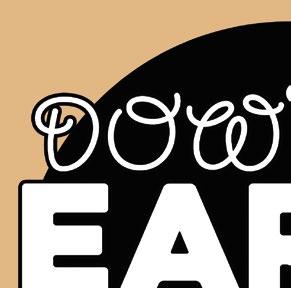
Carbon Neutral Nottingham
Notts’ plans to go ‘carbon neutral’ by 2028 is one of the most ambitious targets in the UK, but we’ve already made progress. Visit their website for more info on what that means, and how we get there.
nottinghamcity.gov.uk/cn2028
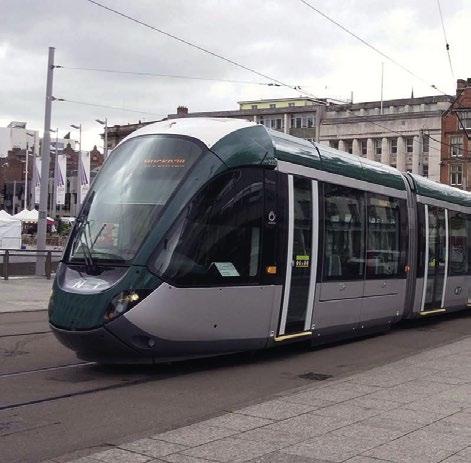
The Notts worm experts are gifting 1,000 x 100g packs of composting worms to UK schools, community groups and households. You’ll need to build a worm farm, but they’ll show you how.
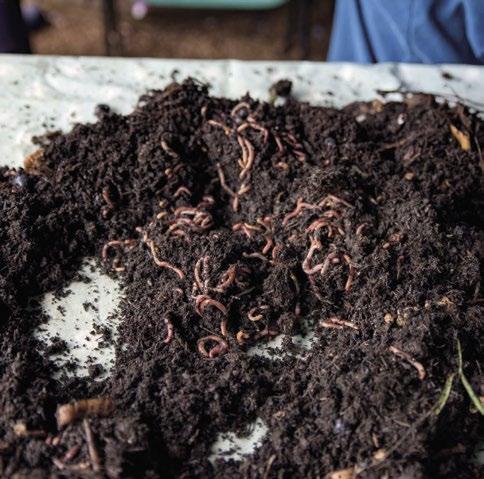

theurbanworm.co.uk/wormup
Global Day For Climate Justice

Notts COP26 Coalition - including local campaign groups, charities, and trade unions - invites you to meet at Forest Rec at 1pm on Saturday 6 November to march to Market Square for a mass rally.
nottingham@cop26coalition.com
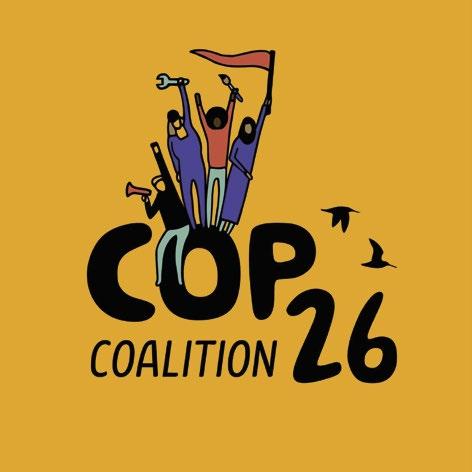
Mostly with fruit from made forgotten orchards, Blue Barrel Cider might be one of the most eco-friendly drinks on the market. Our Adam Pickering joins Leo Jordan, one of the creators of the beverage, for a day of scrumping out in St Ann’s and a chat about the importance of keeping things green…
I’ve always wanted to contribute something good to the world every day and make a differenceThe Urban Worm
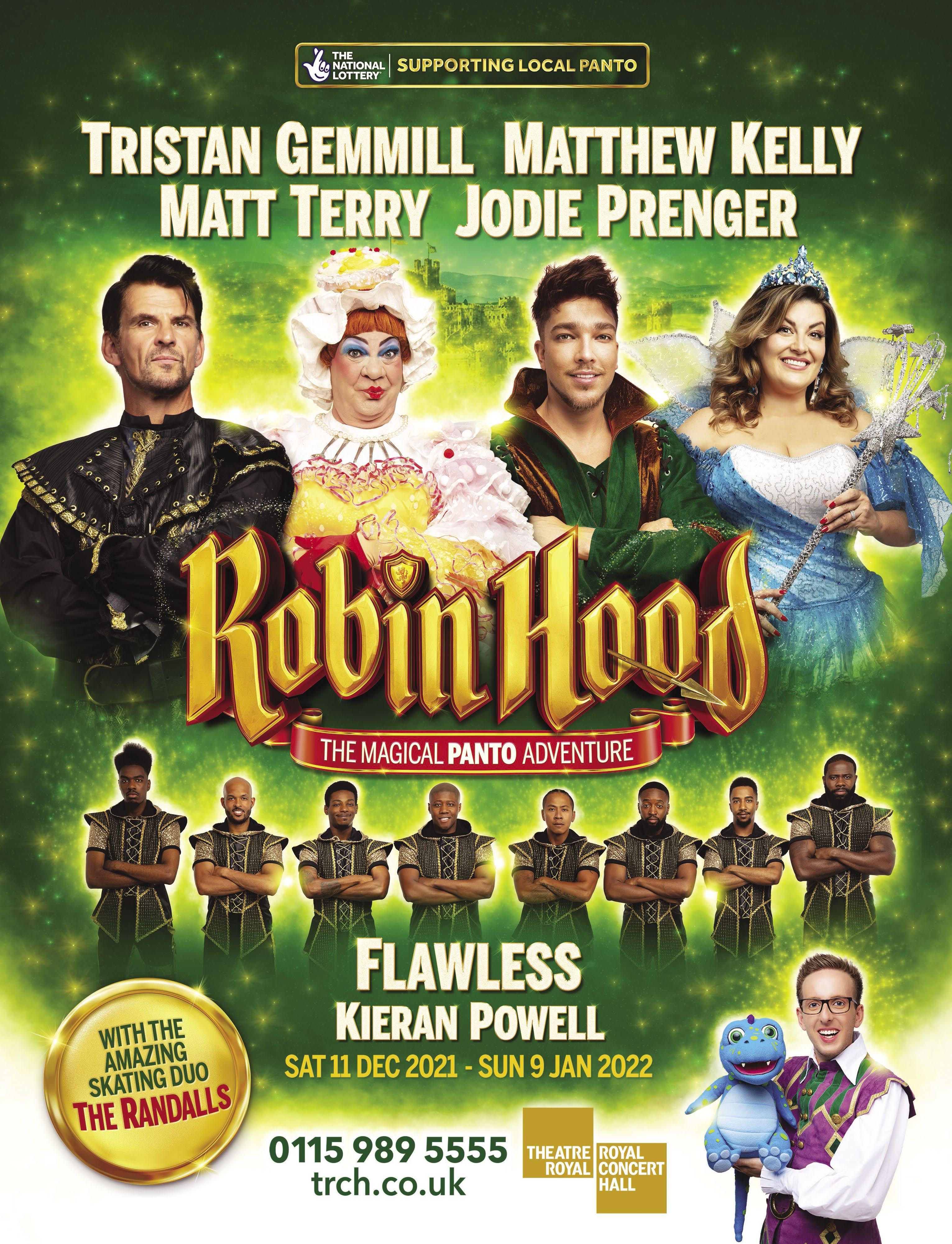
Crime and cinema have gone hand-in-hand since the very beginning. Way back in 1912, short film The Musketeers of Pig Alley (which I definitely didn’t just Google - I’m a cinephile, I swear) delved into the shady underbelly of lawlessness in New York’s gangland territories. Since then, filmmakers like Martin Scorsese and Francis Ford Coppola have made their names - and fortunes - from their love of the genre. But what makes a truly good crime film? Clearly, they’re never a guaranteed success. For every Goodfellas there’s a Black Dahlia , for every Godfather there’s a Chaos. Some of these movies go on to define a generation, others gather dust on the shelves of your local Poundland.
Well, if I may be so bold, I would suggest that the most effective crime dramas are ones that are ridiculously entertaining while refusing to endorse the brutal world in which they are set. Take Donnie Brasco, for example: Mike Newell’s gripping flick has a ton of quotable lines (“A wise guy never pays for his drinks”) and memorable moments (discussing the meaning of “Fuggedaboutit”), yet at no point are things glorified beyond reason. Sure, there are cool cars, tense shootouts and an actual bloody tiger, but throughout the film there is a critique, a condemnation, of the emptiness of these characters’ livesepitomised by the morose mess that is Al Pacino’s Lefty.
Compare this to the likes of 2013’s Gangster Squad , which is all style and no substance - setting out solely to make the titular ‘squad’ look cool and suave - and it’s clear to see where the disparities lie. Without the depth and complexity of properly interrogating this area of society, of actually having something of meaning to say, these movies can easily fall flat. They can, if you will, commit a crime against cinema.
words: George White
A decade after setting up an at-home cinema in their attic, Gavin and Lucy Morrow have become key figures in Nottingham’s screen scene - holding popular monthly showings of cult and classic releases at the Savoy. We catch up with the film fanatics behind The Loft Movie Theatre

What inspired you to set up The Loft Movie Theatre?
Lucy: Ten years ago we converted our loft into a cosy four-person cinema, which we christened 'The Loft Movie Theatre', and just for fun we created a Facebook page where we would upload the posters of each film we watched. To our amusement, people started to interact with the pageand even voted us the fourth best cinema in Nottingham on Google!
Gavin: In 2016 we were chatting about movies with Dan Keeling from the Nottingham creative powerhouse Porlock Press, and together we decided to host a screening of Repo Man as part of that year's Scalarama. It was the first time Lucy and I had screened a film in public and, to our delight, not only did the event sell out but our audience made the night into a proper collective experience.
Your screenings are held at the Savoy Cinema. Why is this your venue of choice?
Lucy: One of the most vivid memories people often have of the Savoy is the old upstairs bar, a cosy old-fashioned lounge with a ceiling plastered in movie posters - and this was actually the inspiration behind the decor in our home cinema in the loft. So when we started showing films in the real world, it felt right to do so there.
What have been some of your favourite showings?
Gavin: Our screening of Aliens in December 2018 was a complete joy! We actually almost sold out every seat in both Screens 1 and 2, so it was the busiest event we've done - and to top it off, the United Kingdom Colonial Marines patrolled the event and introduced the film with us.
Lucy: Our Christmas 2017 screening of Flash Gordon also stands outseeing such a vibrant film in all its Technicolor glory. I remember my face hurt afterwards from smiling!
How do you decide which films to screen?

Gavin: Obviously all of the films we choose are titles we want to watch ourselves - but we invite our audience to give us their ideas too. There are some practical limitations like being able to source the license for a film, but we're always open to suggestions, so readers - let us know what you'd like to see by emailing theloftmovietheatre@gmail.com!
What are your future plans?
Gavin: Our next event at the Savoy is our 'Halloween Hangover' screening of The Lost Boys on Monday 1 November, which we're presenting along with our friend Rob Lane from the pop culture podcast Straight
To Video
You obviously went a long time without getting to host events. How has the response been since you returned?
Gavin: It was understandably a little slow starting back over the summer as people got used to going out again, but our September screening of The Terminator felt like we were getting back to normal, with a bustling Screen 1.
Lucy: We'll also be restarting our Food and Film events in the Rough Trade bar early next year in collaboration with Chef Jugz, a Nottingham-based street food connoisseur with a passion for film. He designs the menus to complement each film, and anyone who has been to one of these events will tell you the food is amazing!
The Loft Movie Theatre hold monthly screenings at the Savoy Cinema. Follow their Facebook page to keep up to date with future events.
facebook.com/theloftmovietheatre
To Watch Banff Ocean Film Festival 2021
Spoiler alert: the ocean is big. And the Banff Ocean Film Festival showcases just how big. Through a stunning selection of shorts, audiences can explore all the astounding marine life the watery part of the world has to offer.

To Remember Robin Hood (1973)
Disney’s Robin Hood - the timeless masterpiece that it is - was released 48 years ago this month.

Starring the city’s most famous outlaw as a smooth-talking, arrow-firing, um, animated fox, this ol’ classic is still one of the finest takes on the local legend.


Showcasing everything from cult classics to ‘crap cinema’, this LGBTQIA+ institution is the place to be for film fans who want to join a proper welcoming community. Drop them a follow to keep up to date with screenings!
@fortuneandgloryfilmclub

Our screening of The Terminator felt like we were getting back to normal

With stunningly eerie vocal tones and a broad musical style that ranges from jazz to folk, Nottingham singersongwriter Chloe Rodgers is set to release her debut EP Back To The Quay this month. We sit down with the rising artist to chat about the record and her upcoming headline slot at The Bodega…


How long has the EP been in the works for?
It has taken a long time, actually. We started working on it in lockdown and it was really difficult to get it finished because me and my producer were never in the same room. It was hard to communicate the changes that I wanted to make. I’d say, ‘Oh, can we change this little bit?’ and then he’d do something completely different, and because I’m not sat next to him it would just take ages. My voice wasn’t great as well, so I kept trying to do the vocals but it took a while for my voice to get better after being ill last year. It just kept going wrong when I was trying to do the vocals and it took until literally about a few weeks ago to finish.
One of my favourites on the EP is Better View, it's so jazzy and really stands out amongst your other tracks. How did that come together?
That one is quite a feel-good tune, isn’t it? I wrote that ages ago and never recorded it properly, I only ever played it just with my acoustic guitar. Then we did a few gigs where I played it live with a band, and my bassist plays the double bass, and he did this walking bassline on it that I thought was sick. We tried a few different versions of the song, a fast one and a slow one, and we decided to settle it somewhere in between the two. I really like what it ended up turning into. There are a few things that I wanted to be done differently but I’ll be able to do those live, so it doesn’t really matter.
What’s the point if you are just doing it for everyone else all the time? You want to be able to love your own music, don’t you?
Every track is so different on the EP, stylistically... I’ve always wanted to try as many different genres as I could, because there are so many that I love listening
to, and I want to make music that I love listening to. Because otherwise what's the point if you are just doing it for everyone else all the time? You want to be able to love your own music, don’t you? So, I just want to try loads of different things.
What are your plans for live gigs? I have seen you play acoustically which is stunning. Are you planning on having a band behind you?
So the gig I’ve got on bonfire night at The Bodega, there’s going to be seven of us playing and we are going to have backing tracks to fill in the parts that we can’t do live as well, which will be good.
Back To The Quay has a deeper meaning behind the track…
That one’s about my papa, who I lost in 2018. We’d been losing him for a while before that because he had a brain operation that went wrong, it just spurred on really bad dementia and by the end he couldn’t talk anymore - he was a shrivelled up shell walking around. We’d sometimes get a flash of recognition in his eyes for a second when we first saw him but it used to fade away pretty quickly, but before that, before he got poorly, he was just the best person ever. He was more like a dad to me than a grandad. He was the one who taught me how to ride my bike, and tie my shoes, and taught me to be who I am and everything like that. It was just a big loss. I wish he was still here to hear the music and stuff, because he got ill before I grew into the musician that I am now, and I know that he would’ve really loved this kind of music.
You recently did a busking tour. What inspired you to do this and how did it go?
It was eventful. Some of it was really good. There were three locations that I went to which were great; Cardiff, Liverpool, and Brighton. Other than that the other places I went to were quite dead, but I kind of knew they would be.
There were loads of campervan breakdowns as well so I only ended up doing about half of the locations that I was meant to do. We were driving back from a campsite in Leeds, and the van started filling up with smoke, so we pulled over and realised we are not going to be able to drive it again, so called a recovery geezer. I got it taken to a garage and it was in there for a month and a half, and Nick from my label came and picked it up like a week or two ago. He brought it round to mine for me to get my stuff out of it and I forgot that we’d left the coolbox full of food. We opened it, and the van was full of flies and there were rotten eggs and black bananas in the cool box.
There were loads of campervan breakdowns as well so I only ended up doing about half of the locations that I was meant to do. We were driving back from a campsite in Leeds, and the van started filling up with smoke, so we pulled over and realised we are not going to be able to drive it again, so called a recovery geezer. I got it taken to a garage and it was in there for a month and a half, and Nick from my label came and picked it up like a week or two ago. He brought it round to mine for me to get my stuff out of it and I forgot that we’d left the coolbox full of food. We opened it, and the van was full of flies and there were rotten eggs and black bananas in the cool box.
I had writer’s block for ages and now all of a sudden there’s just constant music in my head again, so I’m going to try and smash an album out
smash an album out
What's coming up next?
What's coming up next?
So I am working on writing an album to bring out next year, and I have lots of ideas. I had writer's block for ages and now all of a sudden there's just constant music in my head again, so I’m just going to try and smash an album out and make a bunch of demos towards the end of this year.
So I am working on writing an album to bring out next year, and I have lots of ideas. I had writer's block for ages and now all of a sudden there's just constant music in my head again, so I’m just going to try and smash an album out and make a bunch of demos towards the end of this year.
My label is moving their studio to France, so I think I’m going to be able to just bring a bunch of musicians with me on holiday to France for a bit and try and get it all recorded.
My label is moving their studio to France, so I think I’m going to be able to just bring a bunch of musicians with me on holiday to France for a bit and try and get it all recorded.

Chloe Rodgers is performing at The Bodega on Friday 5 November. Her debut EP Back To The Quay is out on Friday 26 November
Chloe Rodgers is performing at The Bodega on Friday 5 November. Her debut EP Back To The Quay is out on Friday 26 November
@chloe.rodgers.music
I had writer’s block for ages and now all of a sudden there’s just constant music in my head again, so I’m going to try and

Son is Big Son (Single)
Son is Big’s latest single, simply titled Son, is a hazy number that will have you feeling utterly introspective. Plunky acoustic beats are underscored by consistently atmospheric backing tunes, perfectly complementing the relaxed, almost hypnotic vocals of this talented up-and-coming artist. Sure, it’s a long song - perhaps a tad too long, topping out at just under five minutes - but it’s intoxicating enough for you not to care. After this impressive start, we’re expecting big things from Son is Big. George

 White
White
Encompassing echo and space driven synths and vocals, Inlove2 offers transportation into a world of nineties ambient house to breakbeat. The EP features four singles released in a run up to Lone’s first album in five years - and after such a long break between records, what a return it’s going to be. With massive movement between tracks, Mouth of God features desolate breakbeat, while remaining especially atmospheric. Hidden by Horizons is expansively irresistible, with Morgane Diet providing effortlessly soothing and melodious vocals.
Katie LyleThe Hope (Album)
Notts’ own Ferocious Dog are back and better than ever with a hefty seventeen tracks, taking you on a journey of Celtic-inspired compositions, with such a large combination of influences, from punk to folk to ska. Feeling cinematic at times, the lyrics throughout are honest, heartfelt and emotive, complemented by upbeat instrumentation that is hard not to stomp your foot to. Tracks like Victims offer feelings of classic punk, contrasting with The Hope that is emotive and slow. An exciting return from the Celtic-folk punk band, for sure.
Katie LyleIf

Our Kingdom Undone (Album)
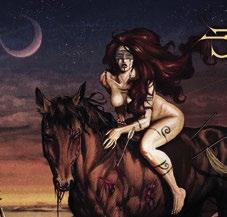
Whether you’re a proper metalhead or, like me, you’re more of a Jack Johnson guy, it’s impossible to ignore the impressive following that Beyond Grace are gathering for themselves - boasting over 2,600 likes on Facebook alone. And, with the release of their latest album Our Kingdom Undone, it’s clear to see why. From the unsettling artwork to the ferocious yet focused energy of each of the record’s eight tracks, this is a band that has complete confidence in their sound and their style.
 George White
George White
After winning the Young Creative Awards in 2012, Rob Green has risen to fame as a bit of a Nottingham celebrity. His sound, drawing on soul, gospel, R&B and rock, is a sweet and easy listen. Green’s new single Sleeping on My Own is melodic and heartfelt, telling the story of a lost romance. The song acts as a tragic love letter, but at the same time is pleasant to listen to and sonically uplifting with the rising gospel-like chorus. Known for his spirited live performances, we can’t wait to hear this live.
Lizzy O’RiordanYour new Notts music tip sheet, as compiled by Nusic’s Sam Nahirny. Want more? Check out the fortnightly podcasts and
Lajay

As the debut drop from Lajay, Push Bike Vibes is everything that we love about NG. Unique flow, a mad catchy melody plus a co-sign and video cameo from Notts’ own Diana Drill, all wrapped up in a package that says ‘world domination incoming’. Proper 0115, while also having enough pop sensibility to see it all over daytime radio. Get ready, cos Lajay sure is.



@lajayuk
Stan Buckroyd
Warm dulcet tones, and more than a knack for a twinkly infectious guitar melody ensures this is destined to be on whatever the 2022 equivalent of The Inbetweeners is. Stan is everything you want your indie frontman to be: full of swagger, unique and he looks pretty freakin’ cool, too. His latest single, What You Need, feels like it has FIFA soundtrack written all over it.
you’re from Nottingham and want to get added to our music writers list, or get your tunes reviewed, hit us up at music@leftlion.co.uk
Be Loved allows a playful and personal glance into Carmen Argote’s digestion of a space, in dialogue with each environment she inhabits. Developed through a residency at Primary, and including pieces previously crafted in Los Angeles, this exhibition encompasses works on paper, video, and sculpture. We take a look at the expansive new project...
As I walk through Primary to view Be Loved , the first UK solo exhibition by Argote (b. 1981, Guadalajara, México), my interest is piqued by the various small figures resting against the walls. The braided models stand only a few feet high as they welcome you in, petite ushers fashioned from braided paper, plastic, and feather. The playful forms open the exhibition with a nod to the boundary of performance and sculpture; Argote’s practise revolves around action-ritual, and the process of making these friends feels just as important as where they stand now.
and architecture, poetically tying together a notion of the self and inner child to the building which the work is drawing upon. Beside the pieces on the floor, there is a video projection comprising of ritual-actions taking place in one of the biggest and oldest cemeteries in LA, documenting Argote as she does rubbings and performance. Argote becomes fascinated with the transference of matter; as she uses crayons to create rubbings from the cemetery, the clump of wax comes to resemble a strawberry. This impermanence of materials is echoed through the room as more clumps of crayon dot along the wall (presumably those used to make the work in the centre of the room) and play against the memory of Argote’s performance. The video documents the process of these actions looking at generational familial relationships, and the influence of patriarchal thinking, values, and violence.


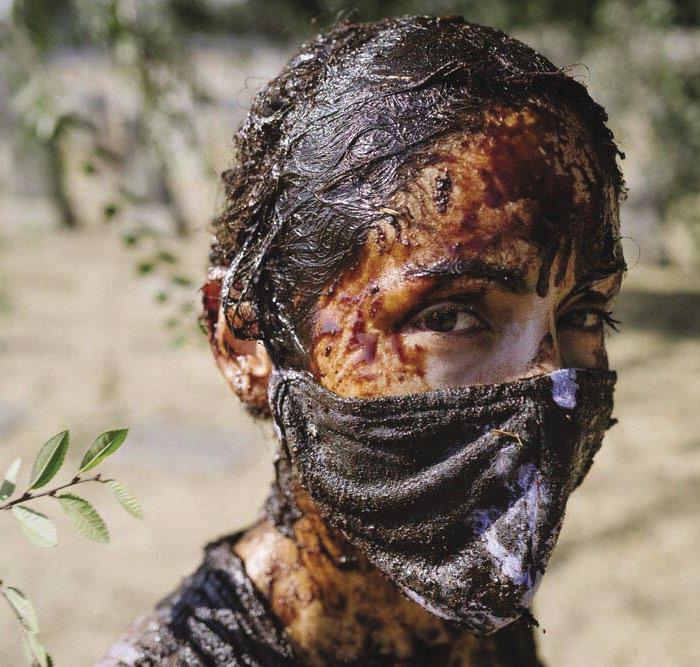
Tell us a bit about yourself…
I’ve always lived in Nottingham, moved around the city throughout my life and currently live on the outskirts. I have a one-year-old son, Seth, who I think the world of. I am a UKCP registered counsellor and psychotherapist and also a practising artist in my spare time (which is limited!). I go by the name Leosaysays as an artist, which has just stuck from a made-up character from many years ago.
What was the inspiration behind the cover?
Dante’s Inferno, which is a fairly obvious and standard source when looking at depictions of Hell, but stands the test of time as being a rather imaginative insight into Hell and its punishments for each sin (or Dante’s warped mind). I also wanted demons depicted to be reminiscent of those from many medieval paintings, which were often hybrids of animal and humanoid forms, to represent the bestial nature of Hell as opposed to the higher morals of Heaven.
I like a lot of fantasy art, kitsch as it can be, having grown up with video games of the eighties and nineties in which the box art was often a sickly, airbrushed illustration that resembled nothing from the actual gameplay! In this instance the original Doom cover art was a primary inspiration .
How does it compare with some other projects you’ve worked on?
I think I’ve always been drawn to darker aesthetics and content. I like a lot of psychedelic, outsider and lo-fi art anyway and I’m a huge fan of seventies and eighties horror of the Giallo variety – a lot of my work has often drawn inspiration from those sources.
What was the biggest challenge that you faced in creating the piece?
Drawing depictions of demons whilst facing my own inner demons, especially around Halloween when the veil between the material and spirit worlds is at its thinnest…
The main exhibition space hosts three stretches of paper, works made in situ which now line the expansive floor. The silhouettes of three figures stain the surfaces in a row and as I step back to view the piece, I can see the origin of these marks through the window which overlooks the old playground. Each one is a vibrant rubbing of the hopscotch from when Primary used to be a school, and at its crest rests another braided creature, battered by the elements having finished its playtime. The paper acts as a bridge between body
Leaving the exhibition, I walk past a braided figure that I’d previously missed, coated in feathers, and laying leisurely along a pipe by the steps leading in. While most of the materials used for the work were procured on site, these feathers flew from LA, in a coat Argote bought to brave the British weather - but with no need of it as she departed, the coat was repurposed to envelop this last figure. A sense of unresolvement is perhaps to be expected when work is process based, the props of these ritual-actions remain present because the process is never quite finished, as Argote goes on to continue this project back in LA.
Be Loved is available to view at Primary on Fridays and Saturdays until 11 December 2021
weareprimary.org


Tell us about some projects you’ve worked on in the past…
This is my third LeftLion cover. I’ve done various bits and pieces over the years, most recently for the New Trajectories magazine which is a 2021 homage to the life and works of Robert Anton Wilson – working alongside some fabulous artists, writers and general weirdos there!
What have you got planned for the future?
I want to run to the hills, somewhere high up to avoid the floods and civil unrest due to break out around 2023 onwards. I’m not sure if I’m joking or not.
Is there anything else you’d like to tell the LeftLion readers?
Just because we know Demons don’t exist, doesn’t mean they can’t influence our lives.
Argote becomes fascinated with the transference of matter; as she uses crayons to create rubbings from the cemetery, the clump of wax comes to resemble a strawberry
words: Alexander Watkin photos: Jules Lister
Few twentieth century artists have impacted the cultural zeitgeist like Andrew Logan has, leaving a lasting impact on filmmakers like Derek Jarman and cultural icons such as Malcolm Mclaren and Vivienne Westwood. Now, the artist is the focus of The Joy of Sculpture at Bonington Gallery, displaying jewellery, sculptures, and portraiture taken from Logan’s fifty year career…
Like a hidden world, The Joy of Sculpture is found tucked away within Nottingham Trent University’s Bonington building, one of utilitarian tiled flooring, raw concrete and exposed services. Space literally and figuratively expands as you enter the gallery. The main gallery has a double height ceiling, it’s spacious and airy and clearly contrasts the more enclosed corridors before you enter the exhibition. As you walk into the gallery, an essential component of Andrew Logan’s work becomes clear – a desire to counteract the supposed coldness of everyday life.
Logan’s work brings a playful excess to the space, which consumes the senses as absurdism takes over from the rationalism of the Bonington building. Curated by Joshua Lockwood-Moran, the exhibition pulls together fifty years of work from one of Britain’s most iconic twentieth century artists.
Andrew Logan began sculpting in 1968, though he is mostly recognised for his jewellery and spoof beauty pageant, Alternative Miss World Bonington Vitrines, a distinct space accessible before you enter the main exhibition, is dedicated to archival material from Alternative Miss World ; selected jewellery courtesy of Logan’s family and friends is displayed within the main exhibition.

A key part to Logan’s art is the artist himself. Logan is displayed on the poster of the show. He is in the photographs displayed within the main exhibition, and all over the archival material of Alternative Miss World In some way, the show seems to assert the idea that Logan himself can be as much the art as the pieces he creates. Before you enter the main space there is an archival video of Logan guiding us around his The Glasshouse Studio in London. In the video he speaks of a “totality” with his artistic creation; there is “no beginning, no end”, a sensibility that is felt deep within the exhibition.

This is not only true in the recurring presence of Logan’s self-image, but through the fact the


walls of the gallery space have been painted in the style of a cartoon sky with cotton candy clouds. This idea comes from 1967 photographs of Logan’s bedroom on Denmark Street in Oxford, which are also on display in the exhibition. The exhibit extends further than the white cube; entering it is like entering Logan’s subconscious.
Stepping into the main gallery space you are immediately confronted by the gigantic gold wheat crops of Goldfield , towering sculptures constructed from aluminium, steel, resin, glass, glitter and straw. There is a sense of surreal theatricality, as if the gallery has been transformed into a theme park. LockwoodMoran does a good job utilising this to divide the space and create an accessible route through the exhibition.
work brings a playful excess to the space, which consumes the senses as absurdism takes over from the rationalism of the Bonington building
Once you exit Goldfield you begin to explore a collection of wholly different objects. The individual pieces to some extent bleed into one. Homage to the New Wave, in particular, is placed in a space where it is neither here nor there. Understandably, such a space is difficult to divide up meaningfully. There is certainly no outright issue here, simply that the show itself does not make the argument to individually consider each piece.
The exhibition’s strength, though, is its transformative quality, which is intertwined with Logan’s process. Logan’s work takes detritus and found objects and places them into
the gallery setting. With every piece on display there is an otherworldly, surreal and mystical quality. For example, The Arum Lily Record Player is a record player shaped like giant lilies, with a reflective mosaic base using scraps of glass. Each day the exhibition invigilator chooses a record to play from Logan’s personal collection, creating a piece that is so dreamlike it feels almost alien. With this auditory component, Logan introduces another element to the sensory experience of the exhibition. There is a real optimism in Logan’s approach in trying to find something more, something beautiful, within the everyday.
On display for the first time is a four metre high glass portrait of artist Duggie Fields titled, simply, Duggie. Constructed from wood, glass, glitter and resin, Duggie stands with open outstretched arms, the portrait yearning to pull the viewer in. Often when we study art closely we can begin to see more and more of ourselves in it; moving closer to Logan’s mirror portraits, literally all you see is yourself.

Reassessing Logan today, there are similarities to social media influencers. His art and practise is so much about himself, as already explored, everywhere you look his self-image is present. Like an influencer, there is perhaps an element of performance in the way he accentuates and heightens his personality, which is particularly apparent in the introductory video outside the exhibition doors. Perhaps a lasting outcome of the exhibition should be considering Logan’s art in relation to today’s shallow personality obsession. And asking questions like when does art become egotistical, if ever?
However, what can be said with more certainty is that, in every way, The Joy of Sculpture is an all-encompassing exhibition. Ultimately what it provides is a complete sense of the artist, both in terms of his art and him as an individual.
Andrew Logan: The Joy of Sculpture is currently on view at Bonington Gallery until Saturday 11 December
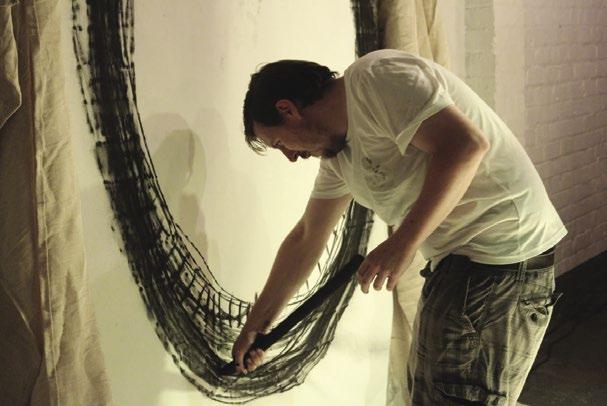
boningtongallery.co.uk
Featured Gallery
Our Silver City, 2094
Fancy a bit of time travelling? Our Silver City imagines Nottingham in the distant year 2094. Dystopian and utopian all at once. H.G. Wells, your job is in danger.
From Saturday 20 November
Nottingham Contemporary
Featured Gallery
Breaking the Mould: Sculpture by Women since 1945

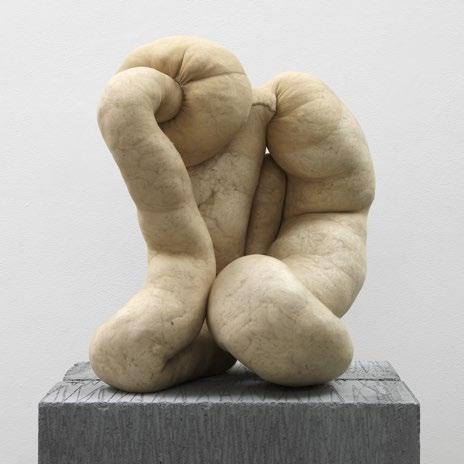
The squidgy, the pointy, and the increasingly abstract – Breaking the Mould explores the work of fifty female sculptors ignored by history. Be a feminist, have a gander.
From Saturday 18 September Lakeside Arts
Artist Spotlight
Benjamin Rostance
Does anything scream childhood more than trauma and VHS tapes? Benjamin Rostance explores both in his work. Reflecting on his growing up years, Rostance uses film to evoke those vintage vibes.
benjaminrostance.co.uk
Logan’s


First classed as listed buildings in the eighties, the Promenade is home to some of Nottingham’s oldest and most colourful houses. We chat to Dan Lucas and Laura Summers about The Oral History Report - the book capturing the living memories behind this historic neighbourhood...
If you’ve ever been at the edge of St Ann’s and the city centre, then you’ve probably seen the Promenade - a row of brightly coloured houses that sit next to Victoria Park. My family always call them Balamory houses because of the colour, but they’re also some of the oldest in Nottingham. Dating back to the 1845 Enclosure Act, they’re built on former agricultural land that was released to build houses and factories.
Now, Nottingham City Council own sixteen of the homes in the area and are responsible for their upkeep. I talk to Dan Lucas, strategy officer at Nottingham City Homes, who tells me that they came into the Council’s hands to preserve the history of St Ann’s. In 2019 NCH completed a refurbishment of these sixteen properties and quickly realised that there was an interesting story to be told about the area. “We wanted to tell a broader story of the homes, and the people who lived and had lived in them,” Dan says.
pre-arranged and conducted by a set of volunteers, who had been given oral history training from East Midlands Oral History Archive. Laura tells me that they ended up doing the bulk of the interviews via Zoom but notes that people were eager to be interviewed in person. “The first one I did was with Joyce White who is a 95-year-old,” Laura tells me. “I was there for three hours talking.”
The report is full of stories about community, which seems to be tight knit in the area. The gardens in the Promenade all face onto the street, and neighbours would stand at each other’s fences to talk over lockdown. In one interview, Alan Phelan describes how people knock on each other’s doors to invite them out, joking that he’s forty-three and hasn’t been invited to come play since he was ten. It seems that this has always been the way; Glyn Jenkins, who was born at number nine in 1950, remembers sharing a bathtub with the other kids on the Promenade. Likewise, Joyce White recalls a tiny school being run from her front room during the Second World War.

The other topic that keeps reoccurring is how much everyone loves the green space, with many residents describing Victoria Park as like a second garden to them. One of my favourite stories in the book is from Glyn, who describes the park as a ‘magic place’ where he grew up playing games.
that the area was particularly important because they were one of the few houses remaining of old St Ann’s. I knew they were beautiful, and I knew they had a good community, but I didn’t realise how important they were.”
Both Dan and Laura seem eager to iterate the significance of these houses, which were made into listed properties in the eighties for their architectural significance. “They have a group listing, which means it’s integral to the look that they’re all listed together,” Dan tells me. “They would typically just list a couple of houses as examples, but obviously the decision here was to do the whole lot.”
Nottingham City Homes applied for a bid from the National Lottery Heritage fund, and from here The Promenade Heritage Project was created. In 2020 local historian Chris Matthews put together The Heritage Report which explores the history of the Promenade, alongside Robin Hood Terrace and Campbell Grove. Then, in 2021 a second book was published, telling the stories of the residents both past and present. This book, a joint effort from Chris Matthews and Laura Summers, is The Oral History Report
“Chris did design work and project budget management, and my job was to be in charge of community engagement,” says Laura, when I ask about her role in the project. “We had envisioned an element of going door to door, and people inviting us in to tell their story,” Dan adds - but due to COVID, this was impossible. The interviews were largely
Out of curiosity, I ask Laura and Dan about the colour of the houses. “We realised no one quite knows when they were painted,” Laura says. “It seems like one person painted it a nice colour, and everyone did the same. When they were done up by the council for the General Improvement Act, they were all just browns and things like that.” It seems to have happened at some point in the nineties - in the book Francis Dore tells the story of painting number fifteen a bright orange one afternoon, armed with a crate of beer to help the day along. “It seems like quite a modern thing in the history of the houses,” Dan says.
We start to talk about personal connections to the project. Dan says that he didn’t really know the area well, but Laura has a strong connection to St Ann’s. “I grew up in the seventies council homes, when St Ann’s was full of houses like the Promenade and Campbell grove, but they were all swept away in the so-called slum clearances,” Laura says. “I was aware
When you open the first page of the Oral History Report, there’s a foreword that describes the project as collecting memories for posterity, which I think sounds very quaint and Victorian. At the end of my conversation with Dan and Laura, I ask what they hope the project will achieve. “For people to know that the buildings are important in the history of Nottingham,” Laura says. But not only that, adds Dan. “I’m hoping people will be inspired to research the story of their own house. People think that they’re not important, but that’s not true because everyone’s story is interesting. How fascinating would it be if you could hear the voices of some of these people listed from 150 years ago? Now, we’ve got these recordings from people today, so in a hundred years’ time, they’ll be able to hear us.”
Both The Heritage Report and The Oral History Report can be found online for free. Nottingham City Homes are especially grateful for the support from the National Lottery Heritage Fund, and to National Lottery players for making this project feasible

The report is full of stories about community, which seems to be tight knit in the area
We realised no one quite knows when they were painted. It seems like one person painted it a nice colour, and everyone did the same
words: Ashley Carter
illustration: Raphael Achache

In keeping with our Seven Deadly Sins issue, we look back at a definitive turning point in the history of religion in England, exploring how King Henry VIII’s Reformation fuelled the Pilgrimage of Grace, a Northern rebellion that placed Nottingham at the centre of a power struggle for the soul of a nation…
Whether you’re religious or not, your understanding of ‘sin’ will have been greatly shaped by Henry VIII and his Reformation. Breaking away from the control of Rome and the Catholic Church in the sixteenth century, he established himself as the Head of the Church of England, alienating a large proportion of his subjects in the process. In reaction, a widespread revolt known as the Pilgrimage of Grace rose in defiance in the North, inadvertently placing Nottingham – a strategic middleground between the traditionally Catholic North and a South which was easier for Henry to control –in the middle of a tug-of-war for the future of England’s conscience.
There’s a reason that Henry VIII is one of the most wellknown figures in British history. The head-lopping, drumstick-chomping, magnificently-calved monarch left more of a mark on the social, political and religious landscape than arguably any other monarch before or since. His decision to put an end to the grip Catholicism had over the country sent shockwaves through Europe, the repercussions of which were still being felt in England two centuries later. He fundamentally changed the way people thought about the two cornerstones of sixteenth century religious practise - sin and salvation – forever. His drastic policy shift made Brexit look like a game of rock-paper-scissors, as the country was divided – geographically and morally – to the extent where collapse, foreign invasion and outright revolution were all very tangible possibilities. The Protestants under his reign were concerned that he wasn’t reforming the church fast enough, the Catholics were distraught that their religion was being decimated, least of all by a ruthless policy of dissolving the monasteries, and all in positions in power were concerned that Henry had become overly reliant on ‘base-born’ (common) men, such as Thomas Cromwell, the man spearheading his Reformation.
Nottingham wasn’t spared the wrath of King Henry, Cromwell and their Reformation, with Beauvale Priory in north-west Nottinghamshire subjected to particular brutality. Robert Lawrence, the Prior of Beauvale, travelled in person to London in 1535 with the aim of meeting Cromwell and persuading him to stop the dissolution of his priory. After refusing to meet Lawrence, Cromwell had him and two other Priors who had made similar journeys thrown into the Tower of London. There he was tortured and tried with treason for refusing to acknowledge Henry as the head of the church and, after being violently threatened by Cromwell, a reluctant jury found Lawrence guilty. He was executed in an intentionally barbaric manner, being hanged and drawn in his monk’s habit, before
being mutilated, butchered and eventually cut into quarters while still alive. Four centuries later in 1970, Lawrence would be made a saint by Pope Paul VI.
Events reached fever pitch when, in 1536, a series of rebellions started to spring up in the North. By this point, Henry had already beheaded Anne Boleyn, the woman for whom he had broken from Rome in the first place after the Pope had declined his numerous demands for an annulment from his first wife, Catherine of Aragon. The first place to see action was Louth in Lincolnshire, where royal commissioners had been sent to seize the church’s land, jewels, gold and silver. Far more than being religious artifacts, many of these items had deep personal meaning to local residents, and had been donated in memory or as a blessing to a loved one. Led by Nicholas Melton, a monk and shoemaker, a 22,000-strong army gathered from nearby towns with the aim of forcing Henry to reverse the policy. They seized Dr John Raynes – one of Thomas Cromwell’s commissioners who had recently informed the clergy of the seizures – dragging him from his bed and beating him to death, burning all of his registers in the process. Gaining support from local gentry, their numbers swelled as they occupied Lincoln Cathedral.
and loyalty to their God – a decision that caused a widespread crisis of conscience. Rather than choose one or the other, they were demanding the right to do both.
The fact that members of the aristocracy were flirting with the idea of joining the burgeoning rebellion was telling. Lord John Hussey was a member of the House of Lords from Sleaford who had grown rich from the early dissolutions, but had grown disillusioned with Henry’s religious policies, even going so far as to encourage Spain to intervene. When word of the initial rebellion reached him, Hussey made a show of resisting the rebels, while also offering to ride to the king to plead on their behalf. He had the appearance of a man willing to change with the wind, reluctant to commit to any one side until one had the upper hand. He fled here to Nottingham, where he refused to join the king’s army that was being assembled.
But Henry’s threat worked as, less than ten days later, the rebels’ numbers had dwindled, with many choosing to return home to avoid facing the wrath of Suffolk’ trained army of soldiers. Melton and the other ringleaders were rounded up and executed as a warning to other would-be rebels. However, their deaths would have quite the opposite effect.

Their demands were simple: the freedom to continue worshipping as Roman Catholics, protection of the treasures of Lincolnshire cathedrals and an end to excessive taxes during peacetime (their discontent had been exacerbated by a bad harvest and resultant high food prices). Henry reacted by sending word to the rebels to disperse, or face the forces of the Duke of Suffolk – Henry’s right-hand-man and both the best soldier and leader of men in the country - which had already been mobilised and was camped on the banks of the River Trent. It’s important to note that, for all of their action, the uprising was never meant to remove Henry from the throne. In fact, despite his public image being hugely undermined by his divorce from the popular Catholic Catherine and subsequent marrying and beheading of the unpopular Anne Boleyn, the people, both poor and aristocratic alike, were still fiercely loyal subjects. They were ostensibly being forced to choose between loyalty to the crown,
Robert Aske was the son of an old and well-established Yorkshire family. A lawyer and devout Catholic, he was well-known and respected in aristocratic circles so, when a subsequent rebellion broke out in York, he was asked to lead. The Pilgrimage of Grace, as it was to be known, would become the most serious of all the Tudor era rebellions. Whereas the Lincolnshire Rising had been a spark extinguished within two weeks, the Pilgrimage of Grace was a full-on bonfire of discontent that threatened to capsize Henry’s authority. Men from all of the major Northern regions – Northumberland, Cumberland, Lancashire and York – gathered under a banner bearing the Holy Wounds of Jesus Christ and, led by Aske, swore an Oath of the Honourable Man before entering and occupying York. Once there, they arranged for expelled monks and nuns to be returned to their houses, and normal Catholic practises to be resumed.
In usual bombastic form, Henry demanded to meet the rebels at the head of an army he would personally lead. But those royalists closer to the situation, namely Thomas Howard and George Talbot, had a more realistic view of events, and saw the very real threat the rebels – who now numbered between 30,000-40,000 –posed. With an army of just 5,000, Howard feared being
England was split in two and, with Nottingham as a middle-ground, the fate of a nation hung in the balance
massacred, and so offered Aske and his rebels a truce, opening negotiations near Doncaster.
Their demands stretched further than those of the original rising, with Aske’s demands including: a full pardon be granted to all men involved in the rising; a Parliament be held in either Nottingham or York; that no man north of the River Trent be compelled to attend any other court except York; the repealing of Henry’s anti-Catholic laws; the reinstatement of Princess Mary (daughter of Catherine) to the line of succession; reinstatement of Papal authority and restoration of the supressed monasteries and the removal of Thomas Cromwell from the Council.
Fearing for his life, Norfolk made promises of full pardons, a Parliament to be held in Nottingham or York within a year, and safe passage for two delegates from the pilgrimage to Windsor, where they would be granted an audience with Henry to present their demands. It’s unknown whether Norfolk had the authority to make these promises or, if he did, Henry ever intended to fulfil them. It’s likely that Henry was biding his time, waiting for the rebels to slip up, as he met with the delegation. The truce held for all of November 1536, during which time the pilgrimage must have felt that they’d accomplished their mission. Meeting again with Norfolk, Aske and his fellow leaders tore off their Pilgrim badges and dispersed. They’d had assurances that their demands would be properly considered, and all would be pardoned.
The fact that such a vainglorious king such as Henry VIII humbled himself to consider these demands illustrates

just how much of a threat they posed. English monarchs at this time had no standing armies and, as such, a force of thirty thousand men constituted a very tangible threat, particularly if Catholic countries like Spain or France leant their weight to the cause. Henry’s own father, Henry VII, had seized the throne with just a fraction of that number only half a century earlier.
When hearing of their demands to remove his ministers, namely Thomas Cromwell, Henry responded with rhetoric more attune to creating a rebellion rather than quashing one, saying:
“And we, with our whole council, think it right strange that ye, who be but brutes and inexpert folk, do take upon you to appoint us who be meet or not for our council; we will, therefore, bear no such meddling at your hands, it being inconsistent with the duty of good subjects to interfere in such matters.”
Henry didn’t have to wait long for an excuse to get his revenge. Less than a month later, another uprising –which hadn’t been sanctioned by Aske – rose in the North, sparked in part by those who refused to trust in their king’s promises. Henry didn’t need a second

invitation and, considering it a breach of the amnesty he’d negotiated, apprehended all of the leaders of the Pilgrimage of Grace, despite the fact that they were not involved with this new uprising. Lord Hussey was beheaded, whereas Aske was hanged in chains (the fact that he was portrayed by Sean Bean in the 2003 TV film Henry VIII should have been enough of a clue that his story wasn’t to have a happy ending). Henry imposed martial law in the North, massacring hundreds in a series of brutal assaults. Many, including women and children, were hanged in their own gardens as an example to their fellow villagers. Lords, knights, monks and priests were not spared, as anyone who was even partially suspected of having taken part in, or even sympathised with, the pilgrimage being ruthlessly put to death without proper trial.
While the Pilgrimage of Grace is seen as the most serious of all Tudor-era rebellions, it only hastened Henry’s policy of removing Catholicism root and branch from the country. With the loss of their leadership, as well as countless religious figures, the Catholic movement in the North was broken, and Henry was free to fill his coffers with the treasure taken from the monasteries.
The reformation he started was continued after Henry’s death by his son, Edward VI and, after a brief but bloody return to Catholicism under his daughter, Queen Mary, was finalised by his younger daughter, Queen Elizabeth I. But for those few months in 1536, England was split in two and, with Nottingham as a middle-ground, the fate of a nation hung in the balance.
We’ve teamed up with the National Justice Museum to put objects from the past into the hands of people from the present. This month, we took a chalice that was used in the Newgate Prison Chapel to Tony Challis from the Nottingham Secular Society. In 1780, Newgate Prison was destroyed by a mob during the Gordon Riots in London.


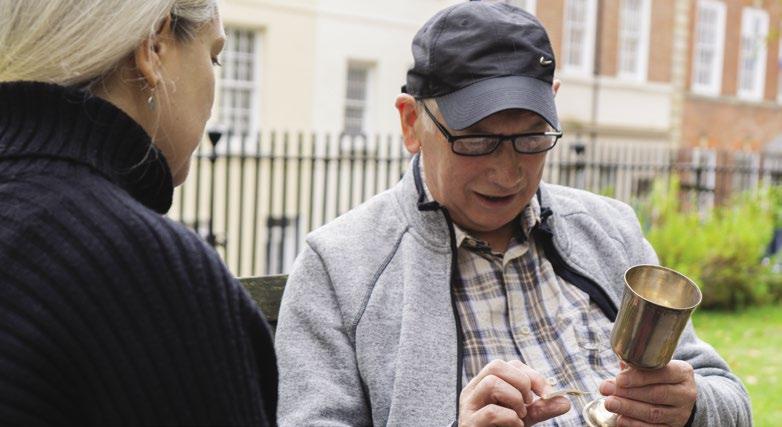
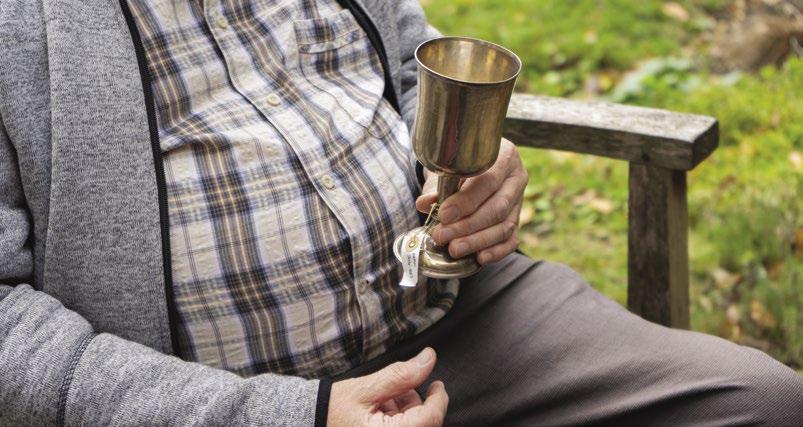
Two years later the prison was reopened and this commemorative chalice was built to celebrate the new chapel. It would have been used from 1782, all the way to the prison's closure in 1902.
You could happily drink out of it - probably consecrated wine, or maybe water for some people. It says it’s from the chapel of Newgate, and the year is 1782.
This could have been used in the final service before they were executed. This could have been their last sip.
I visited the jail chapel near Lincoln Cathedral once. In the ancient times the prisoners would be boxed in so they couldn’t move and their eyes were focused on the priest. I wonder if this was used in services where prisoners were encased in that way.
1. 2. 3.and, with Nottingham as a middleground, the fate of a nation hung in the balanceIt’s an interesting object given that my surname is Challis. This looks like a chalice, or there is also something like that which is called a ciborium.
(After learning what the item was) I wonder if that was a prison where people would be held and executed.
MONDAY 1 NOV
������Acting Workshop
Nonsuch Studios
£9 - £80, 7pm - 8.30pm
���� King Charles
The Glee Club
£14, 7pm
���� Cassia
Rescue Rooms
£12.50, 7.30pm
���� Don Broco
Rock City
£30, 7pm
���� The Lost Boys
Savoy Cinema
£5 - £6.95, 8.30pm - 10.30pm
TUESDAY 2 NOV
���� Lawson Rescue Rooms
£18.50, 6.30pm
���� London Grammar
Motorpoint Arena Nottingham
£32.50 - £35, 6.30pm
���� Ben Caplan
The Bodega
£14, 7pm
���� Immersive Storytelling
Symposium
Djanogly Theatre
Free, 12.30pm - 5pm
���� Grayson Perry: A Show for Normal People
Theatre Royal and Royal Concert Hall
£26.50 - £36.50, 7.30pm
WEDNESDAY 3 NOV
���� Anna Meredith
Metronome
£16.50, 7pm - 11pm
���� Elles Bailey
Rescue Rooms
£14, 6.30pm
������Kitchen Dancing - Ultimate
80s & 90s
Beeston Methodist Church
£5 - £5.50, 7pm - 8.45pm
THURSDAY 4 NOV
���� Ross Noble: Humournoid
Theatre Royal and Royal Concert Hall
£28.50, 8pm
���� Virtual Reality and Performance Playday
Lakeside Arts
£10 - £15, 10am - 3pm
���� Ross Noble: Humournoid
Theatre Royal and Royal Concert Hall
£28.50, 8pm
���� Focus Rescue Rooms
£20, 6.30pm
���� Tempesst
The Bodega
£8, 7pm
���� Alex Henry Foster Rough Trade Free, 7pm
���� Keith Kahn-Harris: online
Five Leaves Bookshop
Free - £12.99, 7pm - 5.45pm

���� Jack Dee - Off The Telly
Theatre Royal and Royal Concert Hall
£25.50 - £25.50, 8pm
���� A Little Lustre Lakeside Arts
Free, 6pm - 9pm
������Home Rangers
Nonsuch Studios
£9.60 - £84, 10am - 12pm
���� Chloe Rodgers
The Bodega
£7, 7pm
♫ Kevin and Perry Go Large!
Stealth £5.50, 10pm
♫ Reggaeton Party Rescue Rooms

£4 - £8, 11pm
SATURDAY 6 NOV
���� Seasick Steve Theatre Royal and Royal Concert Hall
£30 - £35, 7.30pm
���� A Little Lustre Lakeside Arts
Free, 10am - 5pm
���� Saint Raymond Rock City
£18, 6.30pm
���� Writing for Wellbeing: Samantha Gray
Nottingham Writers Studio
Free - £3, 11am - 11.45am
SATURDAY 6 NOV
���� Lego Club Rough Trade Free, 11am - 3pm
���� Nottingham Vintage Kilo Sale St. Mary’s Church, Attenborough
£1.50 - £3, 11am - 5pm
SUNDAY 7 NOV
���� Matthew Halsall Metronome
£17.50, 7pm - 11pm
���� A Little Lustre Lakeside Arts Free, 10am - 4pm
���� Kid Kapichi The Bodega £9, 7pm
���� The Dead Daisies Rock City £25, 7pm
���� The Doors: Live at the Bowl
‘68 Broadway Cinema
£10 - £12, 8pm
MONDAY 8 NOV
���� Luisa Omielan: God Is A Woman The Glee Club
£14.30 - £16.50
������Acting Workshop Nonsuch Studios
£9 - £80, 7pm - 8.30pm
TUESDAY 9 NOV
���� Cupid’s Revenge Lakeside Arts
£17, 7.30pm
���� Public Service Broadcasting Rock City £29, 6.30pm
���� Spector Rescue Rooms £12, 6.30pm
���� Fur: Live and Signing Rough Trade
£12.50 - £22.50, 6pm
WEDNESDAY 10 NOV
���� Steam Down Metronome £12, 7.30pm - 11pm
���� Pozi
The Bodega £8, 7pm
THURSDAY 11 NOV
������Script & Play Reading
Nonsuch Studios
£5 - £15, 10.30am - 12pm
���� Sam Kelly & The Lost Boys
The Bodega
£12.50, 12am
���� Frank Carter & The Rattlesnakes Rock City
£27.50, 6.30pm
���� Way Out Wes - Tribute to Wes Montgomery
Peggy’s Skylight
£10, 7pm - 10pm
���� Crime Club: The Luddites
The National Justice Museum
£10 - £12, 6pm - 8pm
FRIDAY 12 NOV
���� Jools Holland and his Rhythm & Blues Orchestra
Theatre Royal and Royal Concert
Hall
£46.50 - £46.50, 7.30pm
���� Rhymes Against Humanity
Metronome
£10, 7pm - 11pm
������Home Rangers Nonsuch Studios
£9.60 - £84, 10am - 12pm
���� Alice Robbins
The Bodega £6, 7pm
���� Blondie - Against The Odds Motorpoint Arena Nottingham
£55 - £75, 6.30pm
���� Nottingham Comedy Festival: ‘So You Think You’re Funny?’
New Art Exchange
Free, 6.30pm - 7.30pm
SATURDAY 13 NOV
���� Surge Live Lakeside Arts
£5 - £10, 3pm
���� From The Jam Rock City
£32.50, 6.30pm
���� Lucy Deakin
The Bodega £8, 7pm
���� Breaking the Mould Djanogly Art Gallery Free
SUNDAY 14 NOV
������Wreath Making - Dried
Flowers
Debbie Bryan
£55, 10.30am - 1pm
���� Pillow Queens
The Bodega £10, 7.30pm
���� Tim Minchin
Motorpoint Arena Nottingham
£40 - £45, 6pm
MONDAY 15 NOV
���� Jay Sandhu
Canalhouse £5, 8.30pm - 9.30pm
������Acting Workshop
Nonsuch Studios
£9 - £80, 7pm - 8.30pm
���� Declan Welsh and The Decadent West
The Bodega £8, 7pm
���� A Salt Publishing: Online
Five Leaves Bookshop Free - £21.99, 7pm - 8pm
TUESDAY 16 NOV
���� The Escape Plan - Henry Normal Metronome £14.50, 7pm - 11pm
���� Harry Hill: Fight!
Lakeside Arts £17, 7.30pm
���� False Heads
The Bodega £8, 7pm
���� Thomas Green: Cultivated Canalhouse £7, 8.30pm - 9.30pm
���� Le Petit Orb
The Glee Club £25, 7pm
���� Electric Litany
Rough Trade £9.50, 7pm
WEDNESDAY 17 NOV

���� Opera North - Carmen Theatre Royal and Royal Concert Hall
£42, 7pm
���� Smash Night!
The Playwright 38 £3 - £5, 7.30pm - 9.30pm

WEDNESDAY 17 NOV
������Arctic Ice Music: 20:20
Lakeside Arts
£20 - £20, 7.30pm
������Sports Team Rock City
£14.50, 7pm
THURSDAY 18 NOV
������Byron Wallen plays Boards of Canada
Metronome
£18.50, 7pm - 11pm
���� Queering Ecopoetry
Nottingham Writers Studio
£10 - £20, 6.30pm - 9pm

FRIDAY 19 NOV
������Pongo
Metronome
£12, 7pm - 11pm
���� Home Rangers
Nonsuch Studios
£9.60 - £84, 10am - 12pm
������Stone Foundation
Rescue Rooms
£16.50, 7pm
������Billy Bragg Rock City
£28.50, 6.30pm
���� Sarah McQuaid
The HopBarn
£12, 7.30pm - 11pm
������Keywest
The Bodega £16, 7pm
SATURDAY 20 NOV
������Arcadia Quartet
Lakeside Arts
£20 - £20, 7.30pm
���� The Clones and Friends
Nonsuch Studios
£9 - £9, 7.30pm - 9.30pm
������Fatboy Slim
Motorpoint Arena Nottingham
£27.50 - £42.50, 6.30pm
������Unravelling the Enigma!
Albert Hall
£5 - £20, 6pm - 7.15pm
SUNDAY 21 NOV
������Lanterns On The Lake Rescue Rooms
£12.50, 7pm
������SVALBARD
The Bodega
£12, 7pm
������Otis Gibbs
The Running Horse £13 - £13, 7.30pm - 11pm
MONDAY 22 NOV
���� Star Wars: Return of the Jedi Theatre Royal and Royal Concert Hall £38 - £73, 7.30pm
������Tide Lines Rescue Rooms £13, 6.30pm
������Weird Milk
The Bodega £8, 7pm
���� Repurpsed Knits: Mitts
Debbie Bryan £55, 5.30pm - 8pm
���� Nonsuch Young Performer
Training Nonsuch Studios
£120, 5pm - 7pm
������Bad Touch
The Bodega
£12, 7pm
������John Murry Band
The Old Cold Store
£14 - £14, 7.30pm - 11pm
���� Causes of Contemporary Migration: Lecture
Djanogly Theatre
Free - £3, 1pm
WEDNESDAY 24 NOV
���� Hollie McNish
Metronome £12, 7pm - 11pm
THURSDAY 25 NOV
������Self Esteem
Metronome £15, 7pm - 11pm
������Skinny Lister Rescue Rooms £15, 6.30pm
������Yakul
The Bodega £10, 7pm
������Cockney Rejects
The Old Cold Store
£22, 7.45pm
������Surge Digital Lakeside Arts
Free , 10am - 5pm
Tue 2 Nov - Wed 3 Nov
Free , 10am - 4pm
Mon 1 Nov - Sat 8 Jan
���� Witness
The National Justice Museum
£10.95
Mon 1 Nov - Thu 31 Mar
���� Museum Tour
The Haunted Museum & Oddities Collection
£8 , 11am - 6pm
Mon 1 Nov - Thu 17 Jul
���� Ant Middleton Theatre Royal and Royal Concert Hall
£32 - £67.50
Mon 8 Nov - Tue 9 Nov
������The Addams Family Theatre Royal and Royal Concert Hall
£20.50 - £46
Tue 9 Nov - Sat 13 Nov

������Facades Lakeside Arts
Free , 10.30am - 7.15pm
Fri 12 Nov - Sat 13 Nov
THURSDAY 25 NOV
������The Return Of Open Mic
The Golden Fleece
8pm - 11.30pm
������Rock Orchestra Rock City
£29.50, 7pm
FRIDAY 26 NOV
������Admiral Fallow
Metronome
£12, 7pm - 11pm
���� Home Rangers
Nonsuch Studios
£9.60 - £84, 10am - 12pm
������New Model Army Rock City
£27.50, 6.30pm
SATURDAY 27 NOV
������University Philharmonia
Lakeside Arts
£14 - £14, 7.30pm
���� ���� Bonfire Man
Nonsuch Studios
£12 - £12, 7.30pm - 8.30pm
������Sleaford Mods Motorpoint Arena Nottingham
£25, 7pm
������Bess Atwell
The Bodega £11, 7pm
���� Banff Ocean Film Festival Nottingham Playhouse £15.50, 7.30pm
SUNDAY 28 NOV
������Amatis Trio Lakeside Arts
£16 - £16, 3pm
������Princess Goes to the Butterfly Museum Rescue Rooms £20, 7.30pm
���� Wreath Making - Dried Flowers Debbie Bryan £55, 10.30am - 1pm
MONDAY 29 NOV
������Everyone You Know Rescue Rooms £12, 7pm
���� Art Workshop: Exploring Sculpture and 3D Nottingham Contemporary Free - £15
TUESDAY 30 NOV
���� Shaparak Khorsandi Lakeside Arts £17, 7.30pm
������Life The Bodega £9.50, 7pm
������Bugzy Malone Rock City £20, 7pm
������Frazey Ford The Glee Club £17, 7.30pm - 11pm
���� Nottingham Comedy Festival Various Locations
Free - £35
Fri 12 Nov - Sun 21 Nov
������School of Rock Theatre Royal and Royal Concert Hall
£24.50 - £57
Tue 16 Nov - Sat 20 Nov

���� The Jerwood Collection The Harley Gallery & Portland Collection
Free
Fri 19 Nov - Sun 6 Feb
���� Christmas at Wollaton
Nottingham Industrial Museum
£13 - £34
Fri 26 Nov - Sun 9 Jan
FOR THE FULL RUNDOWN, VISIT LEFTLION.CO.UK/ LISTINGS
The Joy of Sculpture
When: Monday 27 SeptemberSaturday 11 December

Where: Bonington Building
How Much: Free
If you wander on into Nottingham Trent’s Bonington Building then you’ll find yourself at The Joy of Sculpture exhibition. Centring around the work of Andrew Logan, the collection holds well known pieces alongside work that’s never been seen before, including large scale sculptures, mirror portraits, and jewellery. There are also archives from the Alternative Miss World Contest, the inclusive pageant that Andrew has hosted since 1972.
A Christmas Carol - A Ghost Story

When: Friday 29 OctoberSaturday 20 November

Where: Nottingham Playhouse

How Much: From £10.50 - £45
Is it too early for A Christmas Carol? Perhaps. But to be fair, this edition is told with a particular focus on the ghostly aspects of Dickens’ original story, hence its placement between Halloween and Christmas. This new retelling will be running from the end of October and through most of November. For all of you that get excited about Christmas too early, check this one out.
London Grammar

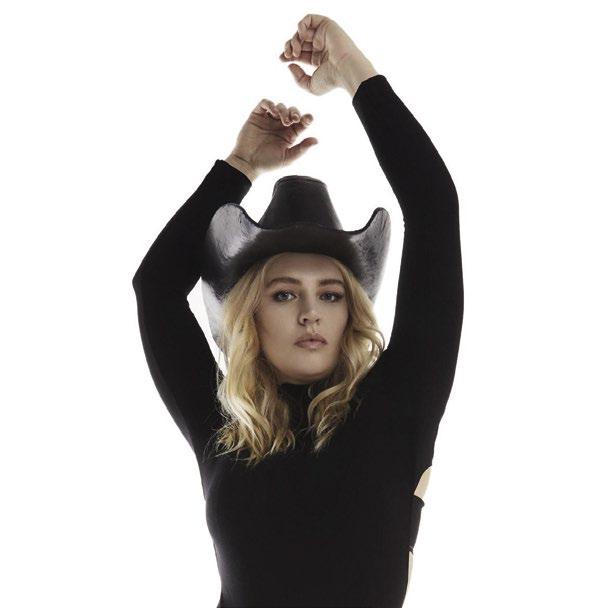
When: Tuesday 2 November, 6.30pm
Where: Motorpoint Arena
How Much: From £38.23
Despite the name, London Grammar are an indie pop band that were actually formed in Nottingham in 2009. Now, the three piece group are heading back to the East Midlands for their tour at the Motorpoint Arena. The tour will feature songs from their third studio album Californian Soil, which has been described as their most confident yet. This is the perfect gig for all the indie lovers out there.
Nottingham Comedy Festival


When: Friday 12 NovemberSunday 21 November
Where: Various
How Much: Various Prices
As the weather gets increasingly grey, you can brighten up your month by checking out the Nottingham Comedy Festival this November. Taking place over most of November, and packed with local, national and international comedians including Alfie Moore, Catherine Bohart, and Sarah Keyworth, this festival will feature comedy of all styles, including stand up, improv and sketch to name just a few.
Surge
When: Saturday 13 November, 3pm and 6pm
Where: Djanogly Theatre
How Much: £10
Continuing with their trend of experimental performances, Lakeside is hosting Surge. The piece is part of the wider project FACETS in which artists use creative technology to interact with the audience. Surge is a visual art piece focusing on dance, performed on top of a digitally projected landscape, and complemented with an electronic musical score put together by Ital Tek. Sounds intriguing.
Henry Normal
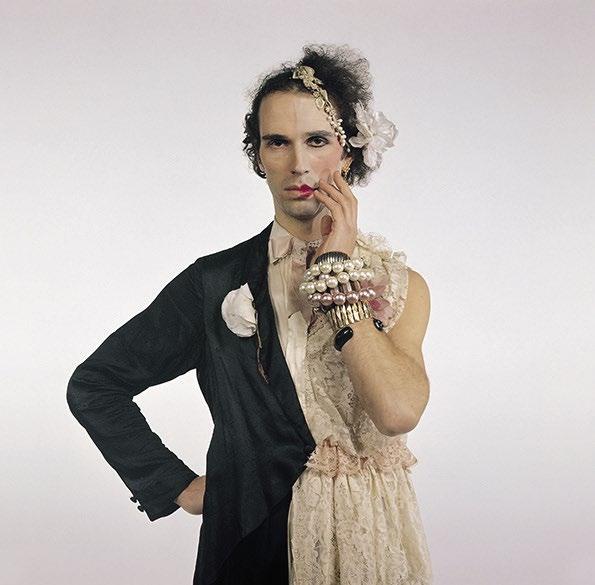
When: Tuesday 16 November, 7pm
Where: Metronome
How Much: £14.50
Writer, poet and producer Henry Normal is bringing his new show The Escape Plan to Nottingham’s Metronome. Normal, who founded the Nottingham Poetry Festival in 2017, will be taking his show on tour across the country. The show will be a mixture of stories, jokes and poetry, drawing on his life as a writer and his popular BBC Four show. Having been described as effortlessly funny, The Escape Plan is a light hearted as well as literary affair.
When: Thursday 25 November, 7pm
Where: Metronome
How Much: £15
Known for her absolute bops, including Moody, Prioritise Pleasure and I Do This All The Time, the experimental pop artist Rebecca Lucy Taylor (aka Self Esteem) is coming to Nottingham. Refusing to conform to anyone else's ideas of womanhood, Rebecca’s music is all about embracing the power behind your femininity, bodily autonomy, and celebrating your sexuality.
When: Saturday 27 November, 7pm
Where: Motorpoint Arena
How Much: From £29.75
Following our interview with frontman Jason Williamson last month, it seems right to mention the Sleaford Mods’ first headlining arena gig at the Motorpoint. The post-punk band have played Rock City countless times before but are now ready to take it to the next level. The tour will be packed with songs from their latest album Spare Ribs, so for anyone wanting to let out some righteous anger, check this one out.
